Quick filters:
Capital of assyria Stock Photos and Images
 Mesopotamia. City of Ninive, former capital of Assyria. Engraving. Liber chronicarum, 1493. Stock Photohttps://www.alamy.com/image-license-details/?v=1https://www.alamy.com/mesopotamia-city-of-ninive-former-capital-of-assyria-engraving-liber-image158189574.html
Mesopotamia. City of Ninive, former capital of Assyria. Engraving. Liber chronicarum, 1493. Stock Photohttps://www.alamy.com/image-license-details/?v=1https://www.alamy.com/mesopotamia-city-of-ninive-former-capital-of-assyria-engraving-liber-image158189574.htmlRMK5A4BJ–Mesopotamia. City of Ninive, former capital of Assyria. Engraving. Liber chronicarum, 1493.
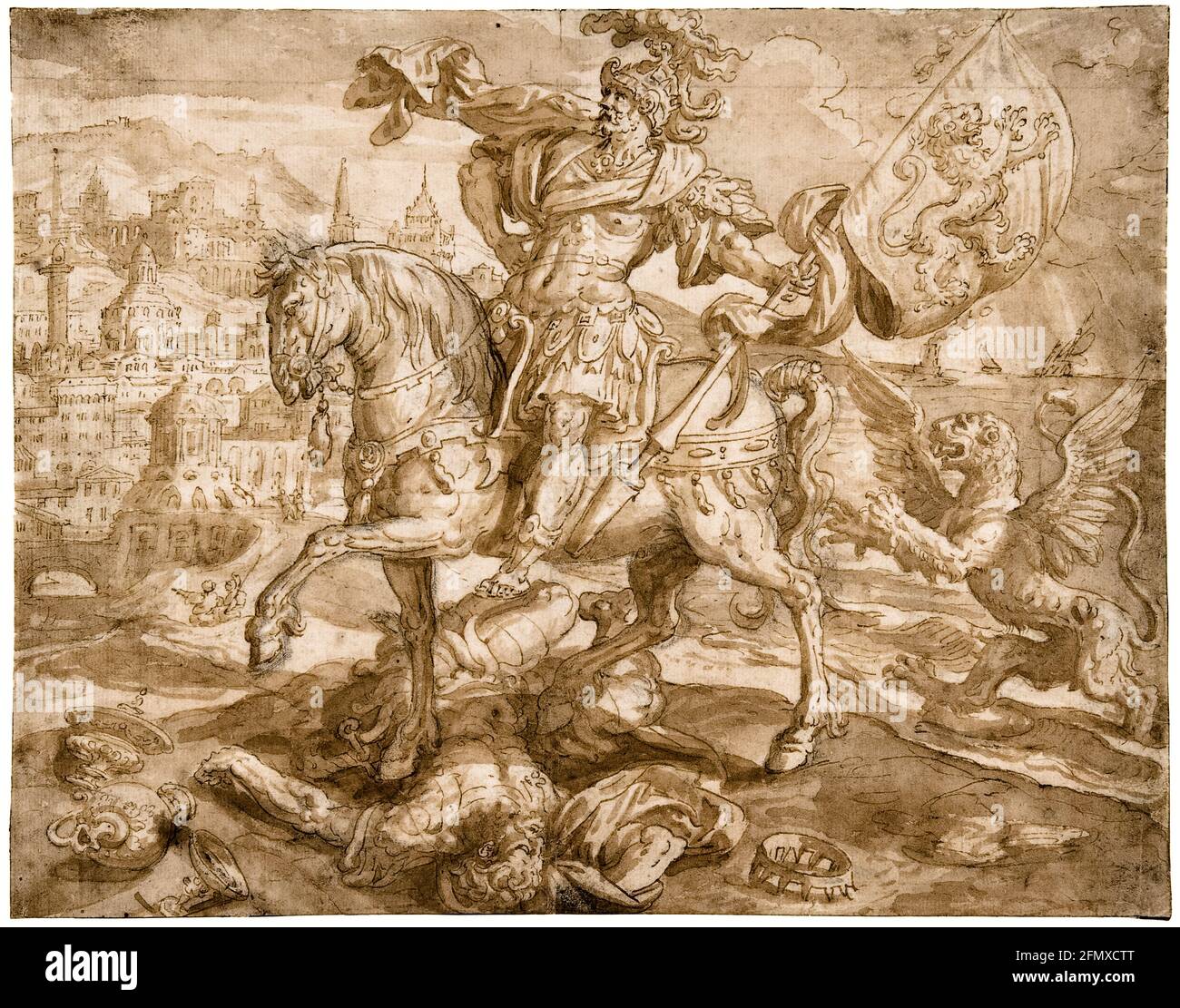 Emperor Ninus (King Ninus), mythical founder of Nineveh, ancient capital of Assyria, portrait drawing by Maerten de Vos, 1550-1603 Stock Photohttps://www.alamy.com/image-license-details/?v=1https://www.alamy.com/emperor-ninus-king-ninus-mythical-founder-of-nineveh-ancient-capital-of-assyria-portrait-drawing-by-maerten-de-vos-1550-1603-image425922808.html
Emperor Ninus (King Ninus), mythical founder of Nineveh, ancient capital of Assyria, portrait drawing by Maerten de Vos, 1550-1603 Stock Photohttps://www.alamy.com/image-license-details/?v=1https://www.alamy.com/emperor-ninus-king-ninus-mythical-founder-of-nineveh-ancient-capital-of-assyria-portrait-drawing-by-maerten-de-vos-1550-1603-image425922808.htmlRM2FMXCTT–Emperor Ninus (King Ninus), mythical founder of Nineveh, ancient capital of Assyria, portrait drawing by Maerten de Vos, 1550-1603
 Iraq. Calah. (Nimrud) 20 miles S. of Mosul, capital of Assyria in 9th and 8th cents. B.C. 1932, Iraq, Calah, Extinct city Stock Photohttps://www.alamy.com/image-license-details/?v=1https://www.alamy.com/iraq-calah-nimrud-20-miles-s-of-mosul-capital-of-assyria-in-9th-and-8th-cents-bc-1932-iraq-calah-extinct-city-image220705543.html
Iraq. Calah. (Nimrud) 20 miles S. of Mosul, capital of Assyria in 9th and 8th cents. B.C. 1932, Iraq, Calah, Extinct city Stock Photohttps://www.alamy.com/image-license-details/?v=1https://www.alamy.com/iraq-calah-nimrud-20-miles-s-of-mosul-capital-of-assyria-in-9th-and-8th-cents-bc-1932-iraq-calah-extinct-city-image220705543.htmlRMPR204R–Iraq. Calah. (Nimrud) 20 miles S. of Mosul, capital of Assyria in 9th and 8th cents. B.C. 1932, Iraq, Calah, Extinct city
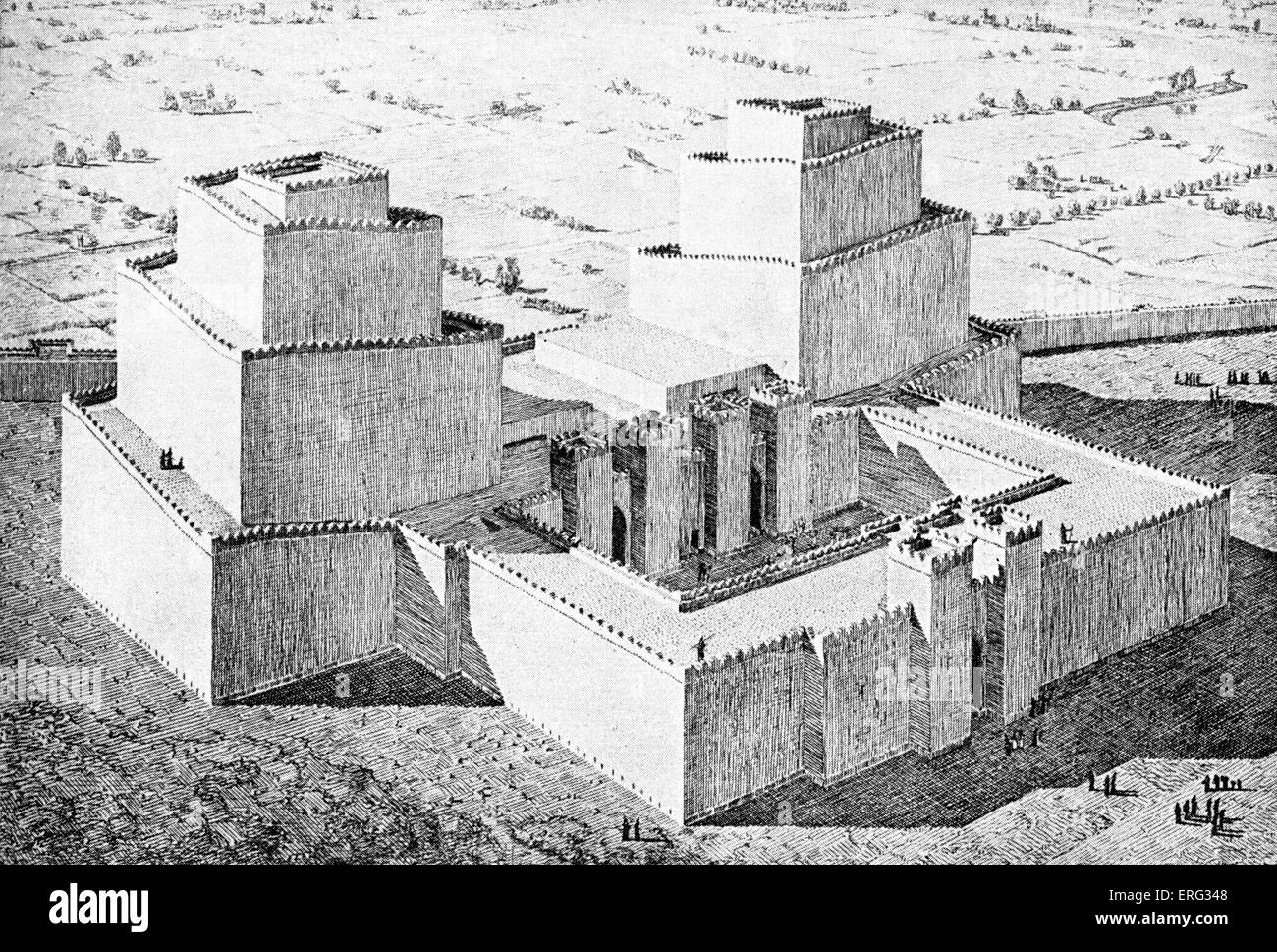 Anu-Adad Temple in Assur, ancient capital of Assyria in modern Iraq. Stock Photohttps://www.alamy.com/image-license-details/?v=1https://www.alamy.com/stock-photo-anu-adad-temple-in-assur-ancient-capital-of-assyria-in-modern-iraq-83332264.html
Anu-Adad Temple in Assur, ancient capital of Assyria in modern Iraq. Stock Photohttps://www.alamy.com/image-license-details/?v=1https://www.alamy.com/stock-photo-anu-adad-temple-in-assur-ancient-capital-of-assyria-in-modern-iraq-83332264.htmlRMERG348–Anu-Adad Temple in Assur, ancient capital of Assyria in modern Iraq.
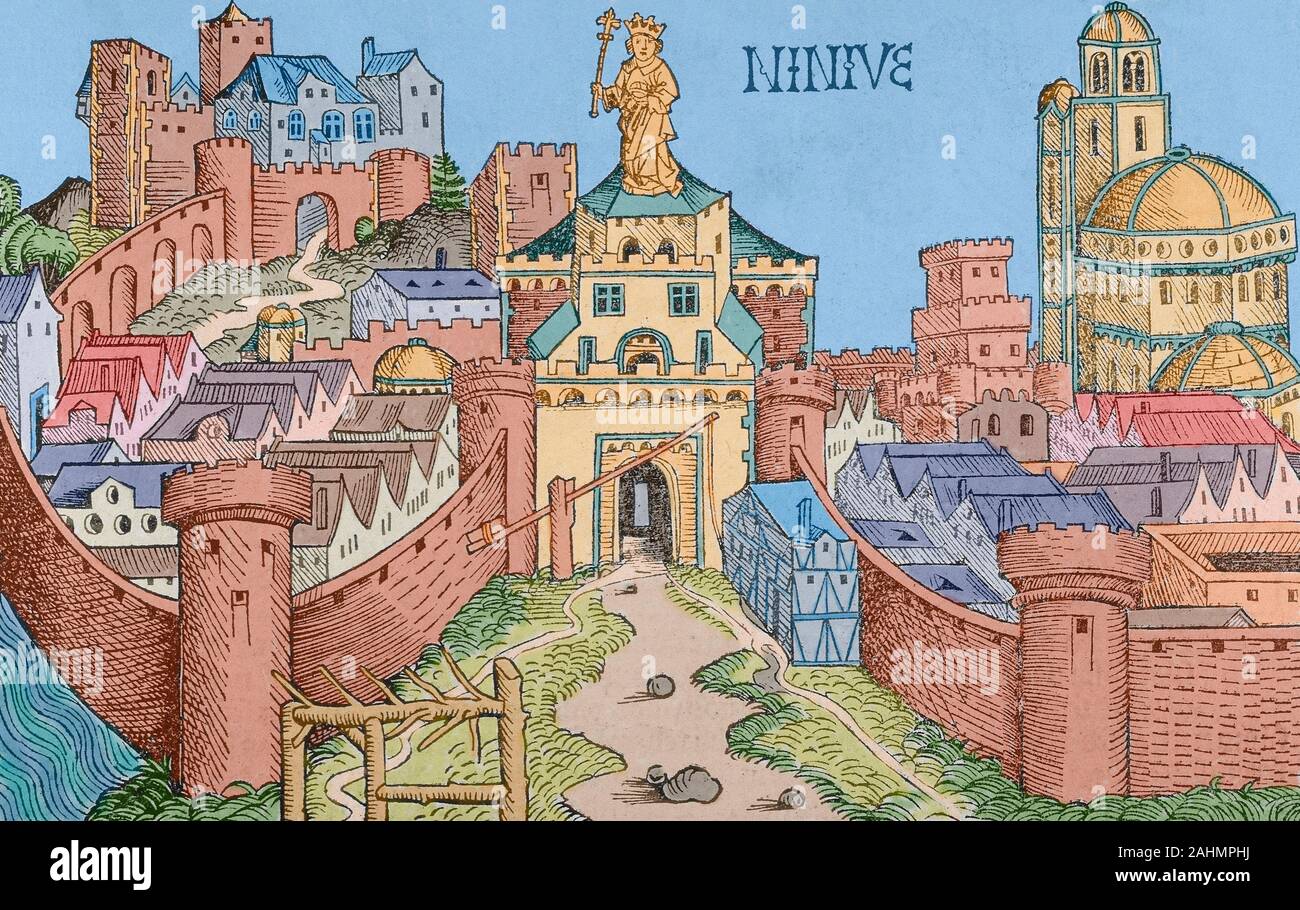 Mesopotamia. City of Nineveh, former capital of Assyria. Engraving. Liber Chronicarum by Hartmann Schedel, 1493. Later colouration. Stock Photohttps://www.alamy.com/image-license-details/?v=1https://www.alamy.com/mesopotamia-city-of-nineveh-former-capital-of-assyria-engraving-liber-chronicarum-by-hartmann-schedel-1493-later-colouration-image337902926.html
Mesopotamia. City of Nineveh, former capital of Assyria. Engraving. Liber Chronicarum by Hartmann Schedel, 1493. Later colouration. Stock Photohttps://www.alamy.com/image-license-details/?v=1https://www.alamy.com/mesopotamia-city-of-nineveh-former-capital-of-assyria-engraving-liber-chronicarum-by-hartmann-schedel-1493-later-colouration-image337902926.htmlRM2AHMPHJ–Mesopotamia. City of Nineveh, former capital of Assyria. Engraving. Liber Chronicarum by Hartmann Schedel, 1493. Later colouration.
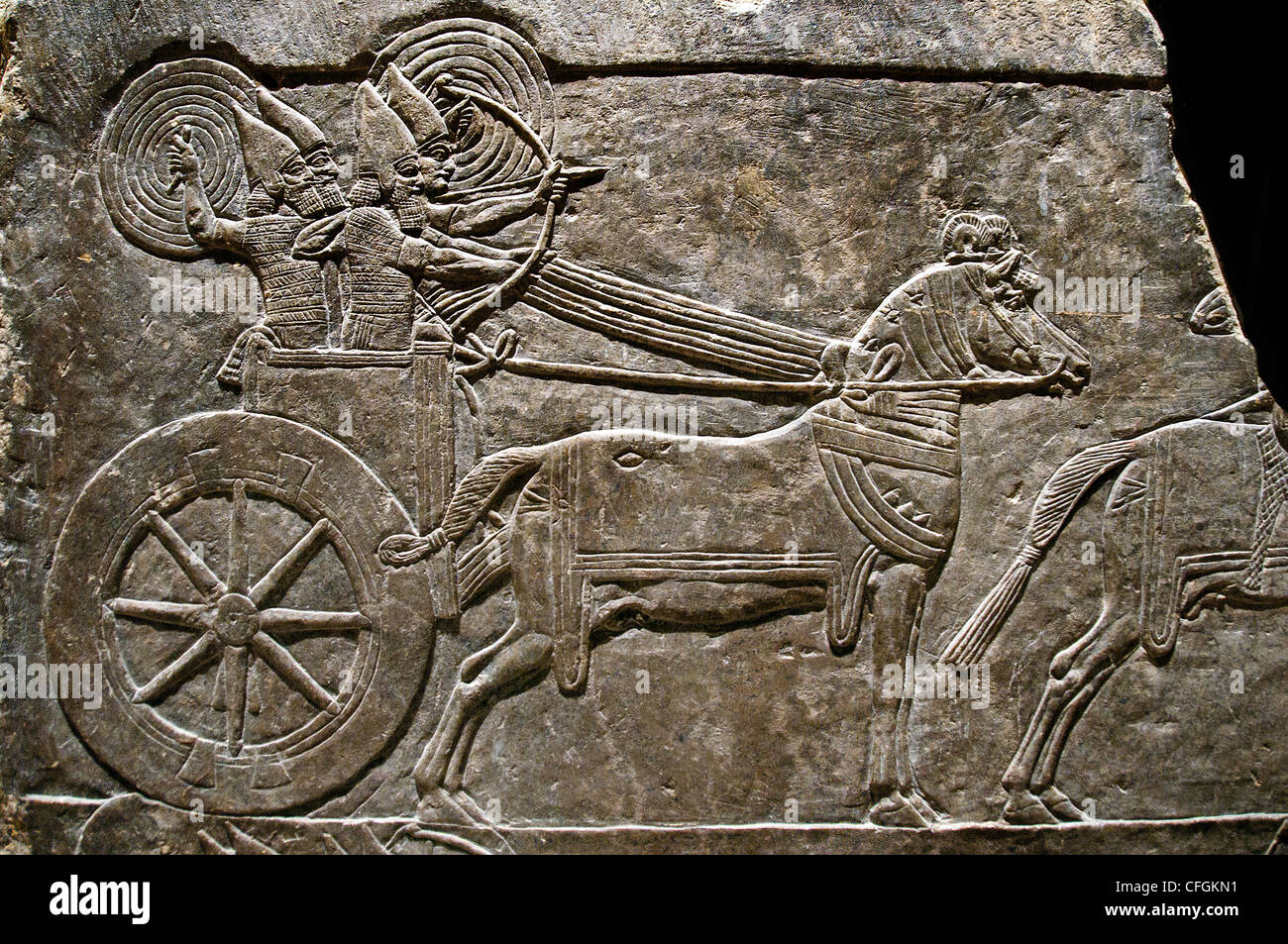 King Assurbanipal chariot Elamite prisoners Episodes country Elam 645 BC Nineveh capital Assyrian Assyria Mesopotamia Iraq Stock Photohttps://www.alamy.com/image-license-details/?v=1https://www.alamy.com/stock-photo-king-assurbanipal-chariot-elamite-prisoners-episodes-country-elam-44007293.html
King Assurbanipal chariot Elamite prisoners Episodes country Elam 645 BC Nineveh capital Assyrian Assyria Mesopotamia Iraq Stock Photohttps://www.alamy.com/image-license-details/?v=1https://www.alamy.com/stock-photo-king-assurbanipal-chariot-elamite-prisoners-episodes-country-elam-44007293.htmlRMCFGKN1–King Assurbanipal chariot Elamite prisoners Episodes country Elam 645 BC Nineveh capital Assyrian Assyria Mesopotamia Iraq
 Iraq. Calah. (Nimrud) 20 miles S. of Mosul, capital of Assyria in 9th and 8th cents. B.C. Stock Photohttps://www.alamy.com/image-license-details/?v=1https://www.alamy.com/iraq-calah-nimrud-20-miles-s-of-mosul-capital-of-assyria-in-9th-and-8th-cents-bc-image269931262.html
Iraq. Calah. (Nimrud) 20 miles S. of Mosul, capital of Assyria in 9th and 8th cents. B.C. Stock Photohttps://www.alamy.com/image-license-details/?v=1https://www.alamy.com/iraq-calah-nimrud-20-miles-s-of-mosul-capital-of-assyria-in-9th-and-8th-cents-bc-image269931262.htmlRMWK4C26–Iraq. Calah. (Nimrud) 20 miles S. of Mosul, capital of Assyria in 9th and 8th cents. B.C.
 Ashur (quala'at Sha) Iraq Founded In 3rd Millennium First Capital Of Assyria Stock Photohttps://www.alamy.com/image-license-details/?v=1https://www.alamy.com/stock-photo-ashur-qualaat-sha-iraq-founded-in-3rd-millennium-first-capital-of-94592027.html
Ashur (quala'at Sha) Iraq Founded In 3rd Millennium First Capital Of Assyria Stock Photohttps://www.alamy.com/image-license-details/?v=1https://www.alamy.com/stock-photo-ashur-qualaat-sha-iraq-founded-in-3rd-millennium-first-capital-of-94592027.htmlRMFDW12K–Ashur (quala'at Sha) Iraq Founded In 3rd Millennium First Capital Of Assyria
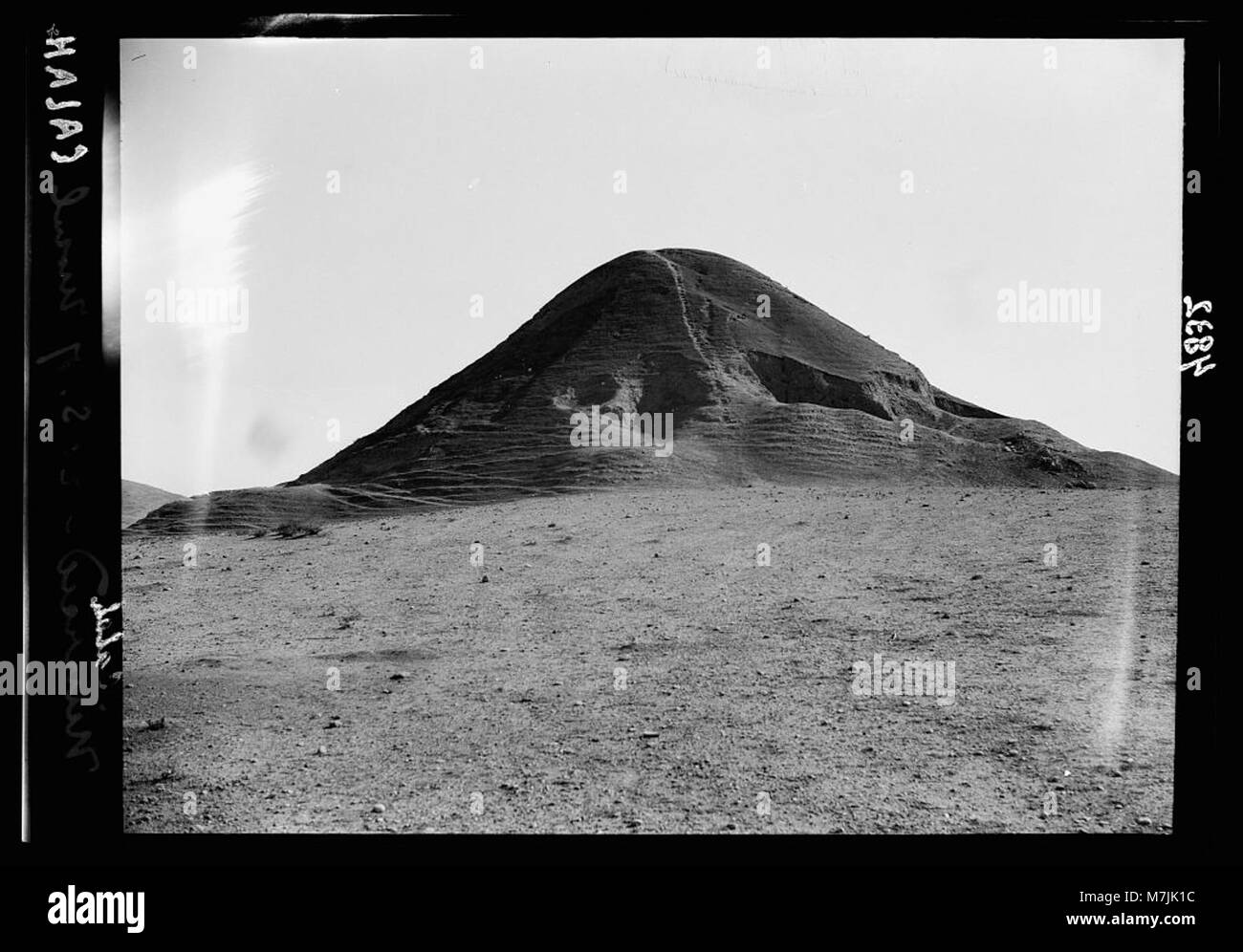 Iraq. Calah. (Nimrud) 20 miles S. of Mosul, capital of Assyria in 9th and 8th cents. B.C. LOC matpc.16230 Stock Photohttps://www.alamy.com/image-license-details/?v=1https://www.alamy.com/stock-photo-iraq-calah-nimrud-20-miles-s-of-mosul-capital-of-assyria-in-9th-and-176816344.html
Iraq. Calah. (Nimrud) 20 miles S. of Mosul, capital of Assyria in 9th and 8th cents. B.C. LOC matpc.16230 Stock Photohttps://www.alamy.com/image-license-details/?v=1https://www.alamy.com/stock-photo-iraq-calah-nimrud-20-miles-s-of-mosul-capital-of-assyria-in-9th-and-176816344.htmlRMM7JK1C–Iraq. Calah. (Nimrud) 20 miles S. of Mosul, capital of Assyria in 9th and 8th cents. B.C. LOC matpc.16230
 Nimrud Iraq Bas Relief Slabs With Cuneiform Inscriptions The Second Capital Of Assyria Know In The Old Testament As Caleh Stock Photohttps://www.alamy.com/image-license-details/?v=1https://www.alamy.com/stock-photo-nimrud-iraq-bas-relief-slabs-with-cuneiform-inscriptions-the-second-22077337.html
Nimrud Iraq Bas Relief Slabs With Cuneiform Inscriptions The Second Capital Of Assyria Know In The Old Testament As Caleh Stock Photohttps://www.alamy.com/image-license-details/?v=1https://www.alamy.com/stock-photo-nimrud-iraq-bas-relief-slabs-with-cuneiform-inscriptions-the-second-22077337.htmlRMB7WKT9–Nimrud Iraq Bas Relief Slabs With Cuneiform Inscriptions The Second Capital Of Assyria Know In The Old Testament As Caleh
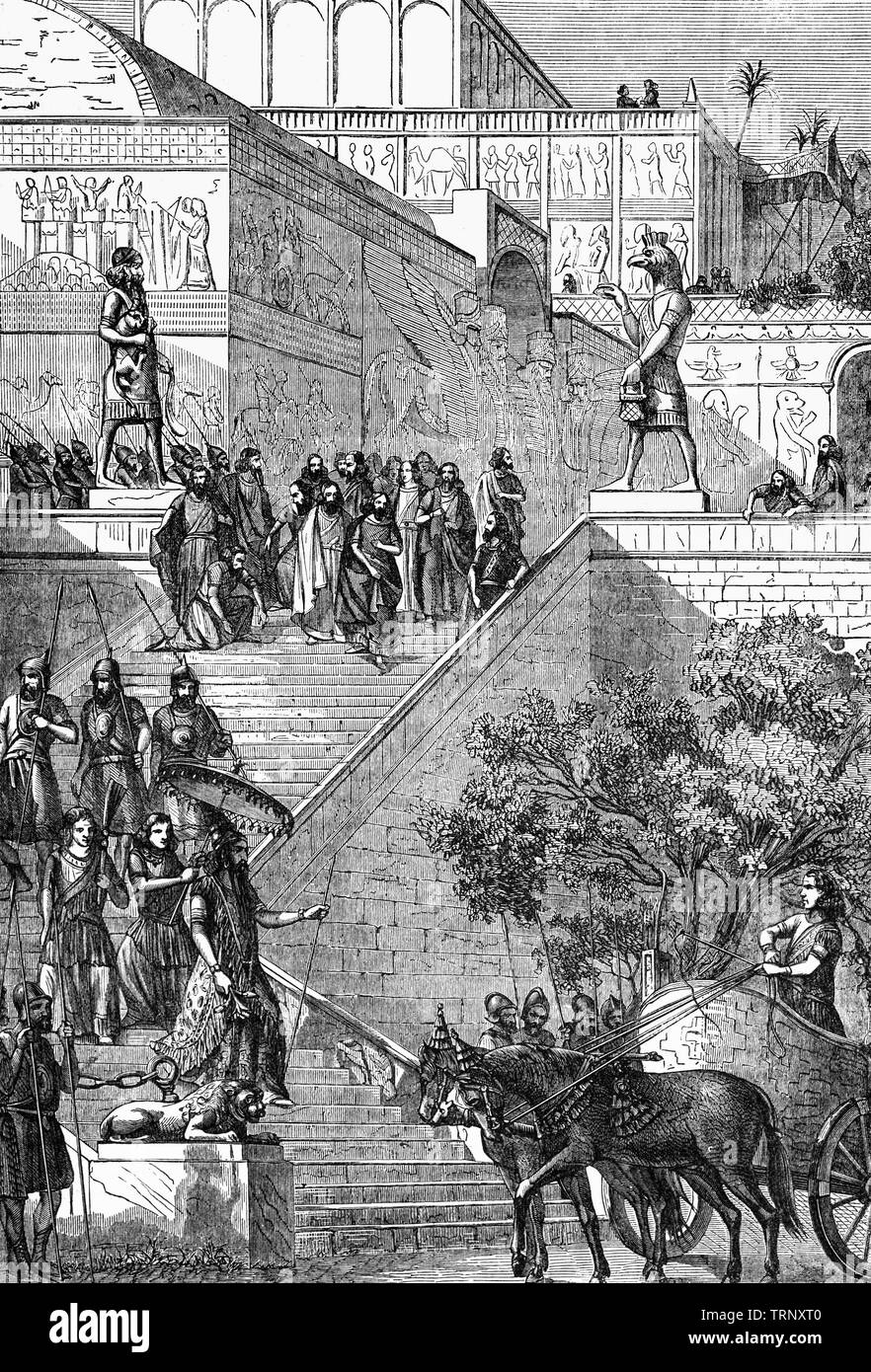 The Palace of Kouyunjik (Kuyuncuk), in Nineveh, an ancient Assyrian city of Upper Mesopotamia, located on the outskirts of Mosul in modern-day northern Iraq. It is located on the eastern bank of the Tigris River, and was the capital of the Neo-Assyrian Empire. Nineveh was the largest city in the world for some fifty years until the year 612 BC when, after a bitter period of civil war in Assyria, it was sacked by a coalition of its former subject peoples, the Babylonians, Medes, Chaldeans, Persians, Scythians and Cimmerians. Stock Photohttps://www.alamy.com/image-license-details/?v=1https://www.alamy.com/the-palace-of-kouyunjik-kuyuncuk-in-nineveh-an-ancient-assyrian-city-of-upper-mesopotamia-located-on-the-outskirts-of-mosul-in-modern-day-northern-iraq-it-is-located-on-the-eastern-bank-of-the-tigris-river-and-was-the-capital-of-the-neo-assyrian-empire-nineveh-was-the-largest-city-in-the-world-for-some-fifty-years-until-the-year-612-bc-when-after-a-bitter-period-of-civil-war-in-assyria-it-was-sacked-by-a-coalition-of-its-former-subject-peoples-the-babylonians-medes-chaldeans-persians-scythians-and-cimmerians-image255564288.html
The Palace of Kouyunjik (Kuyuncuk), in Nineveh, an ancient Assyrian city of Upper Mesopotamia, located on the outskirts of Mosul in modern-day northern Iraq. It is located on the eastern bank of the Tigris River, and was the capital of the Neo-Assyrian Empire. Nineveh was the largest city in the world for some fifty years until the year 612 BC when, after a bitter period of civil war in Assyria, it was sacked by a coalition of its former subject peoples, the Babylonians, Medes, Chaldeans, Persians, Scythians and Cimmerians. Stock Photohttps://www.alamy.com/image-license-details/?v=1https://www.alamy.com/the-palace-of-kouyunjik-kuyuncuk-in-nineveh-an-ancient-assyrian-city-of-upper-mesopotamia-located-on-the-outskirts-of-mosul-in-modern-day-northern-iraq-it-is-located-on-the-eastern-bank-of-the-tigris-river-and-was-the-capital-of-the-neo-assyrian-empire-nineveh-was-the-largest-city-in-the-world-for-some-fifty-years-until-the-year-612-bc-when-after-a-bitter-period-of-civil-war-in-assyria-it-was-sacked-by-a-coalition-of-its-former-subject-peoples-the-babylonians-medes-chaldeans-persians-scythians-and-cimmerians-image255564288.htmlRMTRNXT0–The Palace of Kouyunjik (Kuyuncuk), in Nineveh, an ancient Assyrian city of Upper Mesopotamia, located on the outskirts of Mosul in modern-day northern Iraq. It is located on the eastern bank of the Tigris River, and was the capital of the Neo-Assyrian Empire. Nineveh was the largest city in the world for some fifty years until the year 612 BC when, after a bitter period of civil war in Assyria, it was sacked by a coalition of its former subject peoples, the Babylonians, Medes, Chaldeans, Persians, Scythians and Cimmerians.
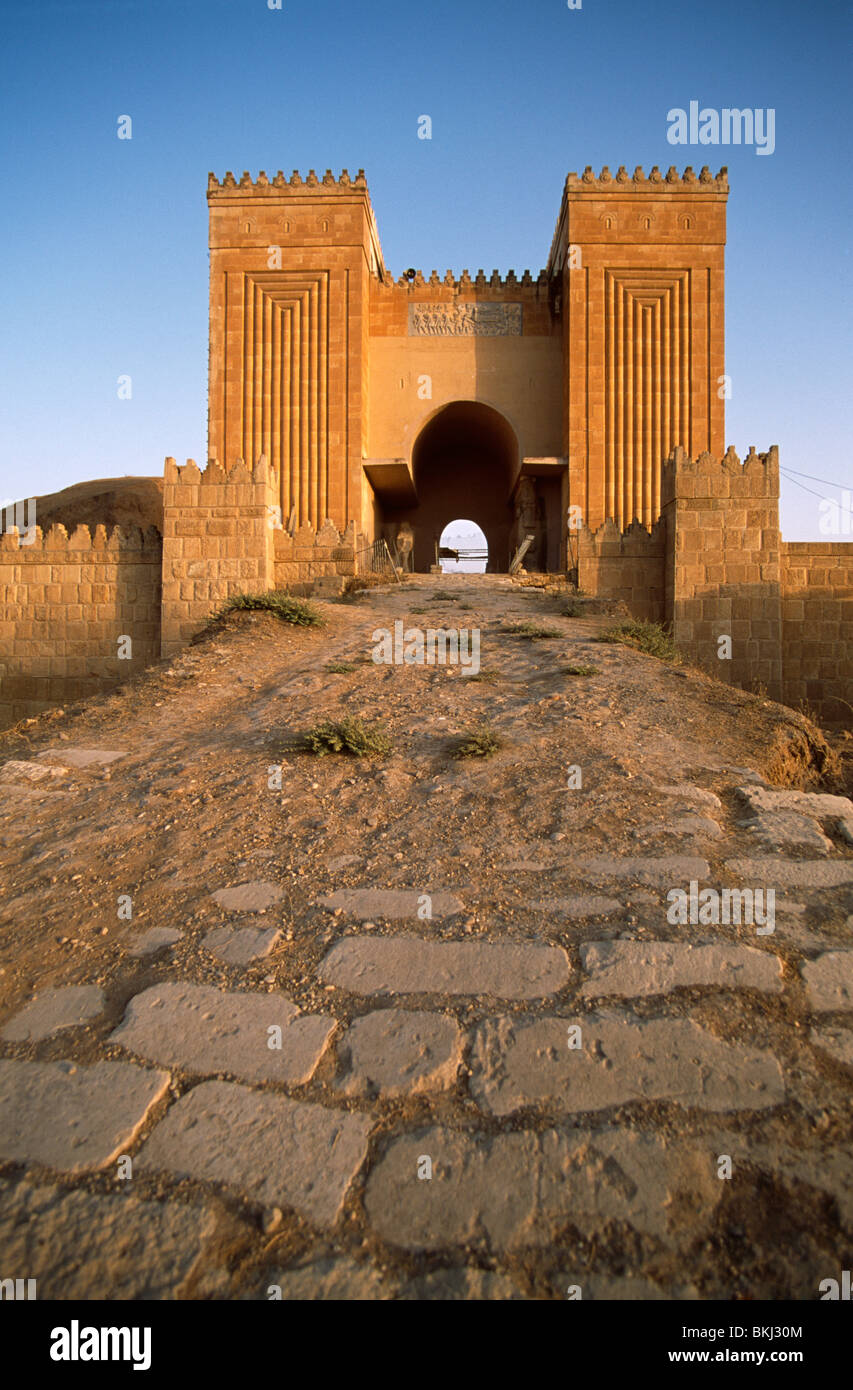 Mosul Iraq Gate Of Ancient Nievah 3rd Capital Of Assyria Ruled By Famous Kings - Sargon Ii Sennacherib & Assurbananipal Stock Photohttps://www.alamy.com/image-license-details/?v=1https://www.alamy.com/stock-photo-mosul-iraq-gate-of-ancient-nievah-3rd-capital-of-assyria-ruled-by-29286340.html
Mosul Iraq Gate Of Ancient Nievah 3rd Capital Of Assyria Ruled By Famous Kings - Sargon Ii Sennacherib & Assurbananipal Stock Photohttps://www.alamy.com/image-license-details/?v=1https://www.alamy.com/stock-photo-mosul-iraq-gate-of-ancient-nievah-3rd-capital-of-assyria-ruled-by-29286340.htmlRMBKJ30M–Mosul Iraq Gate Of Ancient Nievah 3rd Capital Of Assyria Ruled By Famous Kings - Sargon Ii Sennacherib & Assurbananipal
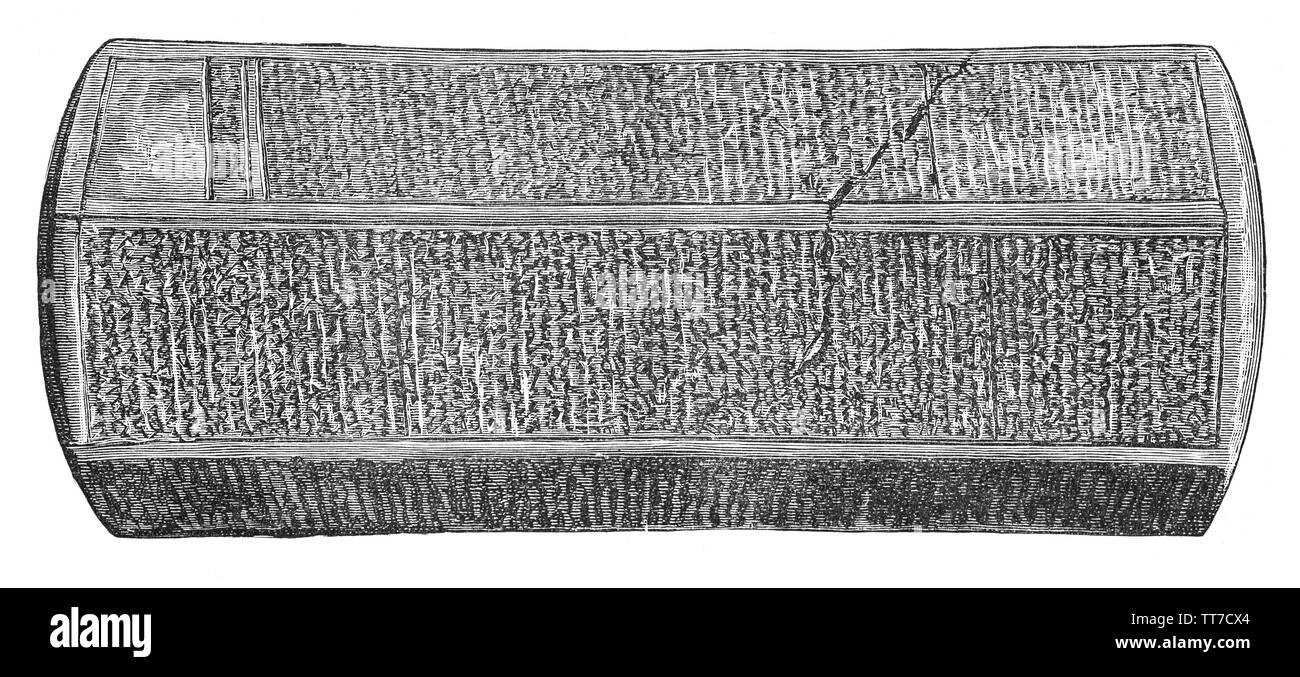 The six-sided hexagonal clay prism, commonly known as the Taylor Prism, was discovered among the ruins of Nineveh, the ancient capital of the Assyrian Empire. It contains the Annals of Sennacherib, the Assyrian king who had besieged Jerusalem in 701 BC during the reign of king Hezekiah. The Taylor Prism was discovered among the ruins of ancient Nineveh by Colonel Taylor in 1830 Stock Photohttps://www.alamy.com/image-license-details/?v=1https://www.alamy.com/the-six-sided-hexagonal-clay-prism-commonly-known-as-the-taylor-prism-was-discovered-among-the-ruins-of-nineveh-the-ancient-capital-of-the-assyrian-empire-it-contains-the-annals-of-sennacherib-the-assyrian-king-who-had-besieged-jerusalem-in-701-bc-during-the-reign-of-king-hezekiah-the-taylor-prism-was-discovered-among-the-ruins-of-ancient-nineveh-by-colonel-taylor-in-1830-image255860700.html
The six-sided hexagonal clay prism, commonly known as the Taylor Prism, was discovered among the ruins of Nineveh, the ancient capital of the Assyrian Empire. It contains the Annals of Sennacherib, the Assyrian king who had besieged Jerusalem in 701 BC during the reign of king Hezekiah. The Taylor Prism was discovered among the ruins of ancient Nineveh by Colonel Taylor in 1830 Stock Photohttps://www.alamy.com/image-license-details/?v=1https://www.alamy.com/the-six-sided-hexagonal-clay-prism-commonly-known-as-the-taylor-prism-was-discovered-among-the-ruins-of-nineveh-the-ancient-capital-of-the-assyrian-empire-it-contains-the-annals-of-sennacherib-the-assyrian-king-who-had-besieged-jerusalem-in-701-bc-during-the-reign-of-king-hezekiah-the-taylor-prism-was-discovered-among-the-ruins-of-ancient-nineveh-by-colonel-taylor-in-1830-image255860700.htmlRMTT7CX4–The six-sided hexagonal clay prism, commonly known as the Taylor Prism, was discovered among the ruins of Nineveh, the ancient capital of the Assyrian Empire. It contains the Annals of Sennacherib, the Assyrian king who had besieged Jerusalem in 701 BC during the reign of king Hezekiah. The Taylor Prism was discovered among the ruins of ancient Nineveh by Colonel Taylor in 1830
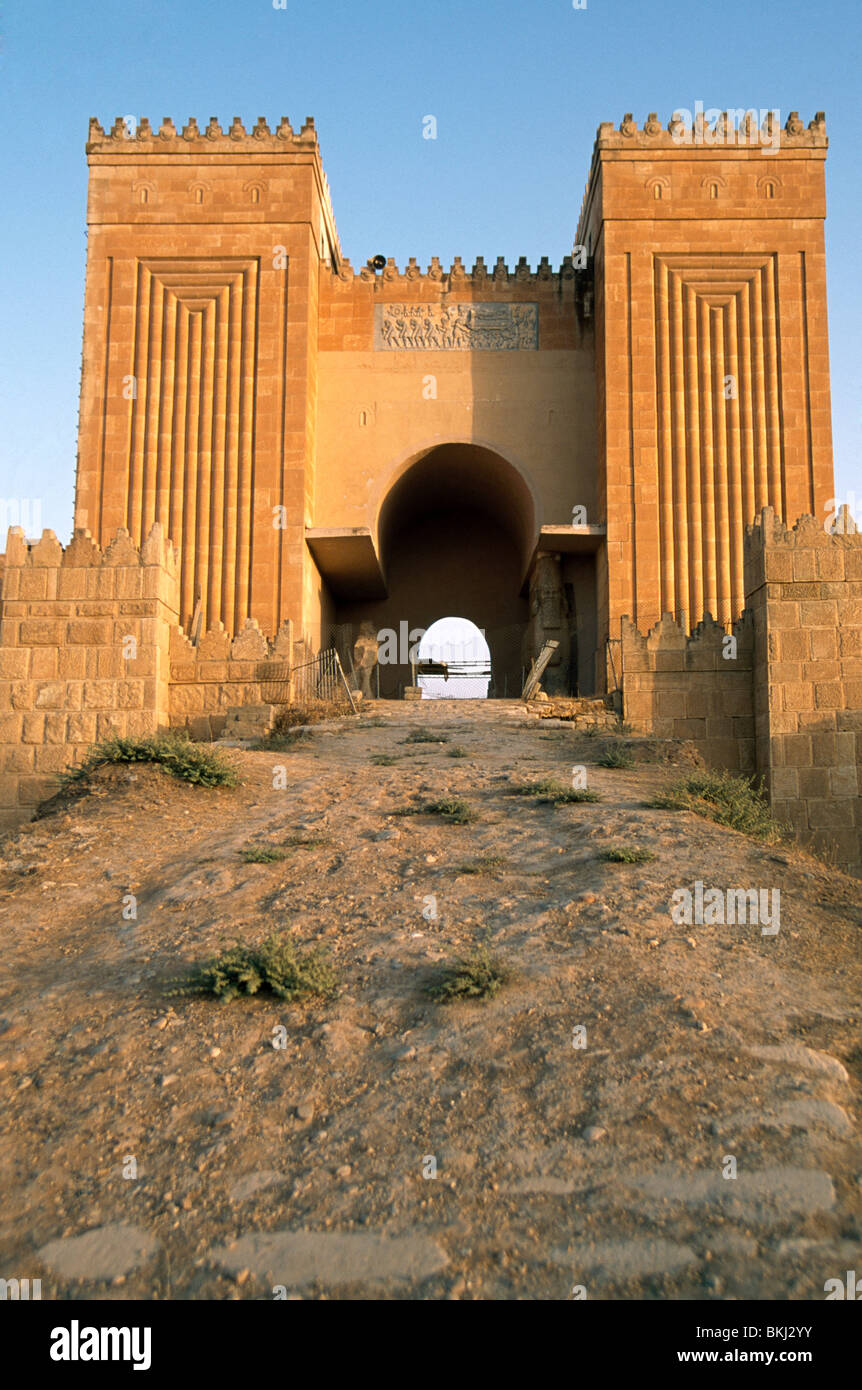 Mosul Iraq Gate Of Ancient Nievah 3rd Capital Of Assyria Ruled By Famous Kings - Sargon Ii Sennacherib & Assurbananipal Stock Photohttps://www.alamy.com/image-license-details/?v=1https://www.alamy.com/stock-photo-mosul-iraq-gate-of-ancient-nievah-3rd-capital-of-assyria-ruled-by-29286319.html
Mosul Iraq Gate Of Ancient Nievah 3rd Capital Of Assyria Ruled By Famous Kings - Sargon Ii Sennacherib & Assurbananipal Stock Photohttps://www.alamy.com/image-license-details/?v=1https://www.alamy.com/stock-photo-mosul-iraq-gate-of-ancient-nievah-3rd-capital-of-assyria-ruled-by-29286319.htmlRMBKJ2YY–Mosul Iraq Gate Of Ancient Nievah 3rd Capital Of Assyria Ruled By Famous Kings - Sargon Ii Sennacherib & Assurbananipal
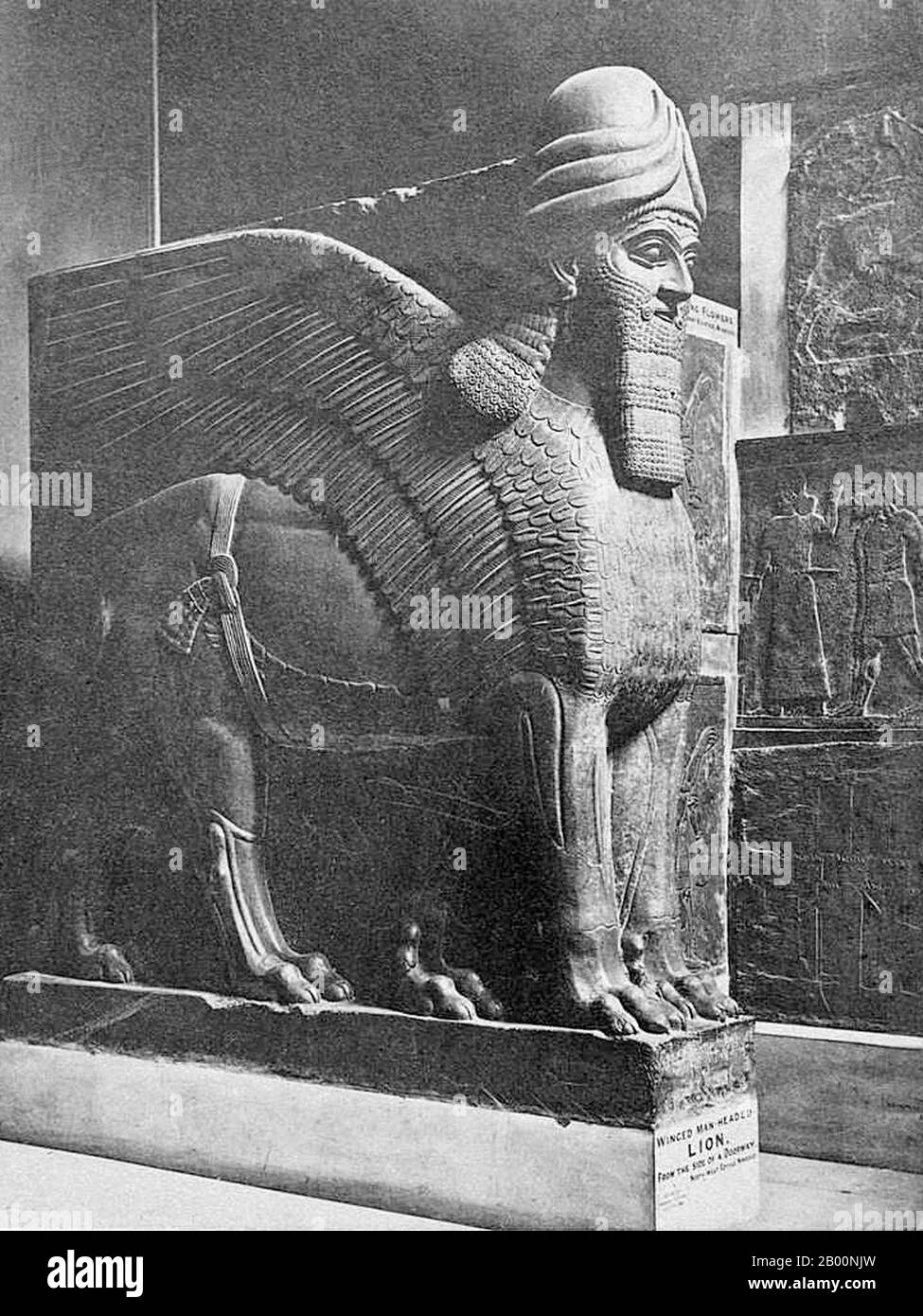 Iraq: Stone portal guardian or Lamassu (mythical winged guardian) from Nimrud, Assyria; statue of a lion with wings and head of a bearded man. Assyrian king Shalmaneser I ordered the founding of Nimrud, which existed for about 1,000 years as the capital in the 13th century BCE. The city gained fame when king Ashurnasirpal II of Assyria (c. 880 BCE) made it his capital. He built a large palace and temples on the site of an earlier city that had long fallen into ruins. Stock Photohttps://www.alamy.com/image-license-details/?v=1https://www.alamy.com/iraq-stone-portal-guardian-or-lamassu-mythical-winged-guardian-from-nimrud-assyria-statue-of-a-lion-with-wings-and-head-of-a-bearded-man-assyrian-king-shalmaneser-i-ordered-the-founding-of-nimrud-which-existed-for-about-1000-years-as-the-capital-in-the-13th-century-bce-the-city-gained-fame-when-king-ashurnasirpal-ii-of-assyria-c-880-bce-made-it-his-capital-he-built-a-large-palace-and-temples-on-the-site-of-an-earlier-city-that-had-long-fallen-into-ruins-image344224353.html
Iraq: Stone portal guardian or Lamassu (mythical winged guardian) from Nimrud, Assyria; statue of a lion with wings and head of a bearded man. Assyrian king Shalmaneser I ordered the founding of Nimrud, which existed for about 1,000 years as the capital in the 13th century BCE. The city gained fame when king Ashurnasirpal II of Assyria (c. 880 BCE) made it his capital. He built a large palace and temples on the site of an earlier city that had long fallen into ruins. Stock Photohttps://www.alamy.com/image-license-details/?v=1https://www.alamy.com/iraq-stone-portal-guardian-or-lamassu-mythical-winged-guardian-from-nimrud-assyria-statue-of-a-lion-with-wings-and-head-of-a-bearded-man-assyrian-king-shalmaneser-i-ordered-the-founding-of-nimrud-which-existed-for-about-1000-years-as-the-capital-in-the-13th-century-bce-the-city-gained-fame-when-king-ashurnasirpal-ii-of-assyria-c-880-bce-made-it-his-capital-he-built-a-large-palace-and-temples-on-the-site-of-an-earlier-city-that-had-long-fallen-into-ruins-image344224353.htmlRM2B00NJW–Iraq: Stone portal guardian or Lamassu (mythical winged guardian) from Nimrud, Assyria; statue of a lion with wings and head of a bearded man. Assyrian king Shalmaneser I ordered the founding of Nimrud, which existed for about 1,000 years as the capital in the 13th century BCE. The city gained fame when king Ashurnasirpal II of Assyria (c. 880 BCE) made it his capital. He built a large palace and temples on the site of an earlier city that had long fallen into ruins.
 Archaeological Excavations at Dur-Sharrukin, present-day Khorsabad in northern Iraq. Assyrian Capital During Reign of Sargon II. Vintage or Historic Engraving or Illustration 1863 Stock Photohttps://www.alamy.com/image-license-details/?v=1https://www.alamy.com/archaeological-excavations-at-dur-sharrukin-present-day-khorsabad-in-northern-iraq-assyrian-capital-during-reign-of-sargon-ii-vintage-or-historic-engraving-or-illustration-1863-image596135632.html
Archaeological Excavations at Dur-Sharrukin, present-day Khorsabad in northern Iraq. Assyrian Capital During Reign of Sargon II. Vintage or Historic Engraving or Illustration 1863 Stock Photohttps://www.alamy.com/image-license-details/?v=1https://www.alamy.com/archaeological-excavations-at-dur-sharrukin-present-day-khorsabad-in-northern-iraq-assyrian-capital-during-reign-of-sargon-ii-vintage-or-historic-engraving-or-illustration-1863-image596135632.htmlRM2WHT928–Archaeological Excavations at Dur-Sharrukin, present-day Khorsabad in northern Iraq. Assyrian Capital During Reign of Sargon II. Vintage or Historic Engraving or Illustration 1863
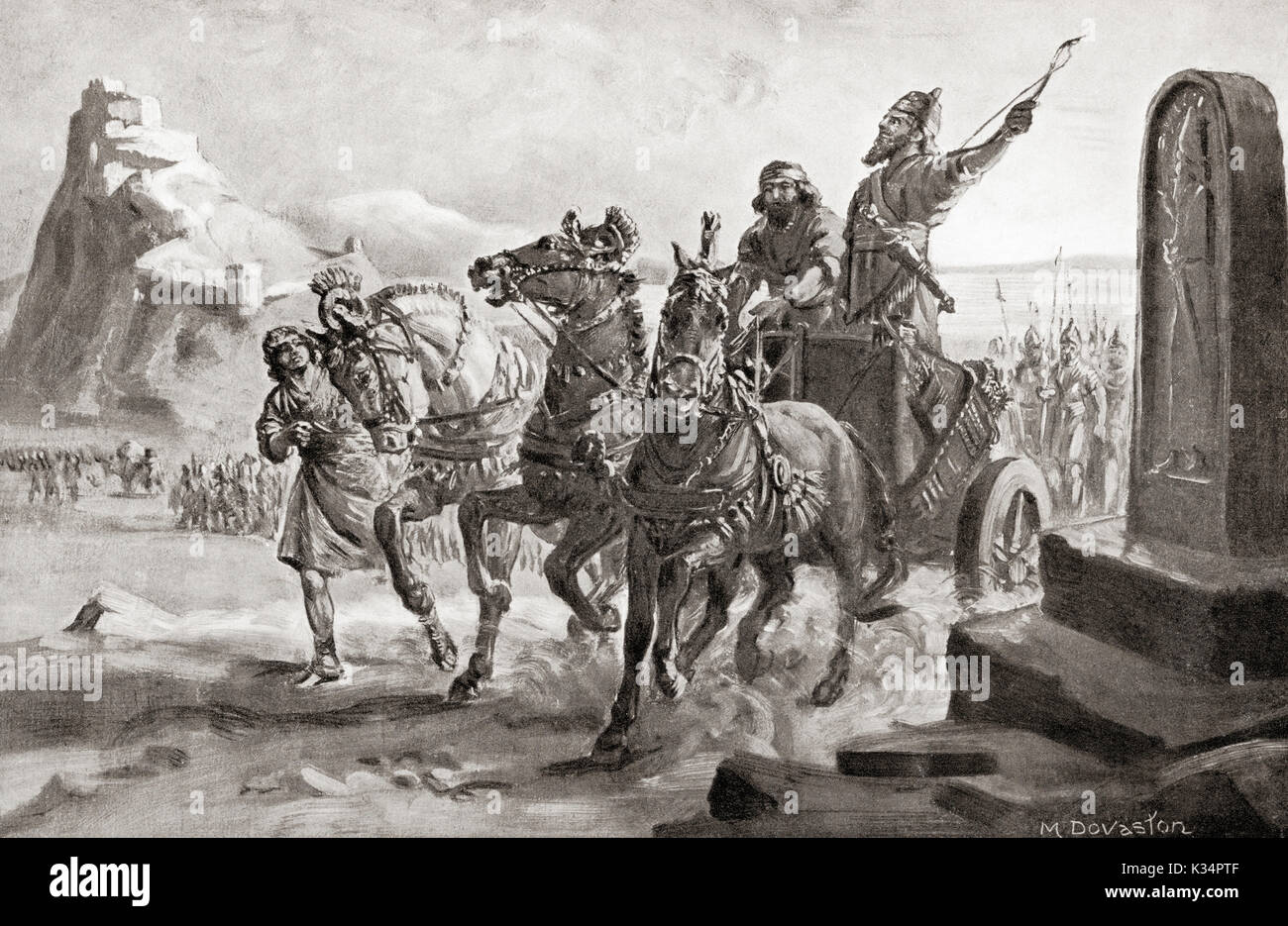 Tiglath-Pileser III before the citadel of Turushpa, capital of the Kingdom of Urartu, after his unsuccessful siege of the city in 735 BC. Tiglath-Pileser III, king of Assyria in the eighth century BC who introduced advanced civil, military, and political systems into the Neo-Assyrian Empire. After the painting by Margaret Dovaston, (1884-1954). From Hutchinson's History of the Nations, published 1915. Stock Photohttps://www.alamy.com/image-license-details/?v=1https://www.alamy.com/tiglath-pileser-iii-before-the-citadel-of-turushpa-capital-of-the-image156843023.html
Tiglath-Pileser III before the citadel of Turushpa, capital of the Kingdom of Urartu, after his unsuccessful siege of the city in 735 BC. Tiglath-Pileser III, king of Assyria in the eighth century BC who introduced advanced civil, military, and political systems into the Neo-Assyrian Empire. After the painting by Margaret Dovaston, (1884-1954). From Hutchinson's History of the Nations, published 1915. Stock Photohttps://www.alamy.com/image-license-details/?v=1https://www.alamy.com/tiglath-pileser-iii-before-the-citadel-of-turushpa-capital-of-the-image156843023.htmlRMK34PTF–Tiglath-Pileser III before the citadel of Turushpa, capital of the Kingdom of Urartu, after his unsuccessful siege of the city in 735 BC. Tiglath-Pileser III, king of Assyria in the eighth century BC who introduced advanced civil, military, and political systems into the Neo-Assyrian Empire. After the painting by Margaret Dovaston, (1884-1954). From Hutchinson's History of the Nations, published 1915.
 Gypsum stele of the Assyrian king Ashurnasirpal II (883-859BC) From his capital city of Nimrud (now in Iraq) 9th Century BC Stock Photohttps://www.alamy.com/image-license-details/?v=1https://www.alamy.com/stock-photo-gypsum-stele-of-the-assyrian-king-ashurnasirpal-ii-883-859bc-from-57305789.html
Gypsum stele of the Assyrian king Ashurnasirpal II (883-859BC) From his capital city of Nimrud (now in Iraq) 9th Century BC Stock Photohttps://www.alamy.com/image-license-details/?v=1https://www.alamy.com/stock-photo-gypsum-stele-of-the-assyrian-king-ashurnasirpal-ii-883-859bc-from-57305789.htmlRMD96E39–Gypsum stele of the Assyrian king Ashurnasirpal II (883-859BC) From his capital city of Nimrud (now in Iraq) 9th Century BC
 Construction of the palace at Dur-Sharrukin, Assyria, 713 BC by Sargon II of Assyria. Stock Photohttps://www.alamy.com/image-license-details/?v=1https://www.alamy.com/construction-of-the-palace-at-dur-sharrukin-assyria-713-bc-by-sargon-ii-of-assyria-image628396229.html
Construction of the palace at Dur-Sharrukin, Assyria, 713 BC by Sargon II of Assyria. Stock Photohttps://www.alamy.com/image-license-details/?v=1https://www.alamy.com/construction-of-the-palace-at-dur-sharrukin-assyria-713-bc-by-sargon-ii-of-assyria-image628396229.htmlRM2YE9WPD–Construction of the palace at Dur-Sharrukin, Assyria, 713 BC by Sargon II of Assyria.
 The 1910 caption reads: 'Winged deities - an Assyrian relief. The original is in the British Museum in London.' This genius, or demi-god, was part of a grouping of winged creatures facing a stylized tree, a scene repeated numerous times in the palace. They appear to be performing fertility rites associated with the date palm, a tree held sacred by the Assyrians because it provides food, drink, wood and shelter. This relief, once brightly painted, is a fragment from the Northwest palace built by the Assyrian king Ashirnasirpal II (883—859 BCE) in his capital city at Kalhu, now the Iraqi city of Stock Photohttps://www.alamy.com/image-license-details/?v=1https://www.alamy.com/the-1910-caption-reads-winged-deities-an-assyrian-relief-the-original-is-in-the-british-museum-in-london-this-genius-or-demi-god-was-part-of-a-grouping-of-winged-creatures-facing-a-stylized-tree-a-scene-repeated-numerous-times-in-the-palace-they-appear-to-be-performing-fertility-rites-associated-with-the-date-palm-a-tree-held-sacred-by-the-assyrians-because-it-provides-food-drink-wood-and-shelter-this-relief-once-brightly-painted-is-a-fragment-from-the-northwest-palace-built-by-the-assyrian-king-ashirnasirpal-ii-883859-bce-in-his-capital-city-at-kalhu-now-the-iraqi-city-of-image478898642.html
The 1910 caption reads: 'Winged deities - an Assyrian relief. The original is in the British Museum in London.' This genius, or demi-god, was part of a grouping of winged creatures facing a stylized tree, a scene repeated numerous times in the palace. They appear to be performing fertility rites associated with the date palm, a tree held sacred by the Assyrians because it provides food, drink, wood and shelter. This relief, once brightly painted, is a fragment from the Northwest palace built by the Assyrian king Ashirnasirpal II (883—859 BCE) in his capital city at Kalhu, now the Iraqi city of Stock Photohttps://www.alamy.com/image-license-details/?v=1https://www.alamy.com/the-1910-caption-reads-winged-deities-an-assyrian-relief-the-original-is-in-the-british-museum-in-london-this-genius-or-demi-god-was-part-of-a-grouping-of-winged-creatures-facing-a-stylized-tree-a-scene-repeated-numerous-times-in-the-palace-they-appear-to-be-performing-fertility-rites-associated-with-the-date-palm-a-tree-held-sacred-by-the-assyrians-because-it-provides-food-drink-wood-and-shelter-this-relief-once-brightly-painted-is-a-fragment-from-the-northwest-palace-built-by-the-assyrian-king-ashirnasirpal-ii-883859-bce-in-his-capital-city-at-kalhu-now-the-iraqi-city-of-image478898642.htmlRF2JR3M2X–The 1910 caption reads: 'Winged deities - an Assyrian relief. The original is in the British Museum in London.' This genius, or demi-god, was part of a grouping of winged creatures facing a stylized tree, a scene repeated numerous times in the palace. They appear to be performing fertility rites associated with the date palm, a tree held sacred by the Assyrians because it provides food, drink, wood and shelter. This relief, once brightly painted, is a fragment from the Northwest palace built by the Assyrian king Ashirnasirpal II (883—859 BCE) in his capital city at Kalhu, now the Iraqi city of
 Palace of the kings of Assyria to the city of Nineveh. Engraving, 19th century. Stock Photohttps://www.alamy.com/image-license-details/?v=1https://www.alamy.com/palace-of-the-kings-of-assyria-to-the-city-of-nineveh-engraving-19th-image61114144.html
Palace of the kings of Assyria to the city of Nineveh. Engraving, 19th century. Stock Photohttps://www.alamy.com/image-license-details/?v=1https://www.alamy.com/palace-of-the-kings-of-assyria-to-the-city-of-nineveh-engraving-19th-image61114144.htmlRMDFBYM0–Palace of the kings of Assyria to the city of Nineveh. Engraving, 19th century.
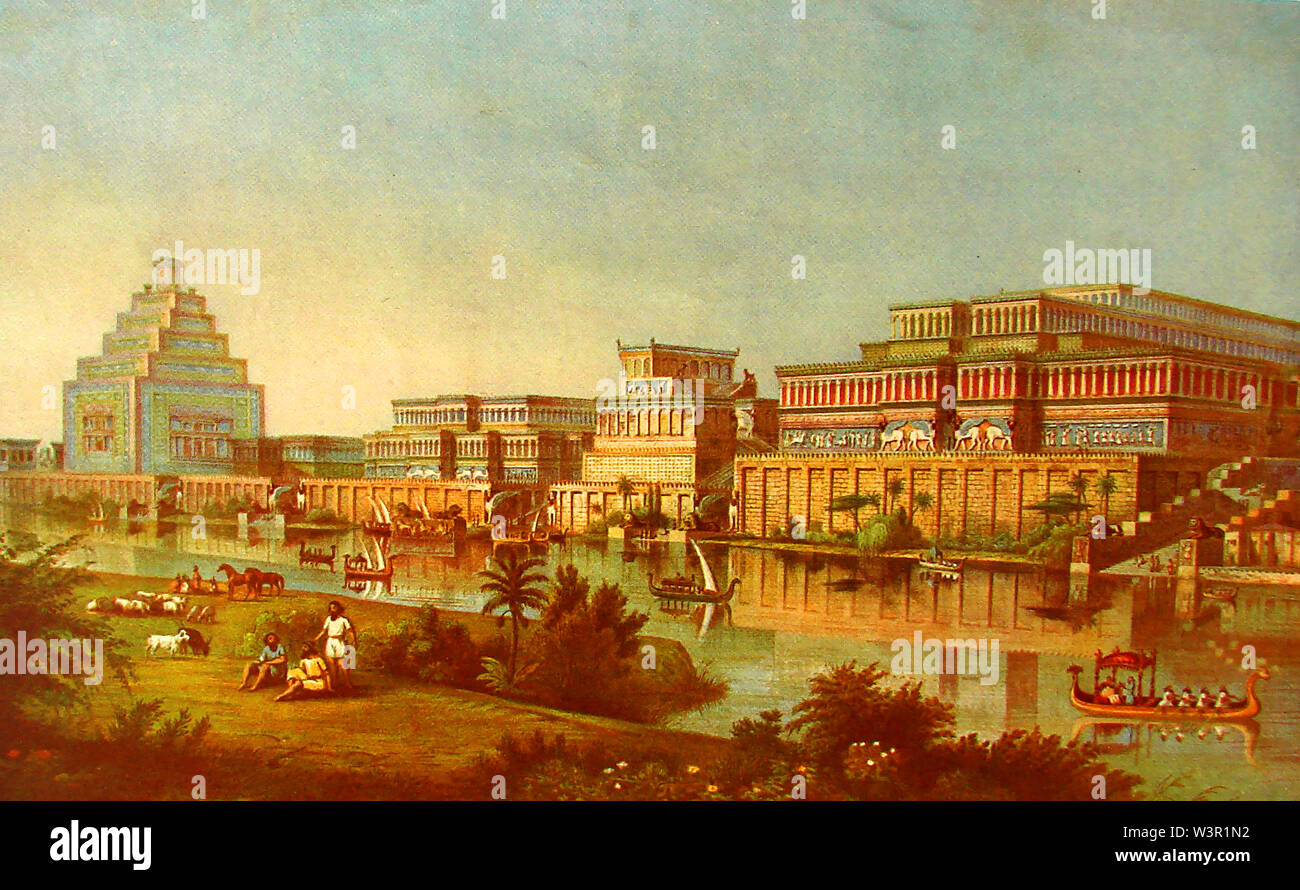 The city of Nineveh restored as it was in the days of height of Assyrian power when it was capital of the Neo-Assyrian Empire; showing the Mashki Gate Stock Photohttps://www.alamy.com/image-license-details/?v=1https://www.alamy.com/the-city-of-nineveh-restored-as-it-was-in-the-days-of-height-of-assyrian-power-when-it-was-capital-of-the-neo-assyrian-empire-showing-the-mashki-gate-image260505758.html
The city of Nineveh restored as it was in the days of height of Assyrian power when it was capital of the Neo-Assyrian Empire; showing the Mashki Gate Stock Photohttps://www.alamy.com/image-license-details/?v=1https://www.alamy.com/the-city-of-nineveh-restored-as-it-was-in-the-days-of-height-of-assyrian-power-when-it-was-capital-of-the-neo-assyrian-empire-showing-the-mashki-gate-image260505758.htmlRMW3R1N2–The city of Nineveh restored as it was in the days of height of Assyrian power when it was capital of the Neo-Assyrian Empire; showing the Mashki Gate
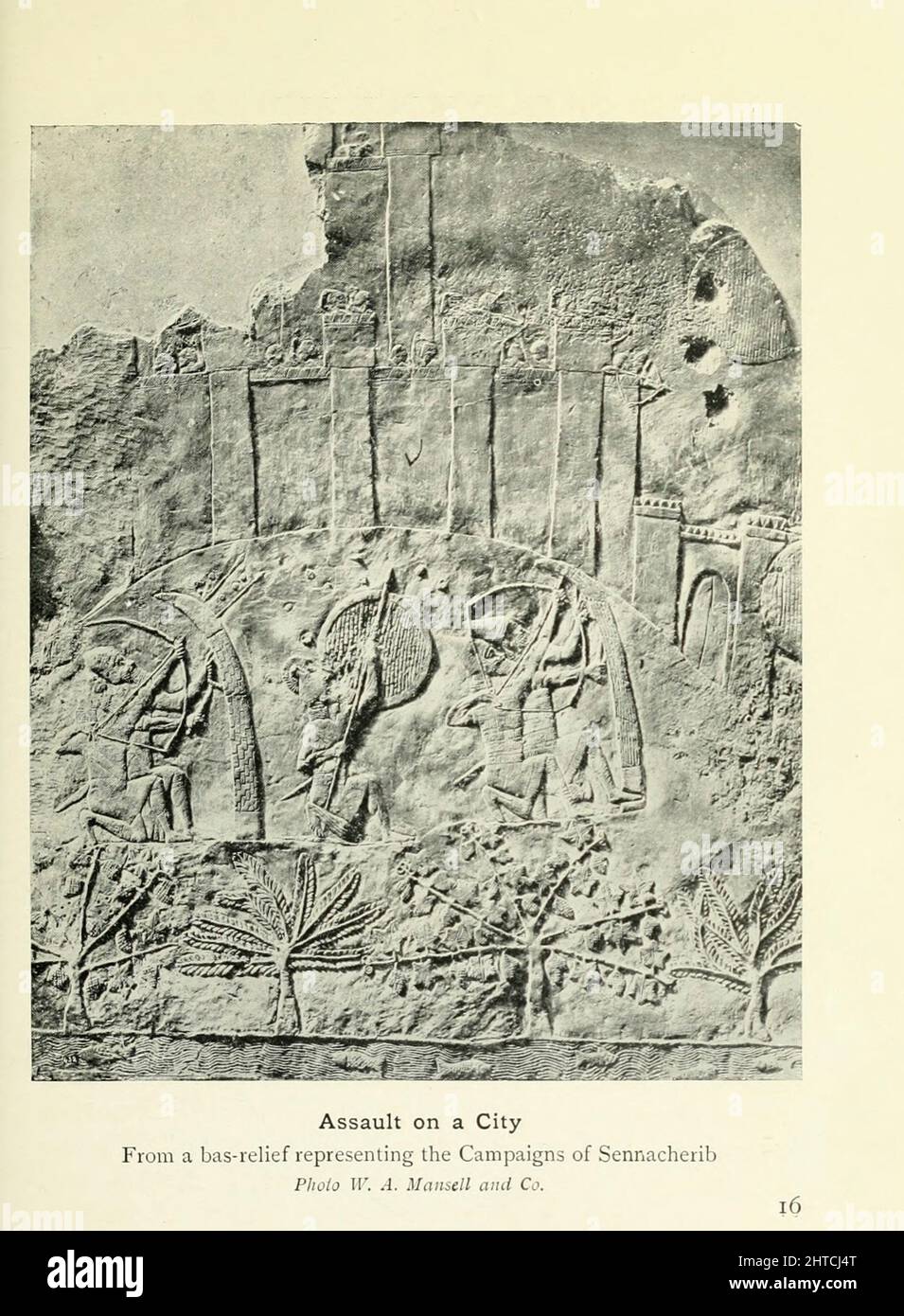 Assault on a City From a bas-relief representing the Campaigns of Sennacherib the king of the Neo-Assyrian Empire from the death of his father Sargon II in 705 BC to his own death in 681 BC. The second king of the Sargonid dynasty, Sennacherib is one of the most famous Assyrian kings for the role he plays in the Hebrew Bible, which describes his campaign in the Levant. Other events of his reign include his destruction of the city of Babylon in 689 BC and his renovation and expansion of the last great Assyrian capital, Nineveh. From the book ' Myths and legends of Babylonia & Assyria ' by Lewi Stock Photohttps://www.alamy.com/image-license-details/?v=1https://www.alamy.com/assault-on-a-city-from-a-bas-relief-representing-the-campaigns-of-sennacherib-the-king-of-the-neo-assyrian-empire-from-the-death-of-his-father-sargon-ii-in-705-bc-to-his-own-death-in-681-bc-the-second-king-of-the-sargonid-dynasty-sennacherib-is-one-of-the-most-famous-assyrian-kings-for-the-role-he-plays-in-the-hebrew-bible-which-describes-his-campaign-in-the-levant-other-events-of-his-reign-include-his-destruction-of-the-city-of-babylon-in-689-bc-and-his-renovation-and-expansion-of-the-last-great-assyrian-capital-nineveh-from-the-book-myths-and-legends-of-babylonia-assyria-by-lewi-image462498984.html
Assault on a City From a bas-relief representing the Campaigns of Sennacherib the king of the Neo-Assyrian Empire from the death of his father Sargon II in 705 BC to his own death in 681 BC. The second king of the Sargonid dynasty, Sennacherib is one of the most famous Assyrian kings for the role he plays in the Hebrew Bible, which describes his campaign in the Levant. Other events of his reign include his destruction of the city of Babylon in 689 BC and his renovation and expansion of the last great Assyrian capital, Nineveh. From the book ' Myths and legends of Babylonia & Assyria ' by Lewi Stock Photohttps://www.alamy.com/image-license-details/?v=1https://www.alamy.com/assault-on-a-city-from-a-bas-relief-representing-the-campaigns-of-sennacherib-the-king-of-the-neo-assyrian-empire-from-the-death-of-his-father-sargon-ii-in-705-bc-to-his-own-death-in-681-bc-the-second-king-of-the-sargonid-dynasty-sennacherib-is-one-of-the-most-famous-assyrian-kings-for-the-role-he-plays-in-the-hebrew-bible-which-describes-his-campaign-in-the-levant-other-events-of-his-reign-include-his-destruction-of-the-city-of-babylon-in-689-bc-and-his-renovation-and-expansion-of-the-last-great-assyrian-capital-nineveh-from-the-book-myths-and-legends-of-babylonia-assyria-by-lewi-image462498984.htmlRF2HTCJ4T–Assault on a City From a bas-relief representing the Campaigns of Sennacherib the king of the Neo-Assyrian Empire from the death of his father Sargon II in 705 BC to his own death in 681 BC. The second king of the Sargonid dynasty, Sennacherib is one of the most famous Assyrian kings for the role he plays in the Hebrew Bible, which describes his campaign in the Levant. Other events of his reign include his destruction of the city of Babylon in 689 BC and his renovation and expansion of the last great Assyrian capital, Nineveh. From the book ' Myths and legends of Babylonia & Assyria ' by Lewi
 The ruins of the ancient Hittite capital - the city of Hattusash. Photo from the mid-20th century. Stock Photohttps://www.alamy.com/image-license-details/?v=1https://www.alamy.com/the-ruins-of-the-ancient-hittite-capital-the-city-of-hattusash-photo-from-the-mid-20th-century-image604647551.html
The ruins of the ancient Hittite capital - the city of Hattusash. Photo from the mid-20th century. Stock Photohttps://www.alamy.com/image-license-details/?v=1https://www.alamy.com/the-ruins-of-the-ancient-hittite-capital-the-city-of-hattusash-photo-from-the-mid-20th-century-image604647551.htmlRM2X3M23B–The ruins of the ancient Hittite capital - the city of Hattusash. Photo from the mid-20th century.
 King Assurbanipal chariot Elamite prisoners Episodes country Elam 645 BC Nineveh capital Assyrian Assyria Mesopotamia Iraq Stock Photohttps://www.alamy.com/image-license-details/?v=1https://www.alamy.com/stock-photo-king-assurbanipal-chariot-elamite-prisoners-episodes-country-elam-44007311.html
King Assurbanipal chariot Elamite prisoners Episodes country Elam 645 BC Nineveh capital Assyrian Assyria Mesopotamia Iraq Stock Photohttps://www.alamy.com/image-license-details/?v=1https://www.alamy.com/stock-photo-king-assurbanipal-chariot-elamite-prisoners-episodes-country-elam-44007311.htmlRMCFGKNK–King Assurbanipal chariot Elamite prisoners Episodes country Elam 645 BC Nineveh capital Assyrian Assyria Mesopotamia Iraq
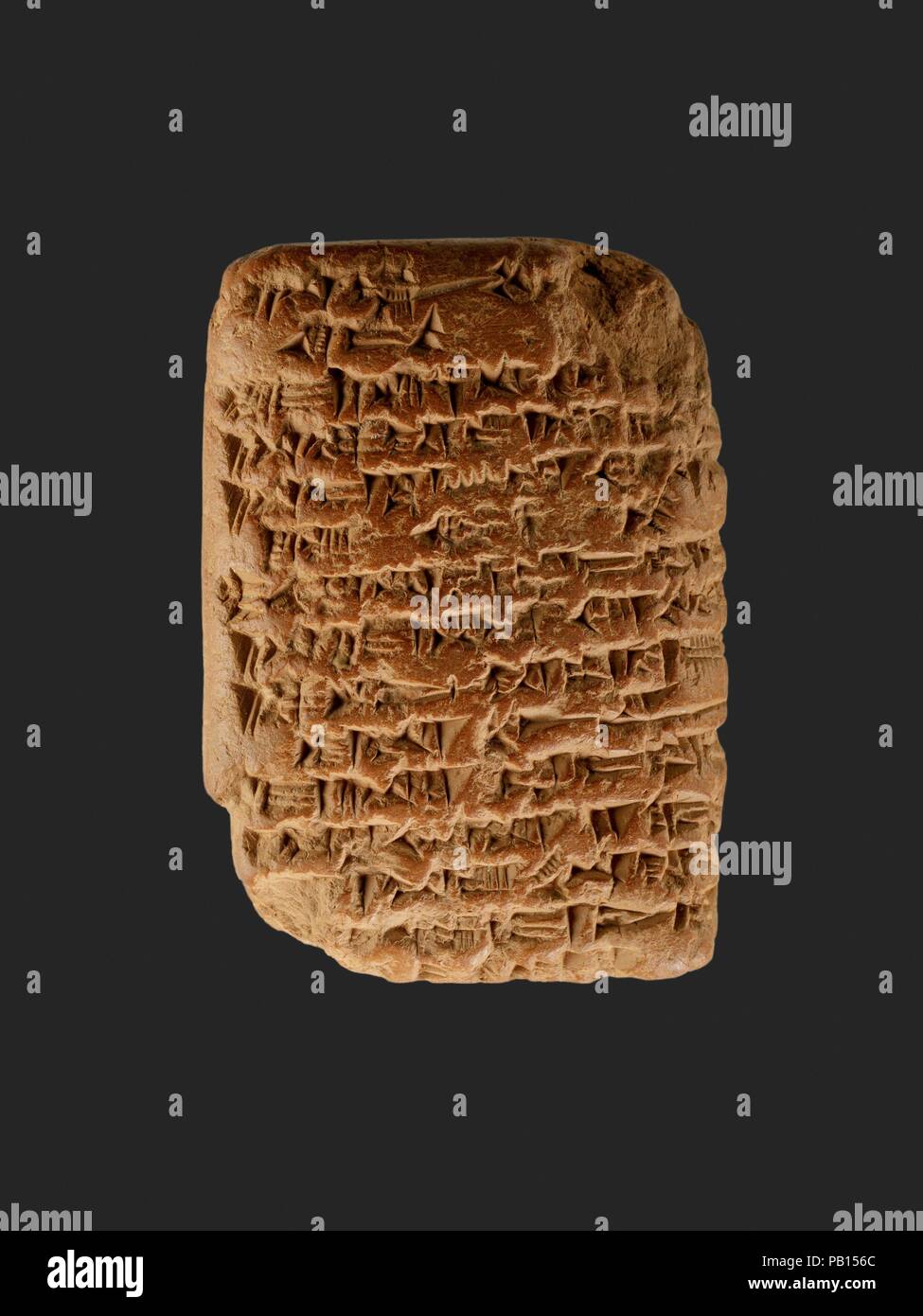 Amarna letter: Royal Letter from Ashur-uballit, the king of Assyria, to the king of Egypt. Dimensions: H. 7.7 cm (3 1/16 in.); W. 5.5 cm (2 3/16 in.). Dynasty: Dynasty 18. Reign: reign of Akhenaten. Date: ca. 1353-1336 B.C.. This document was found in the late 1880s at the site of Amarna, the religious capital of Egypt under Akhenaten. It was likely originally stored in administrative offices that formed part of a palace complex in the central part of the city. It is written in cuneiform script on a clay tablet using a reed stylus. The language is an Assyrian dialect of Akkadian, the <i>ling Stock Photohttps://www.alamy.com/image-license-details/?v=1https://www.alamy.com/amarna-letter-royal-letter-from-ashur-uballit-the-king-of-assyria-to-the-king-of-egypt-dimensions-h-77-cm-3-116-in-w-55-cm-2-316-in-dynasty-dynasty-18-reign-reign-of-akhenaten-date-ca-1353-1336-bc-this-document-was-found-in-the-late-1880s-at-the-site-of-amarna-the-religious-capital-of-egypt-under-akhenaten-it-was-likely-originally-stored-in-administrative-offices-that-formed-part-of-a-palace-complex-in-the-central-part-of-the-city-it-is-written-in-cuneiform-script-on-a-clay-tablet-using-a-reed-stylus-the-language-is-an-assyrian-dialect-of-akkadian-the-iling-image213311684.html
Amarna letter: Royal Letter from Ashur-uballit, the king of Assyria, to the king of Egypt. Dimensions: H. 7.7 cm (3 1/16 in.); W. 5.5 cm (2 3/16 in.). Dynasty: Dynasty 18. Reign: reign of Akhenaten. Date: ca. 1353-1336 B.C.. This document was found in the late 1880s at the site of Amarna, the religious capital of Egypt under Akhenaten. It was likely originally stored in administrative offices that formed part of a palace complex in the central part of the city. It is written in cuneiform script on a clay tablet using a reed stylus. The language is an Assyrian dialect of Akkadian, the <i>ling Stock Photohttps://www.alamy.com/image-license-details/?v=1https://www.alamy.com/amarna-letter-royal-letter-from-ashur-uballit-the-king-of-assyria-to-the-king-of-egypt-dimensions-h-77-cm-3-116-in-w-55-cm-2-316-in-dynasty-dynasty-18-reign-reign-of-akhenaten-date-ca-1353-1336-bc-this-document-was-found-in-the-late-1880s-at-the-site-of-amarna-the-religious-capital-of-egypt-under-akhenaten-it-was-likely-originally-stored-in-administrative-offices-that-formed-part-of-a-palace-complex-in-the-central-part-of-the-city-it-is-written-in-cuneiform-script-on-a-clay-tablet-using-a-reed-stylus-the-language-is-an-assyrian-dialect-of-akkadian-the-iling-image213311684.htmlRMPB156C–Amarna letter: Royal Letter from Ashur-uballit, the king of Assyria, to the king of Egypt. Dimensions: H. 7.7 cm (3 1/16 in.); W. 5.5 cm (2 3/16 in.). Dynasty: Dynasty 18. Reign: reign of Akhenaten. Date: ca. 1353-1336 B.C.. This document was found in the late 1880s at the site of Amarna, the religious capital of Egypt under Akhenaten. It was likely originally stored in administrative offices that formed part of a palace complex in the central part of the city. It is written in cuneiform script on a clay tablet using a reed stylus. The language is an Assyrian dialect of Akkadian, the <i>ling
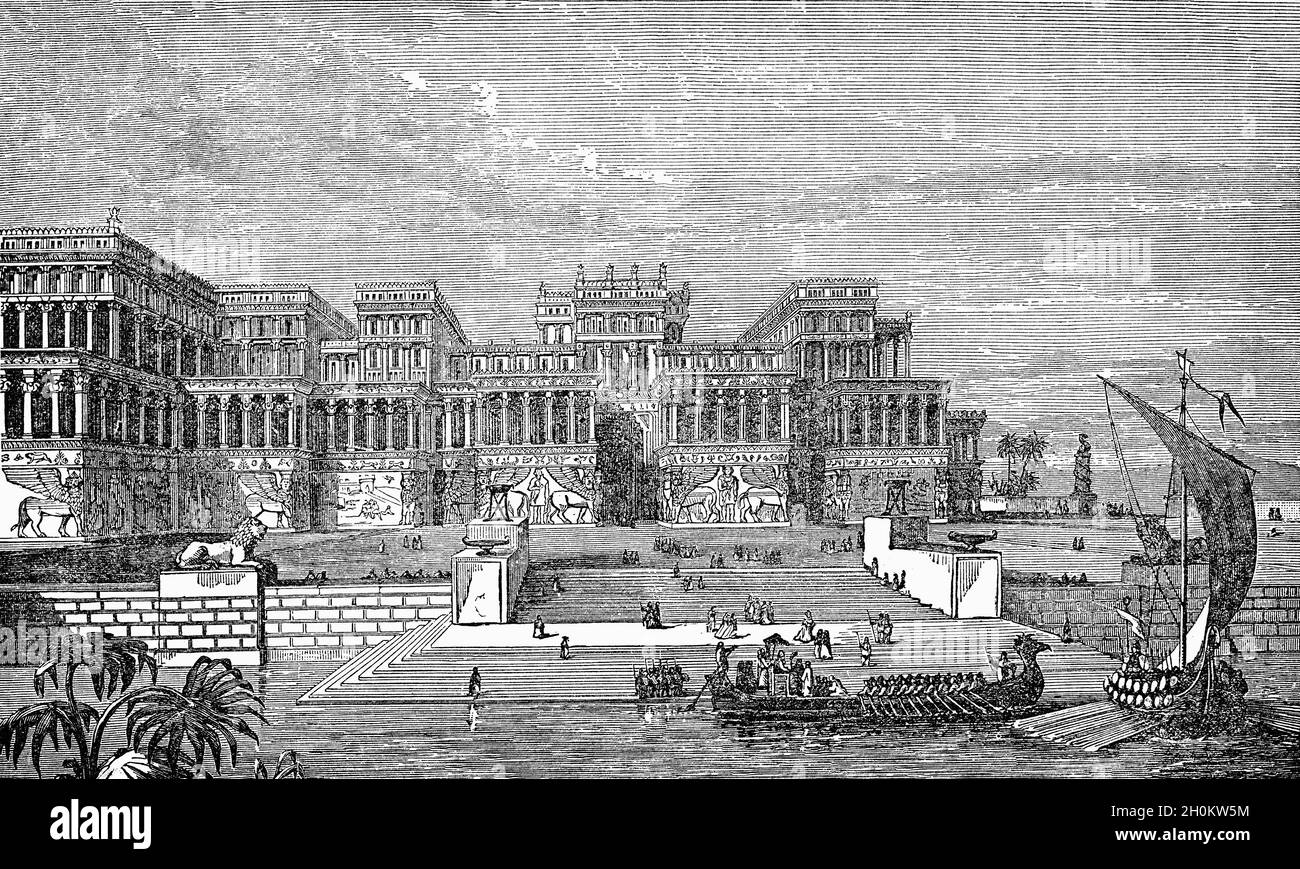 A late 19th Century illustration of the Royal Palace in Nineveh, an ancient Assyrian city of Upper Mesopotamia, located on the outskirts of Mosul in modern-day northern Iraq. It is located on the eastern bank of the Tigris River and was the capital and largest city of the Neo-Assyrian Empire, as well as the largest city in the world for several decades. Stock Photohttps://www.alamy.com/image-license-details/?v=1https://www.alamy.com/a-late-19th-century-illustration-of-the-royal-palace-in-nineveh-an-ancient-assyrian-city-of-upper-mesopotamia-located-on-the-outskirts-of-mosul-in-modern-day-northern-iraq-it-is-located-on-the-eastern-bank-of-the-tigris-river-and-was-the-capital-and-largest-city-of-the-neo-assyrian-empire-as-well-as-the-largest-city-in-the-world-for-several-decades-image447906416.html
A late 19th Century illustration of the Royal Palace in Nineveh, an ancient Assyrian city of Upper Mesopotamia, located on the outskirts of Mosul in modern-day northern Iraq. It is located on the eastern bank of the Tigris River and was the capital and largest city of the Neo-Assyrian Empire, as well as the largest city in the world for several decades. Stock Photohttps://www.alamy.com/image-license-details/?v=1https://www.alamy.com/a-late-19th-century-illustration-of-the-royal-palace-in-nineveh-an-ancient-assyrian-city-of-upper-mesopotamia-located-on-the-outskirts-of-mosul-in-modern-day-northern-iraq-it-is-located-on-the-eastern-bank-of-the-tigris-river-and-was-the-capital-and-largest-city-of-the-neo-assyrian-empire-as-well-as-the-largest-city-in-the-world-for-several-decades-image447906416.htmlRM2H0KW5M–A late 19th Century illustration of the Royal Palace in Nineveh, an ancient Assyrian city of Upper Mesopotamia, located on the outskirts of Mosul in modern-day northern Iraq. It is located on the eastern bank of the Tigris River and was the capital and largest city of the Neo-Assyrian Empire, as well as the largest city in the world for several decades.
 Wood Engraving of the Sculpture of Captivity in Media on Rock Surface between Babylon and Hamadan which is Supposed to be Ecbatana the ancient capital Stock Photohttps://www.alamy.com/image-license-details/?v=1https://www.alamy.com/wood-engraving-of-the-sculpture-of-captivity-in-media-on-rock-surface-between-babylon-and-hamadan-which-is-supposed-to-be-ecbatana-the-ancient-capital-image604379087.html
Wood Engraving of the Sculpture of Captivity in Media on Rock Surface between Babylon and Hamadan which is Supposed to be Ecbatana the ancient capital Stock Photohttps://www.alamy.com/image-license-details/?v=1https://www.alamy.com/wood-engraving-of-the-sculpture-of-captivity-in-media-on-rock-surface-between-babylon-and-hamadan-which-is-supposed-to-be-ecbatana-the-ancient-capital-image604379087.htmlRM2X37RKB–Wood Engraving of the Sculpture of Captivity in Media on Rock Surface between Babylon and Hamadan which is Supposed to be Ecbatana the ancient capital
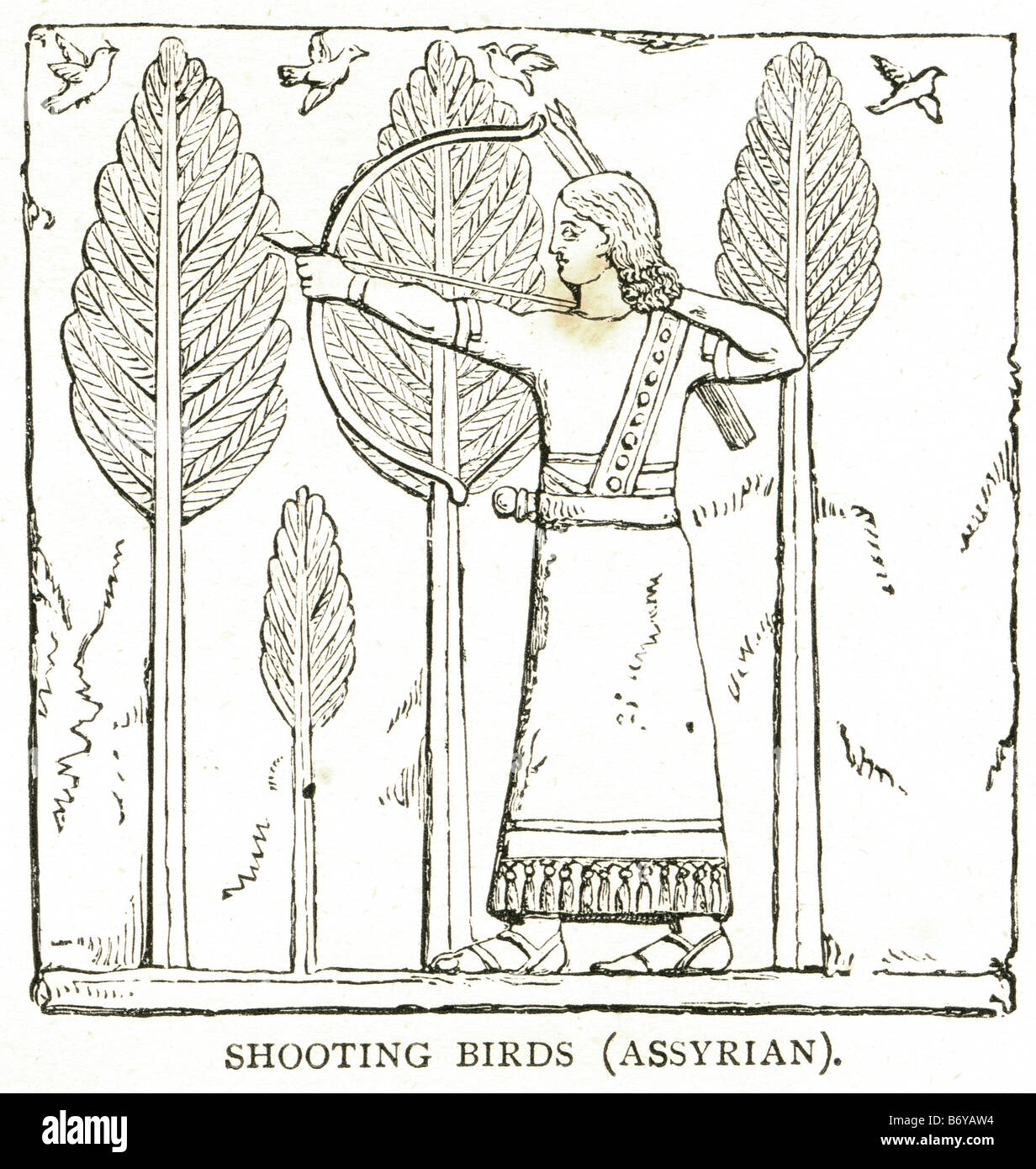 shooting birds assyrian Assyria was a political state centered on the Upper Tigris river, in Mesopotamia (Iraq), that came to ru Stock Photohttps://www.alamy.com/image-license-details/?v=1https://www.alamy.com/stock-photo-shooting-birds-assyrian-assyria-was-a-political-state-centered-on-21499552.html
shooting birds assyrian Assyria was a political state centered on the Upper Tigris river, in Mesopotamia (Iraq), that came to ru Stock Photohttps://www.alamy.com/image-license-details/?v=1https://www.alamy.com/stock-photo-shooting-birds-assyrian-assyria-was-a-political-state-centered-on-21499552.htmlRFB6YAW4–shooting birds assyrian Assyria was a political state centered on the Upper Tigris river, in Mesopotamia (Iraq), that came to ru
 Old illustration of Khorsabad bas relief (Antique Assyrian capital, North Iraq). Created by Flandin, published on Le Tour du Monde, Paris, 1861. Stock Photohttps://www.alamy.com/image-license-details/?v=1https://www.alamy.com/old-illustration-of-khorsabad-bas-relief-antique-assyrian-capital-image150198135.html
Old illustration of Khorsabad bas relief (Antique Assyrian capital, North Iraq). Created by Flandin, published on Le Tour du Monde, Paris, 1861. Stock Photohttps://www.alamy.com/image-license-details/?v=1https://www.alamy.com/old-illustration-of-khorsabad-bas-relief-antique-assyrian-capital-image150198135.htmlRFJMA373–Old illustration of Khorsabad bas relief (Antique Assyrian capital, North Iraq). Created by Flandin, published on Le Tour du Monde, Paris, 1861.
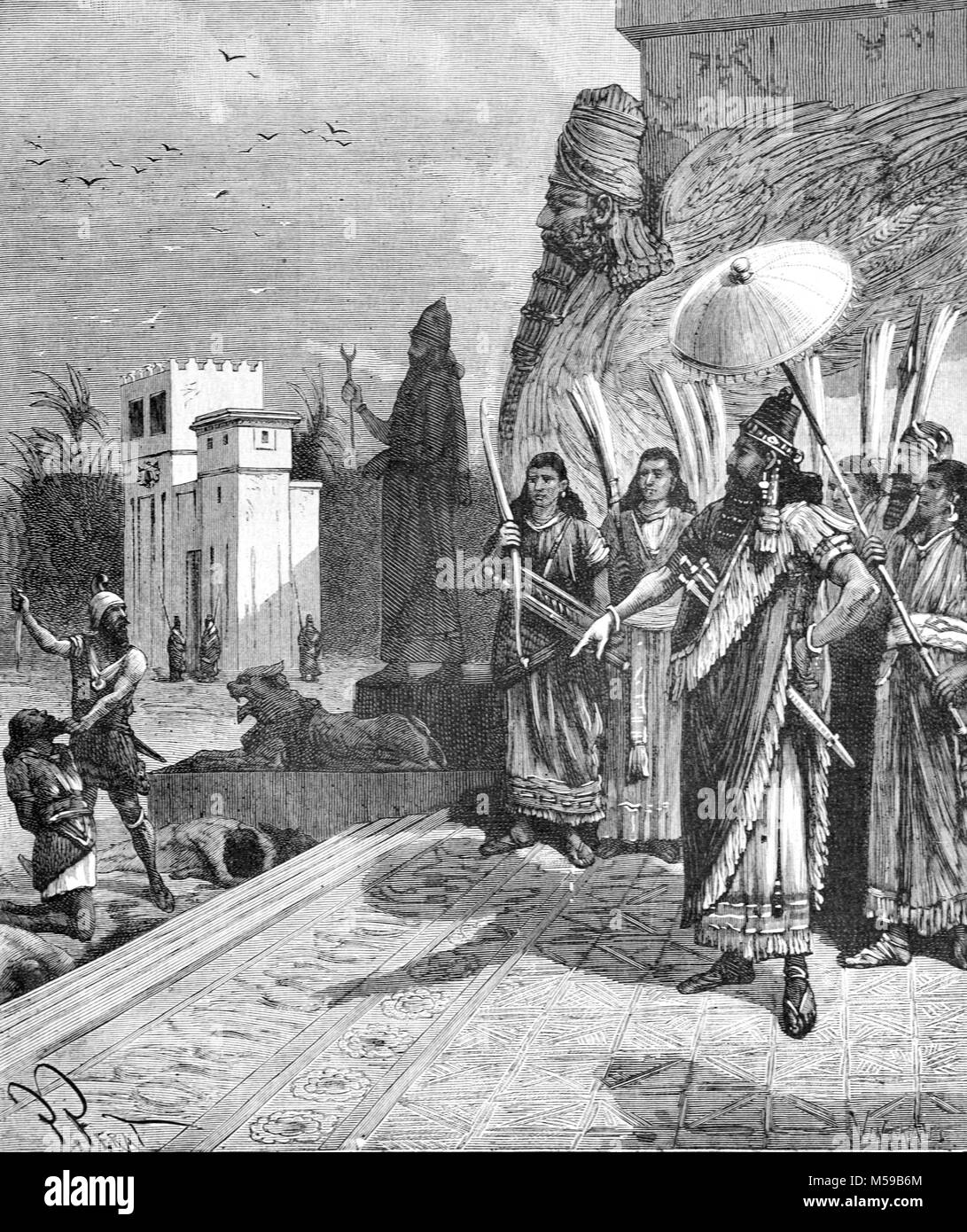 Assyrian King Orders Execution of Prisoners or Captives in the Assyrian Capital of Assur or Nineveh, Mesopotamia, present-day Iraq (Engraving, 1889) Stock Photohttps://www.alamy.com/image-license-details/?v=1https://www.alamy.com/stock-photo-assyrian-king-orders-execution-of-prisoners-or-captives-in-the-assyrian-175383340.html
Assyrian King Orders Execution of Prisoners or Captives in the Assyrian Capital of Assur or Nineveh, Mesopotamia, present-day Iraq (Engraving, 1889) Stock Photohttps://www.alamy.com/image-license-details/?v=1https://www.alamy.com/stock-photo-assyrian-king-orders-execution-of-prisoners-or-captives-in-the-assyrian-175383340.htmlRMM59B6M–Assyrian King Orders Execution of Prisoners or Captives in the Assyrian Capital of Assur or Nineveh, Mesopotamia, present-day Iraq (Engraving, 1889)
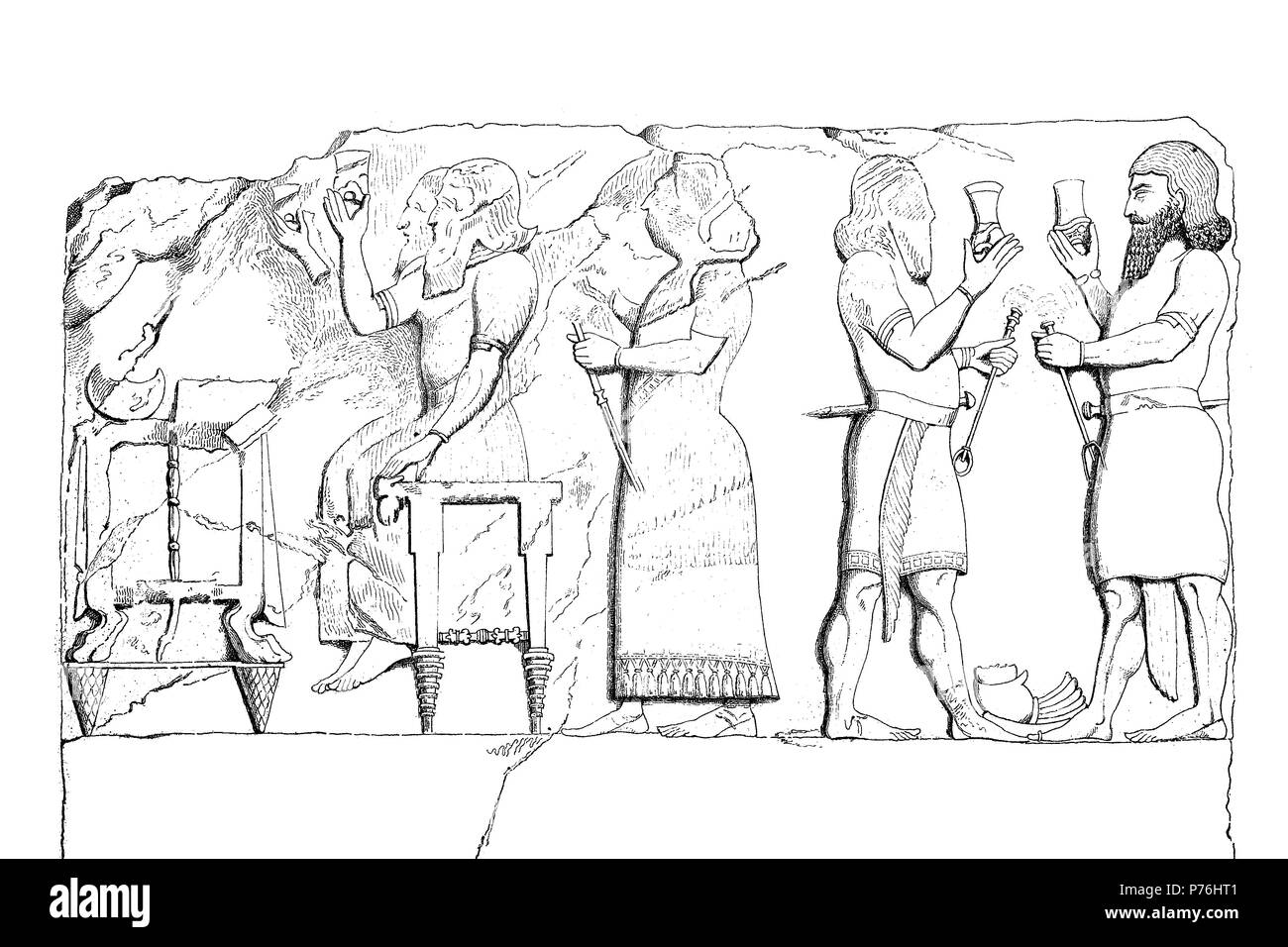 relief on the portal of Khorsabad, the Assyrian capital in the time of Sargon II of Assyria, Mesopotamia, Iraq, digital improved reproduction of an original print from the year 1881 Stock Photohttps://www.alamy.com/image-license-details/?v=1https://www.alamy.com/relief-on-the-portal-of-khorsabad-the-assyrian-capital-in-the-time-of-sargon-ii-of-assyria-mesopotamia-iraq-digital-improved-reproduction-of-an-original-print-from-the-year-1881-image210972721.html
relief on the portal of Khorsabad, the Assyrian capital in the time of Sargon II of Assyria, Mesopotamia, Iraq, digital improved reproduction of an original print from the year 1881 Stock Photohttps://www.alamy.com/image-license-details/?v=1https://www.alamy.com/relief-on-the-portal-of-khorsabad-the-assyrian-capital-in-the-time-of-sargon-ii-of-assyria-mesopotamia-iraq-digital-improved-reproduction-of-an-original-print-from-the-year-1881-image210972721.htmlRFP76HT1–relief on the portal of Khorsabad, the Assyrian capital in the time of Sargon II of Assyria, Mesopotamia, Iraq, digital improved reproduction of an original print from the year 1881
 Art inspired by Amarna letter: Royal Letter from Ashur-uballit, the king of Assyria, to the king of Egypt, New Kingdom, Amarna Period, Dynasty 18, ca. 1353–1336 B.C., From Egypt; Probably from Middle Egypt, Amarna (Akhetaten), Clay, H. 7.7 cm (3 1/16 in.); W. 5.5 cm (2 3/16 in.), This, Classic works modernized by Artotop with a splash of modernity. Shapes, color and value, eye-catching visual impact on art. Emotions through freedom of artworks in a contemporary way. A timeless message pursuing a wildly creative new direction. Artists turning to the digital medium and creating the Artotop NFT Stock Photohttps://www.alamy.com/image-license-details/?v=1https://www.alamy.com/art-inspired-by-amarna-letter-royal-letter-from-ashur-uballit-the-king-of-assyria-to-the-king-of-egypt-new-kingdom-amarna-period-dynasty-18-ca-13531336-bc-from-egypt-probably-from-middle-egypt-amarna-akhetaten-clay-h-77-cm-3-116-in-w-55-cm-2-316-in-this-classic-works-modernized-by-artotop-with-a-splash-of-modernity-shapes-color-and-value-eye-catching-visual-impact-on-art-emotions-through-freedom-of-artworks-in-a-contemporary-way-a-timeless-message-pursuing-a-wildly-creative-new-direction-artists-turning-to-the-digital-medium-and-creating-the-artotop-nft-image463036572.html
Art inspired by Amarna letter: Royal Letter from Ashur-uballit, the king of Assyria, to the king of Egypt, New Kingdom, Amarna Period, Dynasty 18, ca. 1353–1336 B.C., From Egypt; Probably from Middle Egypt, Amarna (Akhetaten), Clay, H. 7.7 cm (3 1/16 in.); W. 5.5 cm (2 3/16 in.), This, Classic works modernized by Artotop with a splash of modernity. Shapes, color and value, eye-catching visual impact on art. Emotions through freedom of artworks in a contemporary way. A timeless message pursuing a wildly creative new direction. Artists turning to the digital medium and creating the Artotop NFT Stock Photohttps://www.alamy.com/image-license-details/?v=1https://www.alamy.com/art-inspired-by-amarna-letter-royal-letter-from-ashur-uballit-the-king-of-assyria-to-the-king-of-egypt-new-kingdom-amarna-period-dynasty-18-ca-13531336-bc-from-egypt-probably-from-middle-egypt-amarna-akhetaten-clay-h-77-cm-3-116-in-w-55-cm-2-316-in-this-classic-works-modernized-by-artotop-with-a-splash-of-modernity-shapes-color-and-value-eye-catching-visual-impact-on-art-emotions-through-freedom-of-artworks-in-a-contemporary-way-a-timeless-message-pursuing-a-wildly-creative-new-direction-artists-turning-to-the-digital-medium-and-creating-the-artotop-nft-image463036572.htmlRF2HW93TC–Art inspired by Amarna letter: Royal Letter from Ashur-uballit, the king of Assyria, to the king of Egypt, New Kingdom, Amarna Period, Dynasty 18, ca. 1353–1336 B.C., From Egypt; Probably from Middle Egypt, Amarna (Akhetaten), Clay, H. 7.7 cm (3 1/16 in.); W. 5.5 cm (2 3/16 in.), This, Classic works modernized by Artotop with a splash of modernity. Shapes, color and value, eye-catching visual impact on art. Emotions through freedom of artworks in a contemporary way. A timeless message pursuing a wildly creative new direction. Artists turning to the digital medium and creating the Artotop NFT
 Iraq: Stone stele of Ashurnasirpal II, King of Nimrud 883–859 BCE. King Ashurnasirpal II who reigned from 883–859 BCE built a new capital at Nimrud. Nimrud is an ancient Assyrian city located south of Nineveh on the river Tigris. Stock Photohttps://www.alamy.com/image-license-details/?v=1https://www.alamy.com/iraq-stone-stele-of-ashurnasirpal-ii-king-of-nimrud-883859-bce-king-ashurnasirpal-ii-who-reigned-from-883859-bce-built-a-new-capital-at-nimrud-nimrud-is-an-ancient-assyrian-city-located-south-of-nineveh-on-the-river-tigris-image344224235.html
Iraq: Stone stele of Ashurnasirpal II, King of Nimrud 883–859 BCE. King Ashurnasirpal II who reigned from 883–859 BCE built a new capital at Nimrud. Nimrud is an ancient Assyrian city located south of Nineveh on the river Tigris. Stock Photohttps://www.alamy.com/image-license-details/?v=1https://www.alamy.com/iraq-stone-stele-of-ashurnasirpal-ii-king-of-nimrud-883859-bce-king-ashurnasirpal-ii-who-reigned-from-883859-bce-built-a-new-capital-at-nimrud-nimrud-is-an-ancient-assyrian-city-located-south-of-nineveh-on-the-river-tigris-image344224235.htmlRM2B00NEK–Iraq: Stone stele of Ashurnasirpal II, King of Nimrud 883–859 BCE. King Ashurnasirpal II who reigned from 883–859 BCE built a new capital at Nimrud. Nimrud is an ancient Assyrian city located south of Nineveh on the river Tigris.
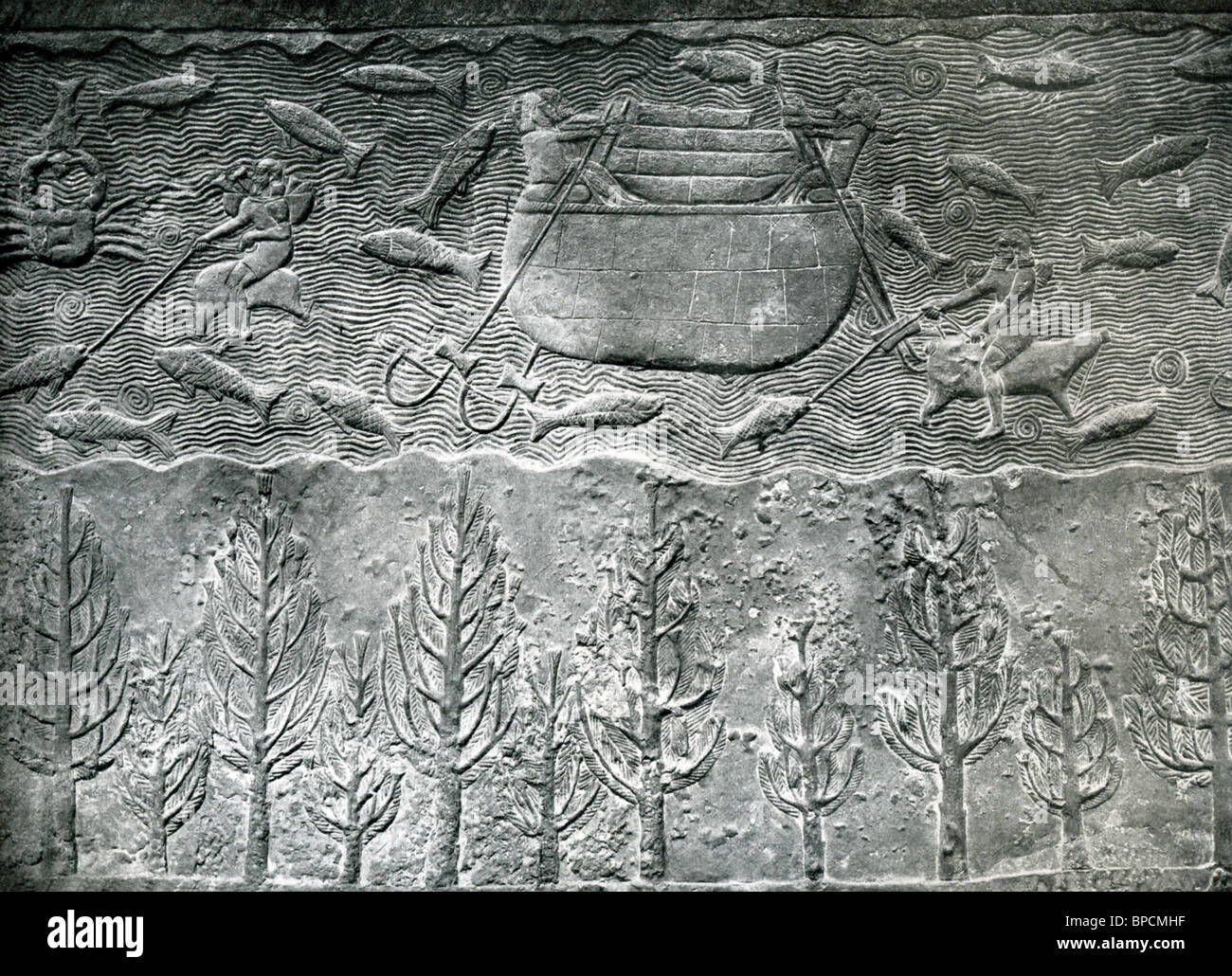 This relief, from the palace of Sennacherib at Nineveh, the capital of ancient Assyria, has a barrel-shaped boat with fishermen. Stock Photohttps://www.alamy.com/image-license-details/?v=1https://www.alamy.com/stock-photo-this-relief-from-the-palace-of-sennacherib-at-nineveh-the-capital-31012395.html
This relief, from the palace of Sennacherib at Nineveh, the capital of ancient Assyria, has a barrel-shaped boat with fishermen. Stock Photohttps://www.alamy.com/image-license-details/?v=1https://www.alamy.com/stock-photo-this-relief-from-the-palace-of-sennacherib-at-nineveh-the-capital-31012395.htmlRFBPCMHF–This relief, from the palace of Sennacherib at Nineveh, the capital of ancient Assyria, has a barrel-shaped boat with fishermen.
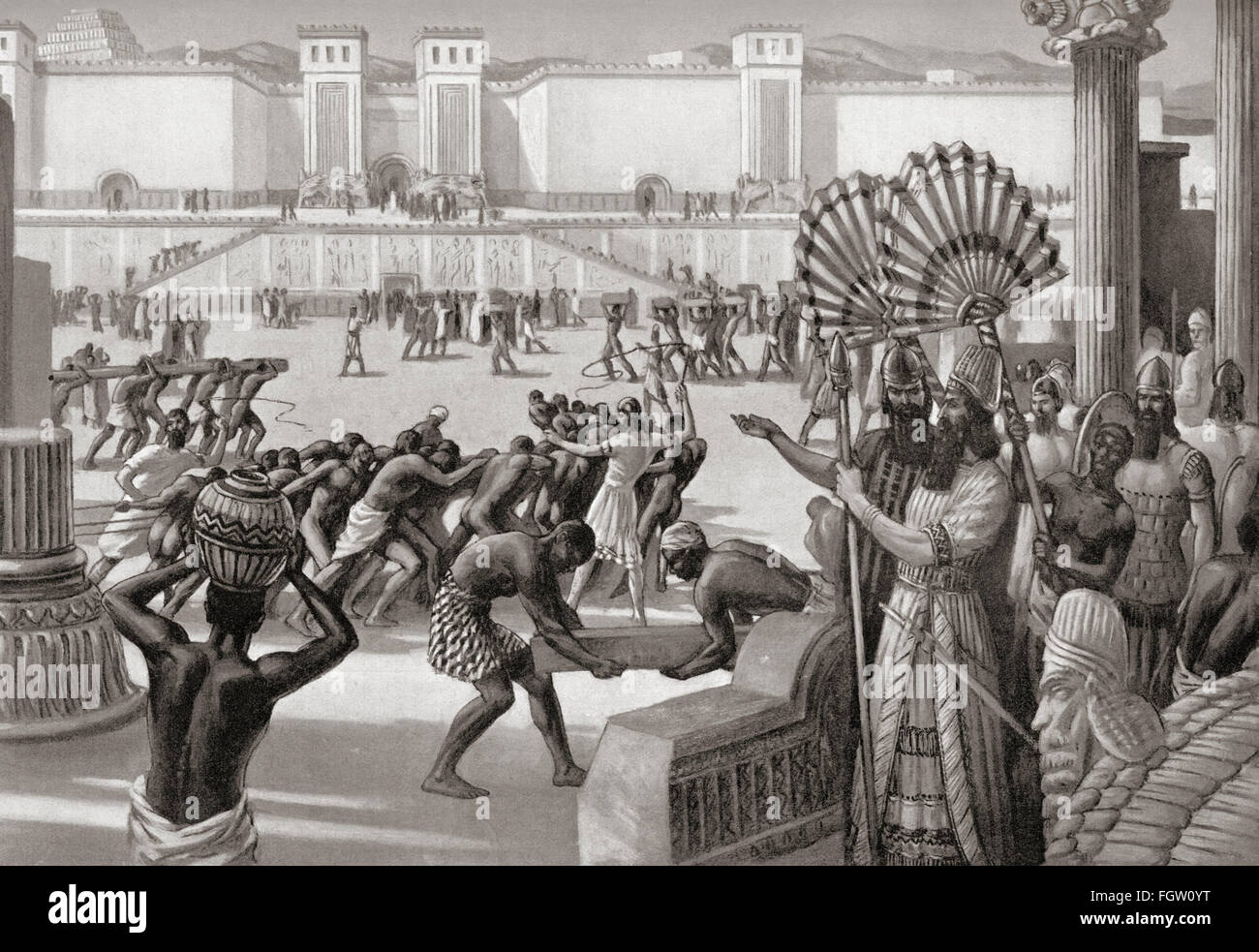 Construction of the palace at Dur-Sharrukin, Assyria, 713 BC by Sargon II of Assyria. Stock Photohttps://www.alamy.com/image-license-details/?v=1https://www.alamy.com/stock-photo-construction-of-the-palace-at-dur-sharrukin-assyria-713-bc-by-sargon-96435916.html
Construction of the palace at Dur-Sharrukin, Assyria, 713 BC by Sargon II of Assyria. Stock Photohttps://www.alamy.com/image-license-details/?v=1https://www.alamy.com/stock-photo-construction-of-the-palace-at-dur-sharrukin-assyria-713-bc-by-sargon-96435916.htmlRMFGW0YT–Construction of the palace at Dur-Sharrukin, Assyria, 713 BC by Sargon II of Assyria.
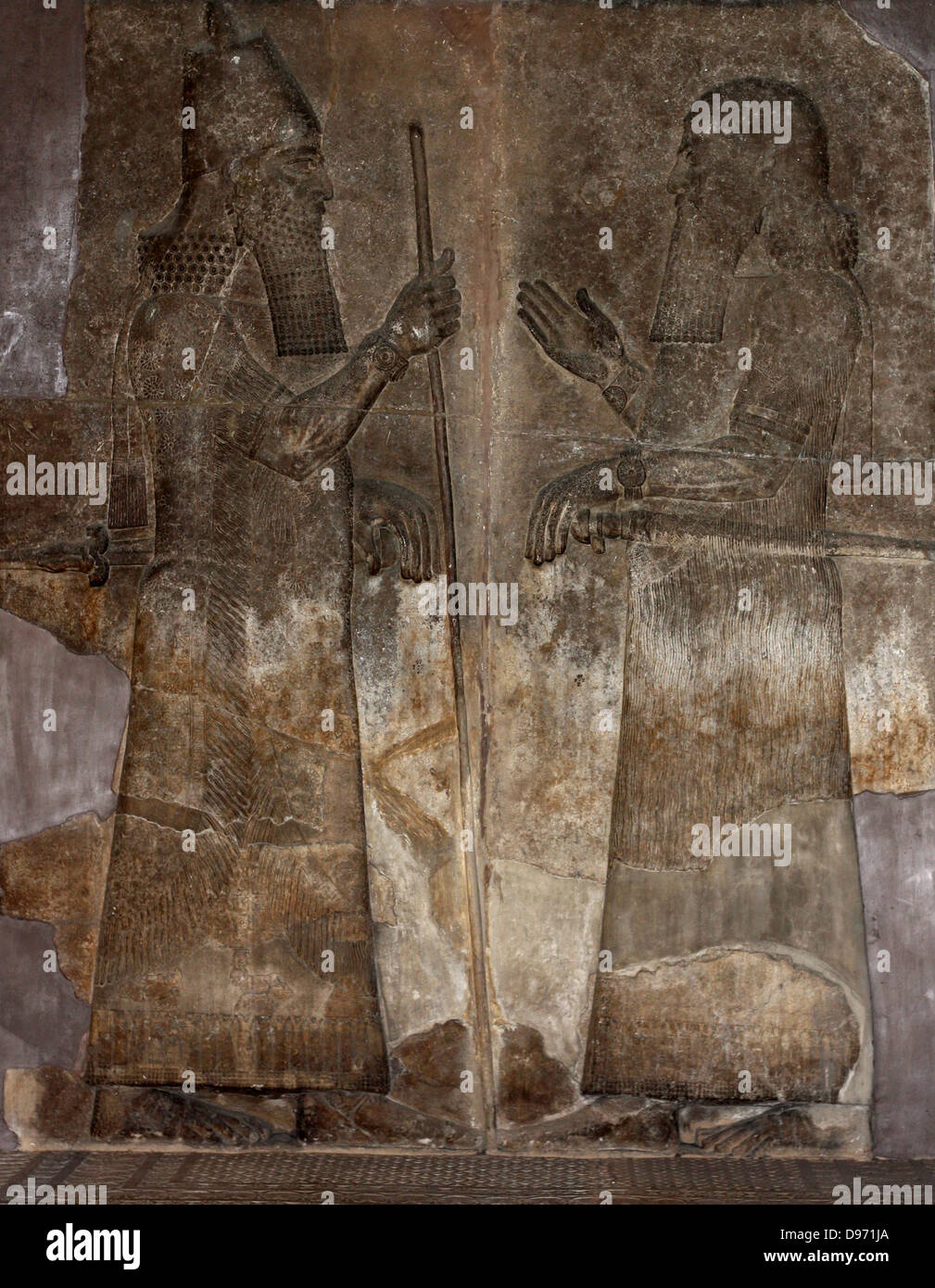 The Reign of Sargon 721-705 The Assyrian empire under Sargon II extended from central Iran to the Mediterranean. The king built himself a new capital city, Khorsabad, with a magnificently sculptured palace, which was discovered by the French archaeologist, Botta. Stock Photohttps://www.alamy.com/image-license-details/?v=1https://www.alamy.com/stock-photo-the-reign-of-sargon-721-705-the-assyrian-empire-under-sargon-ii-extended-57317970.html
The Reign of Sargon 721-705 The Assyrian empire under Sargon II extended from central Iran to the Mediterranean. The king built himself a new capital city, Khorsabad, with a magnificently sculptured palace, which was discovered by the French archaeologist, Botta. Stock Photohttps://www.alamy.com/image-license-details/?v=1https://www.alamy.com/stock-photo-the-reign-of-sargon-721-705-the-assyrian-empire-under-sargon-ii-extended-57317970.htmlRMD971JA–The Reign of Sargon 721-705 The Assyrian empire under Sargon II extended from central Iran to the Mediterranean. The king built himself a new capital city, Khorsabad, with a magnificently sculptured palace, which was discovered by the French archaeologist, Botta.
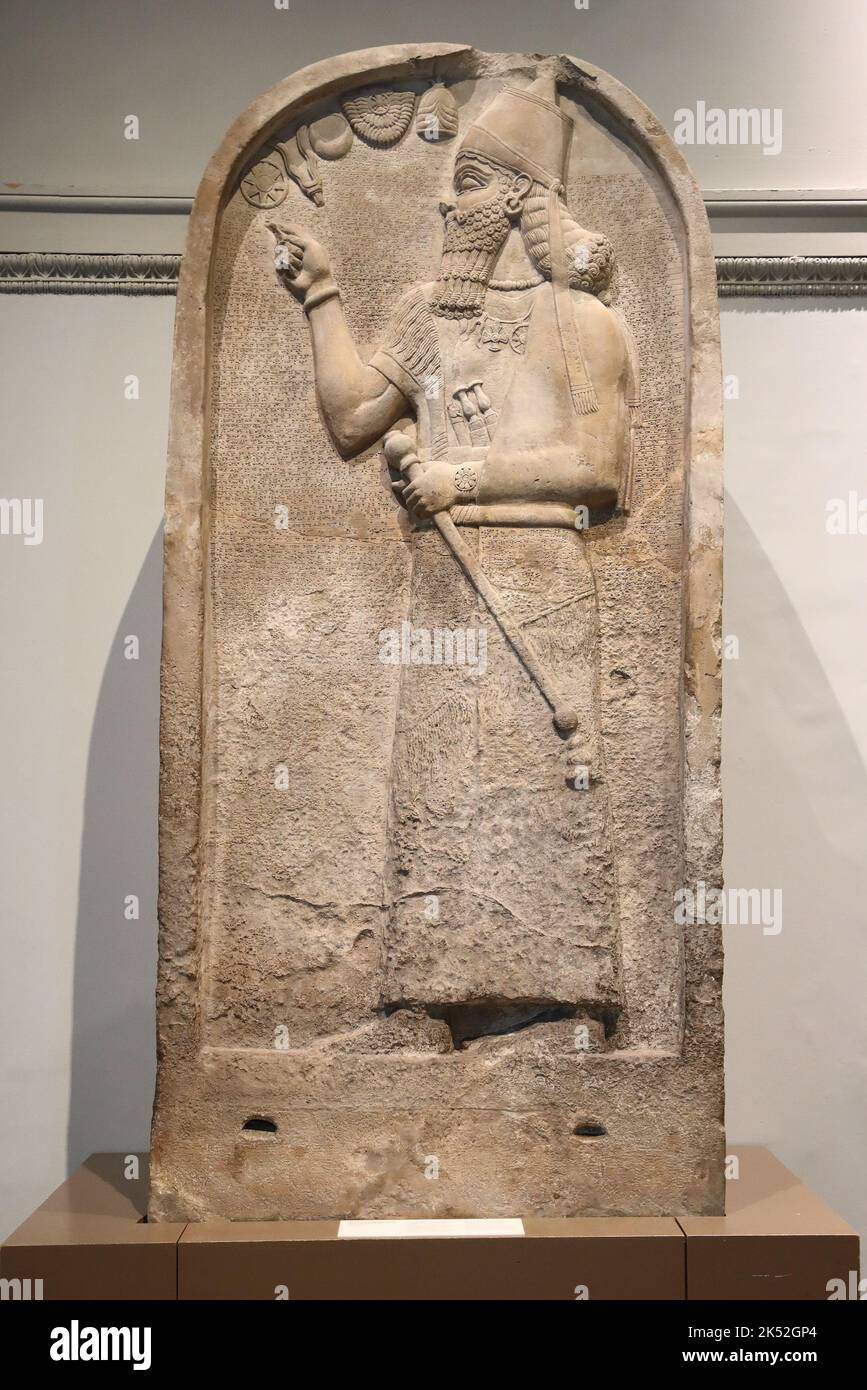 Gypsum stela of the Assyrian King Ashurnasirpal II from the capital city of Nimrud at the British Museum, London, UK Stock Photohttps://www.alamy.com/image-license-details/?v=1https://www.alamy.com/gypsum-stela-of-the-assyrian-king-ashurnasirpal-ii-from-the-capital-city-of-nimrud-at-the-british-museum-london-uk-image485020652.html
Gypsum stela of the Assyrian King Ashurnasirpal II from the capital city of Nimrud at the British Museum, London, UK Stock Photohttps://www.alamy.com/image-license-details/?v=1https://www.alamy.com/gypsum-stela-of-the-assyrian-king-ashurnasirpal-ii-from-the-capital-city-of-nimrud-at-the-british-museum-london-uk-image485020652.htmlRM2K52GP4–Gypsum stela of the Assyrian King Ashurnasirpal II from the capital city of Nimrud at the British Museum, London, UK
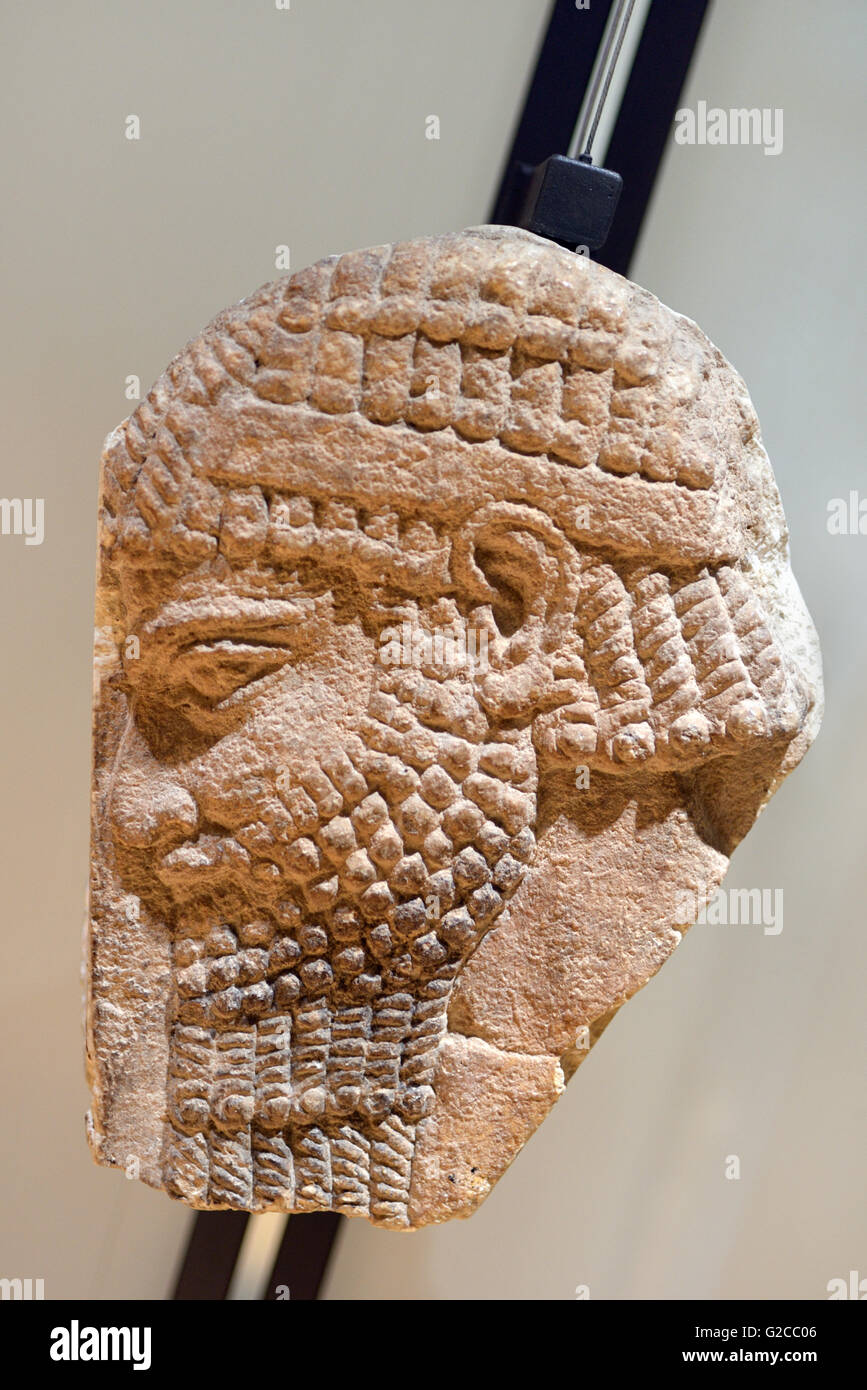 Assyrian Stone Relief Bearded Assyrian (c8thBC) from Dur-Sharrukin, present-day Khorsabad in northern Iraq. Assyrian Capital During Reign of Sargon II Stock Photohttps://www.alamy.com/image-license-details/?v=1https://www.alamy.com/stock-photo-assyrian-stone-relief-bearded-assyrian-c8thbc-from-dur-sharrukin-present-104764358.html
Assyrian Stone Relief Bearded Assyrian (c8thBC) from Dur-Sharrukin, present-day Khorsabad in northern Iraq. Assyrian Capital During Reign of Sargon II Stock Photohttps://www.alamy.com/image-license-details/?v=1https://www.alamy.com/stock-photo-assyrian-stone-relief-bearded-assyrian-c8thbc-from-dur-sharrukin-present-104764358.htmlRMG2CC06–Assyrian Stone Relief Bearded Assyrian (c8thBC) from Dur-Sharrukin, present-day Khorsabad in northern Iraq. Assyrian Capital During Reign of Sargon II
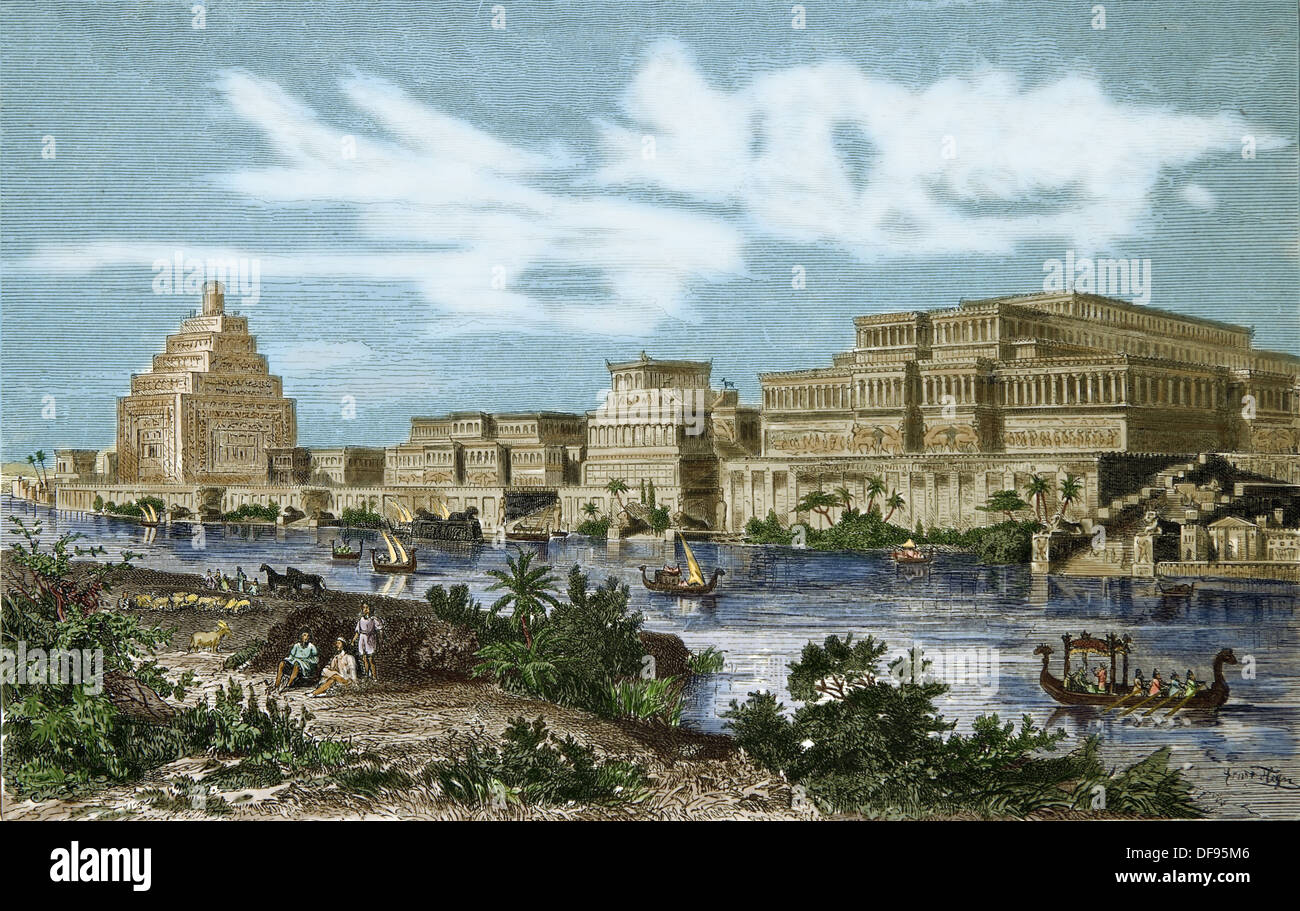 Ancient Age. Palace of the kings of Assyria to the city of Nineveh. 19th century. Colored engraving. Stock Photohttps://www.alamy.com/image-license-details/?v=1https://www.alamy.com/ancient-age-palace-of-the-kings-of-assyria-to-the-city-of-nineveh-image61052998.html
Ancient Age. Palace of the kings of Assyria to the city of Nineveh. 19th century. Colored engraving. Stock Photohttps://www.alamy.com/image-license-details/?v=1https://www.alamy.com/ancient-age-palace-of-the-kings-of-assyria-to-the-city-of-nineveh-image61052998.htmlRMDF95M6–Ancient Age. Palace of the kings of Assyria to the city of Nineveh. 19th century. Colored engraving.
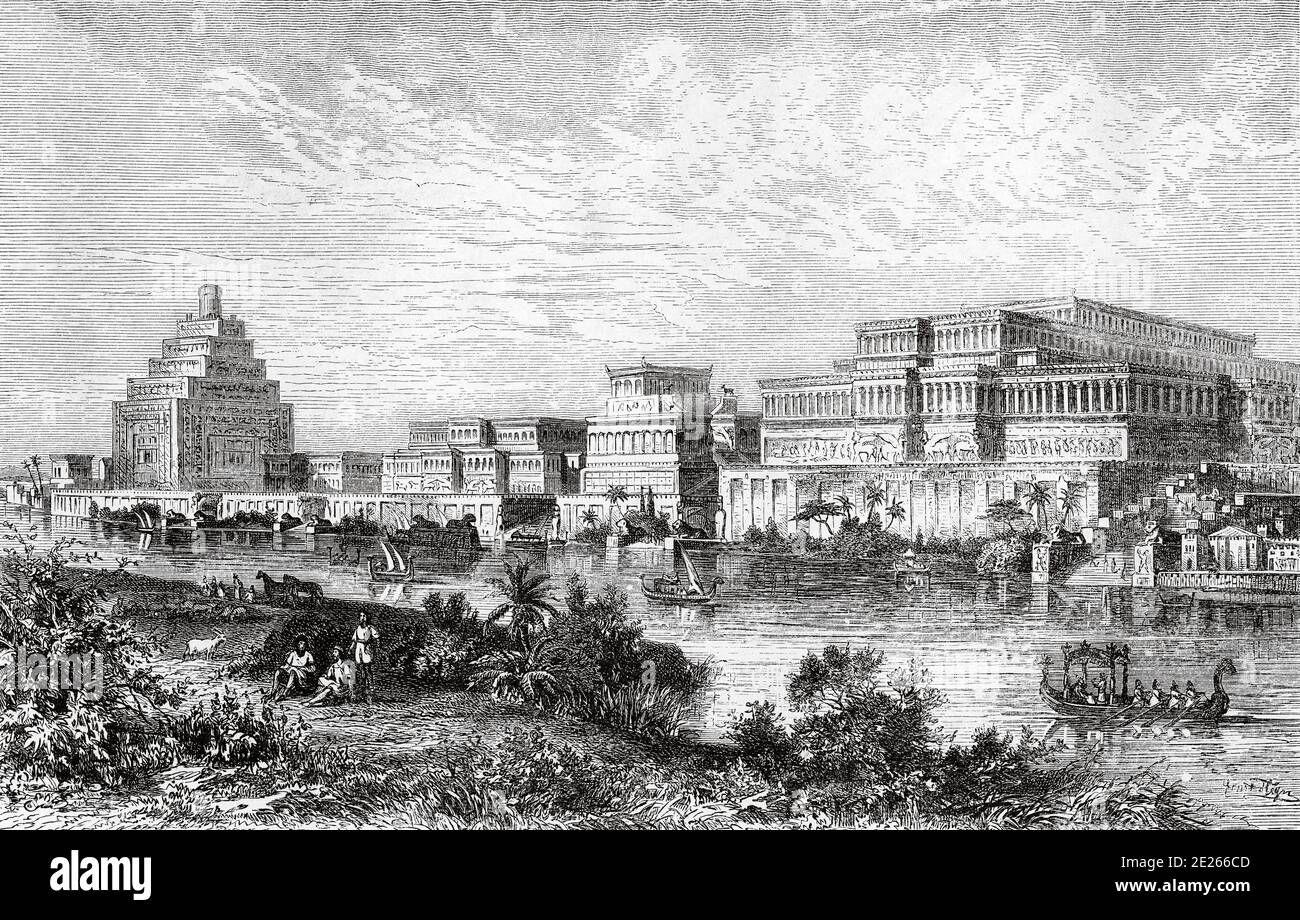 Palace of the kings of Assyria to the city of Nineveh. Assyrian Empire. Old engraving illustration from the book Universal history by Oscar Jager 1890 Stock Photohttps://www.alamy.com/image-license-details/?v=1https://www.alamy.com/palace-of-the-kings-of-assyria-to-the-city-of-nineveh-assyrian-empire-old-engraving-illustration-from-the-book-universal-history-by-oscar-jager-1890-image397204541.html
Palace of the kings of Assyria to the city of Nineveh. Assyrian Empire. Old engraving illustration from the book Universal history by Oscar Jager 1890 Stock Photohttps://www.alamy.com/image-license-details/?v=1https://www.alamy.com/palace-of-the-kings-of-assyria-to-the-city-of-nineveh-assyrian-empire-old-engraving-illustration-from-the-book-universal-history-by-oscar-jager-1890-image397204541.htmlRM2E266CD–Palace of the kings of Assyria to the city of Nineveh. Assyrian Empire. Old engraving illustration from the book Universal history by Oscar Jager 1890
 Sennacherib receiving Tribute From the Palace at Nineveh the king of the Neo-Assyrian Empire from the death of his father Sargon II in 705 BC to his own death in 681 BC. The second king of the Sargonid dynasty, Sennacherib is one of the most famous Assyrian kings for the role he plays in the Hebrew Bible, which describes his campaign in the Levant. Other events of his reign include his destruction of the city of Babylon in 689 BC and his renovation and expansion of the last great Assyrian capital, Nineveh. From the book ' Myths and legends of Babylonia & Assyria ' by Lewis Spence, Published Stock Photohttps://www.alamy.com/image-license-details/?v=1https://www.alamy.com/sennacherib-receiving-tribute-from-the-palace-at-nineveh-the-king-of-the-neo-assyrian-empire-from-the-death-of-his-father-sargon-ii-in-705-bc-to-his-own-death-in-681-bc-the-second-king-of-the-sargonid-dynasty-sennacherib-is-one-of-the-most-famous-assyrian-kings-for-the-role-he-plays-in-the-hebrew-bible-which-describes-his-campaign-in-the-levant-other-events-of-his-reign-include-his-destruction-of-the-city-of-babylon-in-689-bc-and-his-renovation-and-expansion-of-the-last-great-assyrian-capital-nineveh-from-the-book-myths-and-legends-of-babylonia-assyria-by-lewis-spence-published-image462498993.html
Sennacherib receiving Tribute From the Palace at Nineveh the king of the Neo-Assyrian Empire from the death of his father Sargon II in 705 BC to his own death in 681 BC. The second king of the Sargonid dynasty, Sennacherib is one of the most famous Assyrian kings for the role he plays in the Hebrew Bible, which describes his campaign in the Levant. Other events of his reign include his destruction of the city of Babylon in 689 BC and his renovation and expansion of the last great Assyrian capital, Nineveh. From the book ' Myths and legends of Babylonia & Assyria ' by Lewis Spence, Published Stock Photohttps://www.alamy.com/image-license-details/?v=1https://www.alamy.com/sennacherib-receiving-tribute-from-the-palace-at-nineveh-the-king-of-the-neo-assyrian-empire-from-the-death-of-his-father-sargon-ii-in-705-bc-to-his-own-death-in-681-bc-the-second-king-of-the-sargonid-dynasty-sennacherib-is-one-of-the-most-famous-assyrian-kings-for-the-role-he-plays-in-the-hebrew-bible-which-describes-his-campaign-in-the-levant-other-events-of-his-reign-include-his-destruction-of-the-city-of-babylon-in-689-bc-and-his-renovation-and-expansion-of-the-last-great-assyrian-capital-nineveh-from-the-book-myths-and-legends-of-babylonia-assyria-by-lewis-spence-published-image462498993.htmlRF2HTCJ55–Sennacherib receiving Tribute From the Palace at Nineveh the king of the Neo-Assyrian Empire from the death of his father Sargon II in 705 BC to his own death in 681 BC. The second king of the Sargonid dynasty, Sennacherib is one of the most famous Assyrian kings for the role he plays in the Hebrew Bible, which describes his campaign in the Levant. Other events of his reign include his destruction of the city of Babylon in 689 BC and his renovation and expansion of the last great Assyrian capital, Nineveh. From the book ' Myths and legends of Babylonia & Assyria ' by Lewis Spence, Published
 Capital of column with bull heads from the palace of Artaxerxes II. Photos from the first half of the 20th century. Stock Photohttps://www.alamy.com/image-license-details/?v=1https://www.alamy.com/capital-of-column-with-bull-heads-from-the-palace-of-artaxerxes-ii-photos-from-the-first-half-of-the-20th-century-image605045636.html
Capital of column with bull heads from the palace of Artaxerxes II. Photos from the first half of the 20th century. Stock Photohttps://www.alamy.com/image-license-details/?v=1https://www.alamy.com/capital-of-column-with-bull-heads-from-the-palace-of-artaxerxes-ii-photos-from-the-first-half-of-the-20th-century-image605045636.htmlRM2X4A5TM–Capital of column with bull heads from the palace of Artaxerxes II. Photos from the first half of the 20th century.
 King Assurbanipal chariot Elamite prisoners Episodes country Elam 645 BC Nineveh capital Assyrian Assyria Mesopotamia Iraq Stock Photohttps://www.alamy.com/image-license-details/?v=1https://www.alamy.com/stock-photo-king-assurbanipal-chariot-elamite-prisoners-episodes-country-elam-44007283.html
King Assurbanipal chariot Elamite prisoners Episodes country Elam 645 BC Nineveh capital Assyrian Assyria Mesopotamia Iraq Stock Photohttps://www.alamy.com/image-license-details/?v=1https://www.alamy.com/stock-photo-king-assurbanipal-chariot-elamite-prisoners-episodes-country-elam-44007283.htmlRMCFGKMK–King Assurbanipal chariot Elamite prisoners Episodes country Elam 645 BC Nineveh capital Assyrian Assyria Mesopotamia Iraq
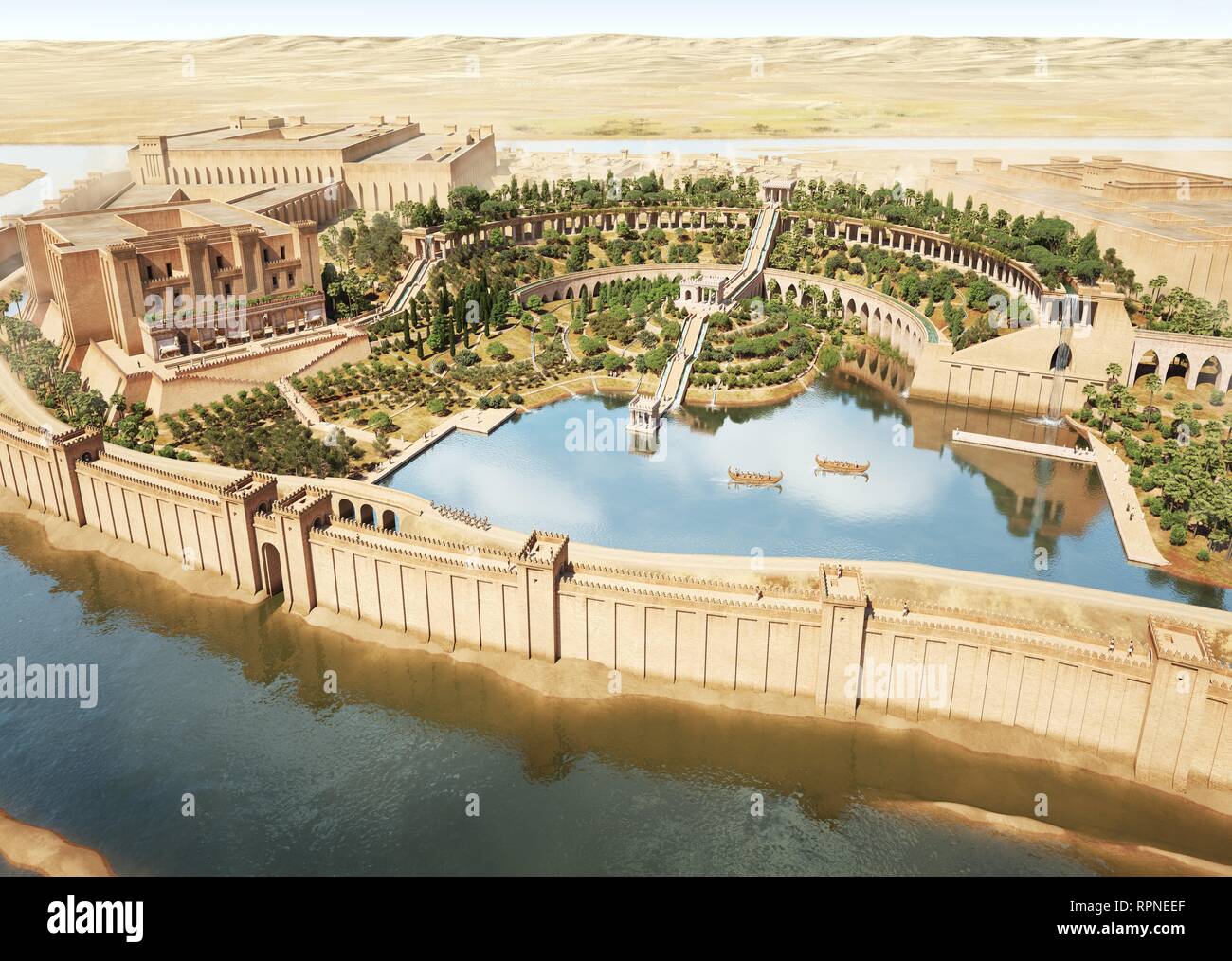 Ninive, capital of the kingdom of Assyria in the 8th century BCE. Ideal reconstruction of the famous 'hanging gardens' that have almost always been attributed to the city of Babylon and which the most recent studies in this regard attribute to the city of Ninive instead of to Babylon. Stock Photohttps://www.alamy.com/image-license-details/?v=1https://www.alamy.com/ninive-capital-of-the-kingdom-of-assyria-in-the-8th-century-bce-ideal-reconstruction-of-the-famous-hanging-gardens-that-have-almost-always-been-attributed-to-the-city-of-babylon-and-which-the-most-recent-studies-in-this-regard-attribute-to-the-city-of-ninive-instead-of-to-babylon-image237729591.html
Ninive, capital of the kingdom of Assyria in the 8th century BCE. Ideal reconstruction of the famous 'hanging gardens' that have almost always been attributed to the city of Babylon and which the most recent studies in this regard attribute to the city of Ninive instead of to Babylon. Stock Photohttps://www.alamy.com/image-license-details/?v=1https://www.alamy.com/ninive-capital-of-the-kingdom-of-assyria-in-the-8th-century-bce-ideal-reconstruction-of-the-famous-hanging-gardens-that-have-almost-always-been-attributed-to-the-city-of-babylon-and-which-the-most-recent-studies-in-this-regard-attribute-to-the-city-of-ninive-instead-of-to-babylon-image237729591.htmlRMRPNEEF–Ninive, capital of the kingdom of Assyria in the 8th century BCE. Ideal reconstruction of the famous 'hanging gardens' that have almost always been attributed to the city of Babylon and which the most recent studies in this regard attribute to the city of Ninive instead of to Babylon.
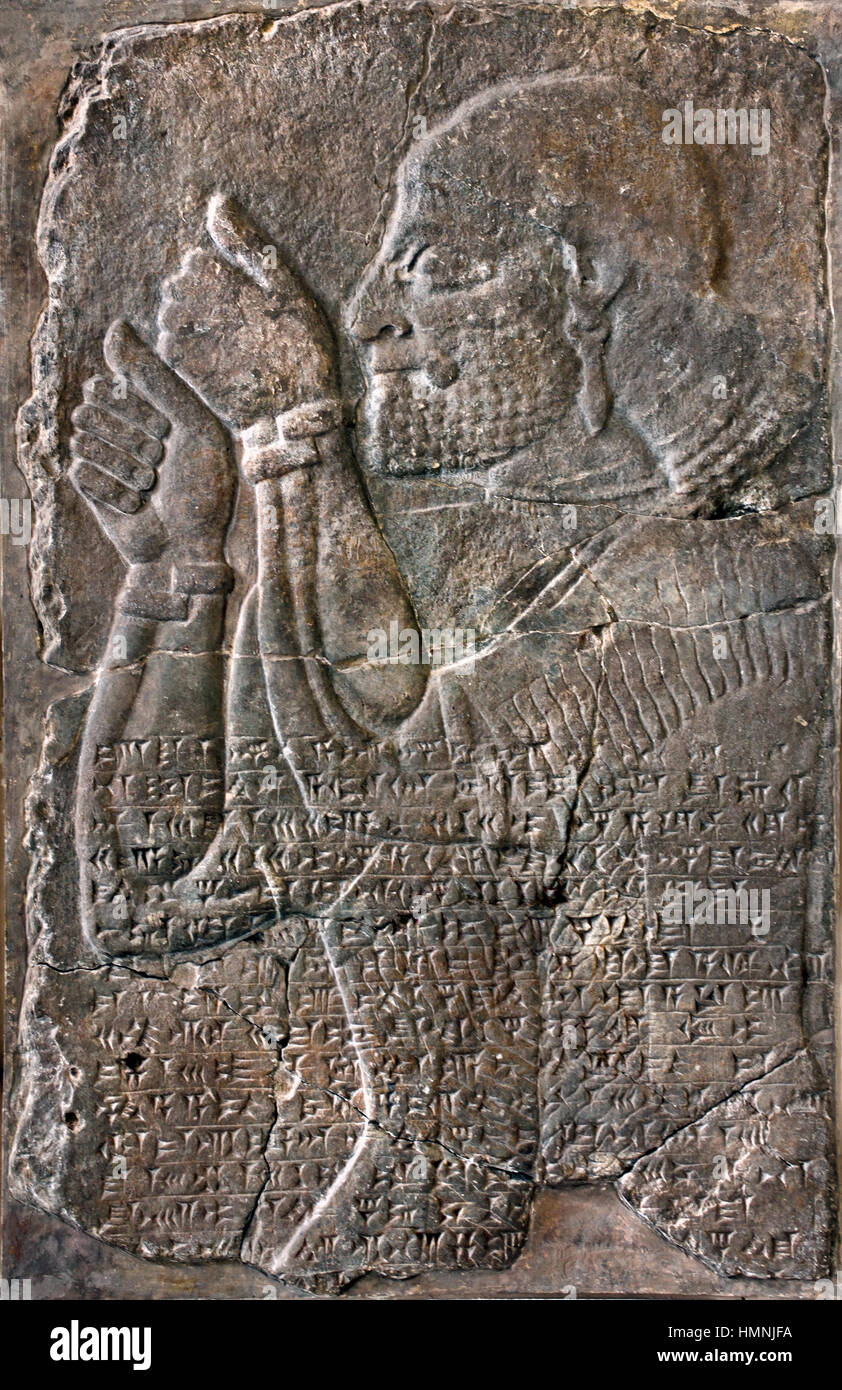 Nineveh ancient Assyrian city, of Upper Mesopotamia, (Mosul Iraq) capital Neo Assyrian Empire, (Assyria 2500 BC–612 BC) Stock Photohttps://www.alamy.com/image-license-details/?v=1https://www.alamy.com/stock-photo-nineveh-ancient-assyrian-city-of-upper-mesopotamia-mosul-iraq-capital-133241230.html
Nineveh ancient Assyrian city, of Upper Mesopotamia, (Mosul Iraq) capital Neo Assyrian Empire, (Assyria 2500 BC–612 BC) Stock Photohttps://www.alamy.com/image-license-details/?v=1https://www.alamy.com/stock-photo-nineveh-ancient-assyrian-city-of-upper-mesopotamia-mosul-iraq-capital-133241230.htmlRMHMNJFA–Nineveh ancient Assyrian city, of Upper Mesopotamia, (Mosul Iraq) capital Neo Assyrian Empire, (Assyria 2500 BC–612 BC)
 Iraq. Calah. (Nimrud) 20 miles S. of Mosul, capital of Assyria in 9th and 8th cents. B.C. 1932, Iraq, Calah (Extinct city Stock Photohttps://www.alamy.com/image-license-details/?v=1https://www.alamy.com/iraq-calah-nimrud-20-miles-s-of-mosul-capital-of-assyria-in-9th-and-8th-cents-bc-1932-iraq-calah-extinct-city-image350163689.html
Iraq. Calah. (Nimrud) 20 miles S. of Mosul, capital of Assyria in 9th and 8th cents. B.C. 1932, Iraq, Calah (Extinct city Stock Photohttps://www.alamy.com/image-license-details/?v=1https://www.alamy.com/iraq-calah-nimrud-20-miles-s-of-mosul-capital-of-assyria-in-9th-and-8th-cents-bc-1932-iraq-calah-extinct-city-image350163689.htmlRF2B9K9A1–Iraq. Calah. (Nimrud) 20 miles S. of Mosul, capital of Assyria in 9th and 8th cents. B.C. 1932, Iraq, Calah (Extinct city
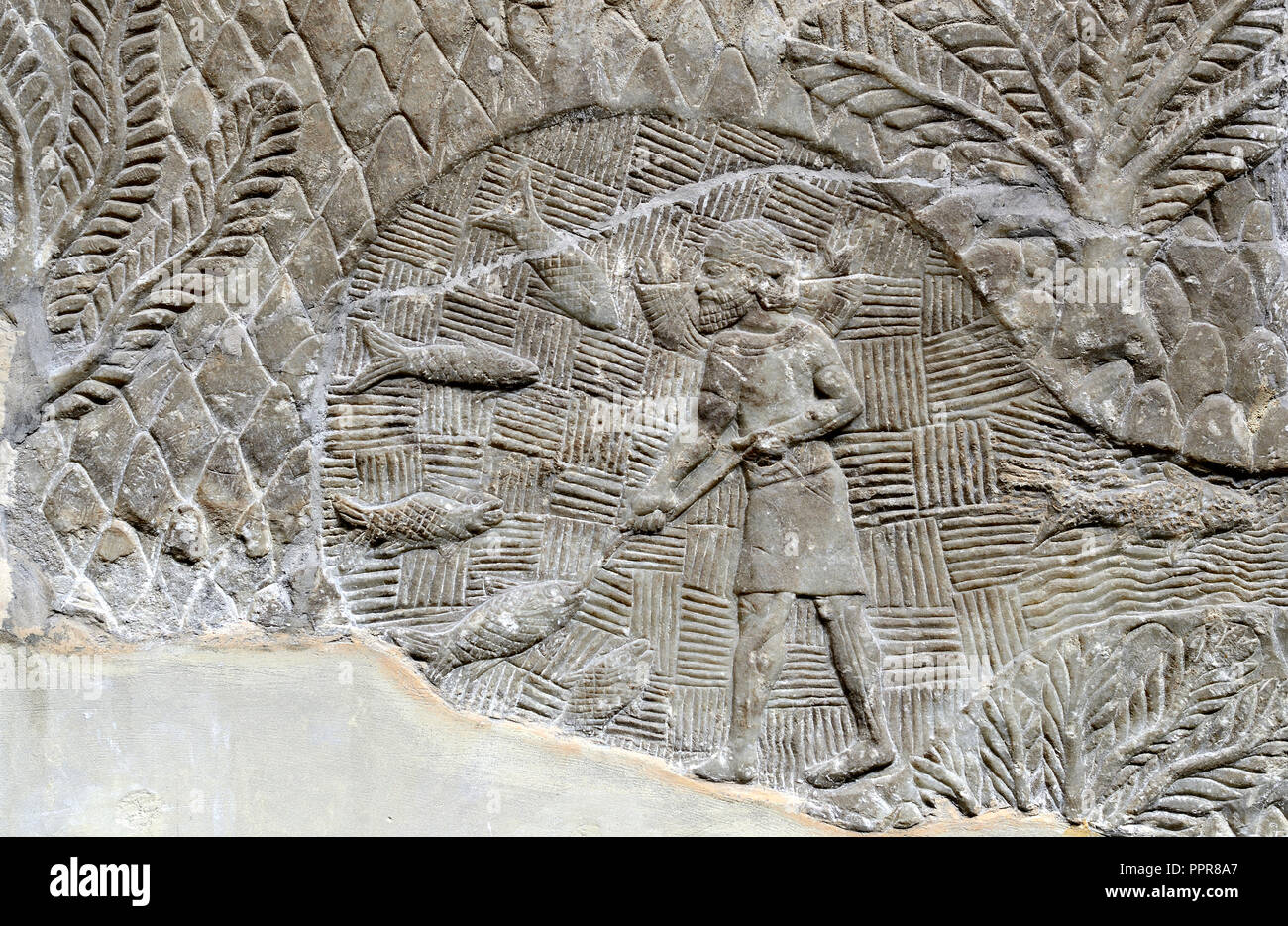 Assyrian stone panel (Nineveh: 700-692BC) showing a fisherman. British Museum, Bloomsbury, London, England, UK. Stock Photohttps://www.alamy.com/image-license-details/?v=1https://www.alamy.com/assyrian-stone-panel-nineveh-700-692bc-showing-a-fisherman-british-museum-bloomsbury-london-england-uk-image220558303.html
Assyrian stone panel (Nineveh: 700-692BC) showing a fisherman. British Museum, Bloomsbury, London, England, UK. Stock Photohttps://www.alamy.com/image-license-details/?v=1https://www.alamy.com/assyrian-stone-panel-nineveh-700-692bc-showing-a-fisherman-british-museum-bloomsbury-london-england-uk-image220558303.htmlRMPPR8A7–Assyrian stone panel (Nineveh: 700-692BC) showing a fisherman. British Museum, Bloomsbury, London, England, UK.
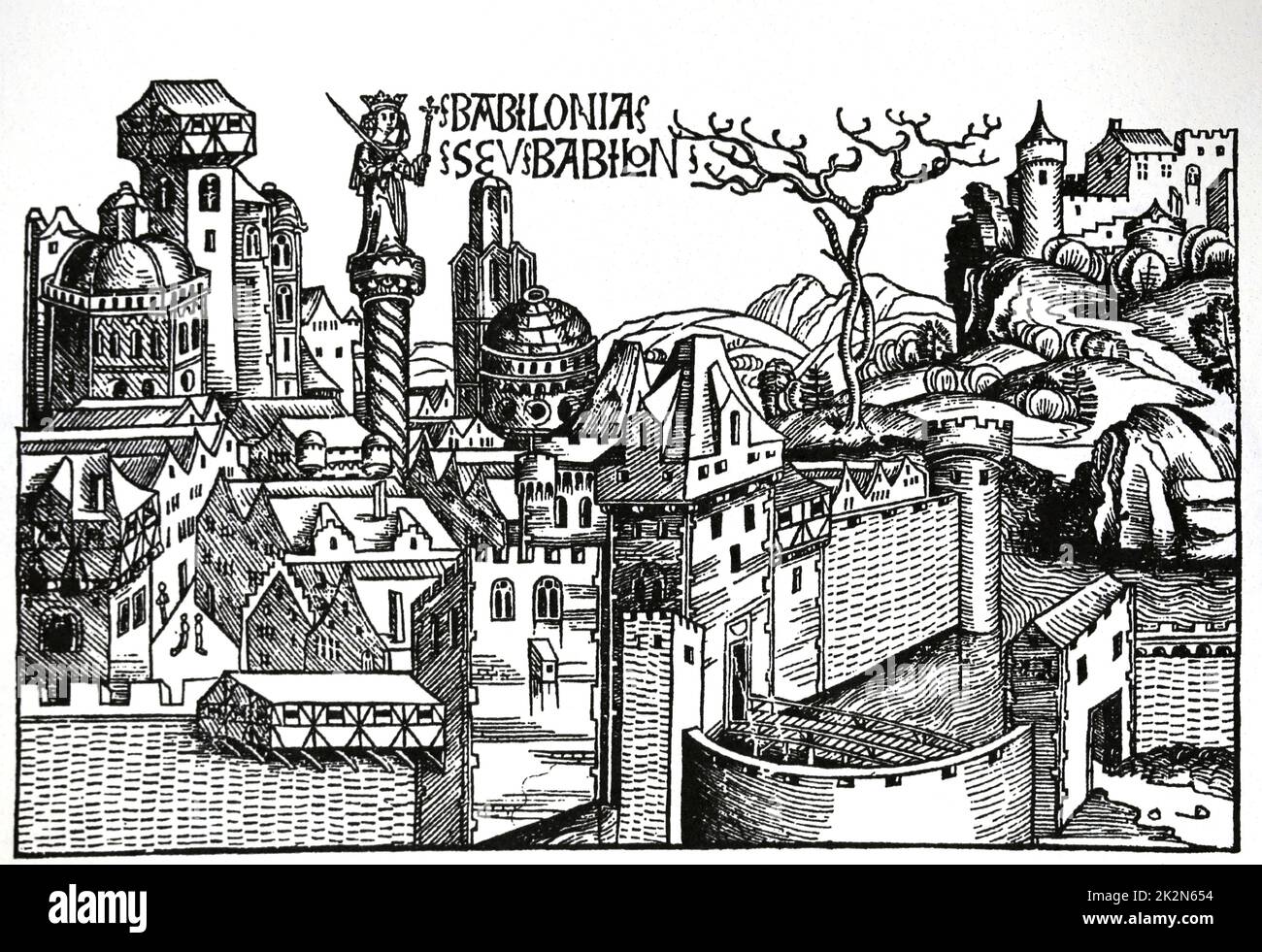 Mesopotamia. Babylon city. The Nuremberg Chronicles. 15th century. Stock Photohttps://www.alamy.com/image-license-details/?v=1https://www.alamy.com/mesopotamia-babylon-city-the-nuremberg-chronicles-15th-century-image483585456.html
Mesopotamia. Babylon city. The Nuremberg Chronicles. 15th century. Stock Photohttps://www.alamy.com/image-license-details/?v=1https://www.alamy.com/mesopotamia-babylon-city-the-nuremberg-chronicles-15th-century-image483585456.htmlRM2K2N654–Mesopotamia. Babylon city. The Nuremberg Chronicles. 15th century.
 The truth of revelation : demonstrated by an appeal to existing monuments, sculptures, gems, coins, and medals . of Jerusalem.There is no joy, no movement, no noise, you wouldtake it for a vast prison, where the days are as silentas the night; or rather an immense monastery, whoseinhabitants are constantly engaged in prayer. Andamid the desolations which inspired prophecy hadforetold, we may inquire for Nineveh, that exceedinggreat city, the capital of Assyria, and seated on thebanks of the Euphrates. Alas ! Nineveh is no more,—^empty and void, and waste,—the city, and eventhe ruins of the cit Stock Photohttps://www.alamy.com/image-license-details/?v=1https://www.alamy.com/the-truth-of-revelation-demonstrated-by-an-appeal-to-existing-monuments-sculptures-gems-coins-and-medals-of-jerusalemthere-is-no-joy-no-movement-no-noise-you-wouldtake-it-for-a-vast-prison-where-the-days-are-as-silentas-the-night-or-rather-an-immense-monastery-whoseinhabitants-are-constantly-engaged-in-prayer-andamid-the-desolations-which-inspired-prophecy-hadforetold-we-may-inquire-for-nineveh-that-exceedinggreat-city-the-capital-of-assyria-and-seated-on-thebanks-of-the-euphrates-alas-!-nineveh-is-no-moreempty-and-void-and-wastethe-city-and-eventhe-ruins-of-the-cit-image340006573.html
The truth of revelation : demonstrated by an appeal to existing monuments, sculptures, gems, coins, and medals . of Jerusalem.There is no joy, no movement, no noise, you wouldtake it for a vast prison, where the days are as silentas the night; or rather an immense monastery, whoseinhabitants are constantly engaged in prayer. Andamid the desolations which inspired prophecy hadforetold, we may inquire for Nineveh, that exceedinggreat city, the capital of Assyria, and seated on thebanks of the Euphrates. Alas ! Nineveh is no more,—^empty and void, and waste,—the city, and eventhe ruins of the cit Stock Photohttps://www.alamy.com/image-license-details/?v=1https://www.alamy.com/the-truth-of-revelation-demonstrated-by-an-appeal-to-existing-monuments-sculptures-gems-coins-and-medals-of-jerusalemthere-is-no-joy-no-movement-no-noise-you-wouldtake-it-for-a-vast-prison-where-the-days-are-as-silentas-the-night-or-rather-an-immense-monastery-whoseinhabitants-are-constantly-engaged-in-prayer-andamid-the-desolations-which-inspired-prophecy-hadforetold-we-may-inquire-for-nineveh-that-exceedinggreat-city-the-capital-of-assyria-and-seated-on-thebanks-of-the-euphrates-alas-!-nineveh-is-no-moreempty-and-void-and-wastethe-city-and-eventhe-ruins-of-the-cit-image340006573.htmlRM2AN4HRW–The truth of revelation : demonstrated by an appeal to existing monuments, sculptures, gems, coins, and medals . of Jerusalem.There is no joy, no movement, no noise, you wouldtake it for a vast prison, where the days are as silentas the night; or rather an immense monastery, whoseinhabitants are constantly engaged in prayer. Andamid the desolations which inspired prophecy hadforetold, we may inquire for Nineveh, that exceedinggreat city, the capital of Assyria, and seated on thebanks of the Euphrates. Alas ! Nineveh is no more,—^empty and void, and waste,—the city, and eventhe ruins of the cit
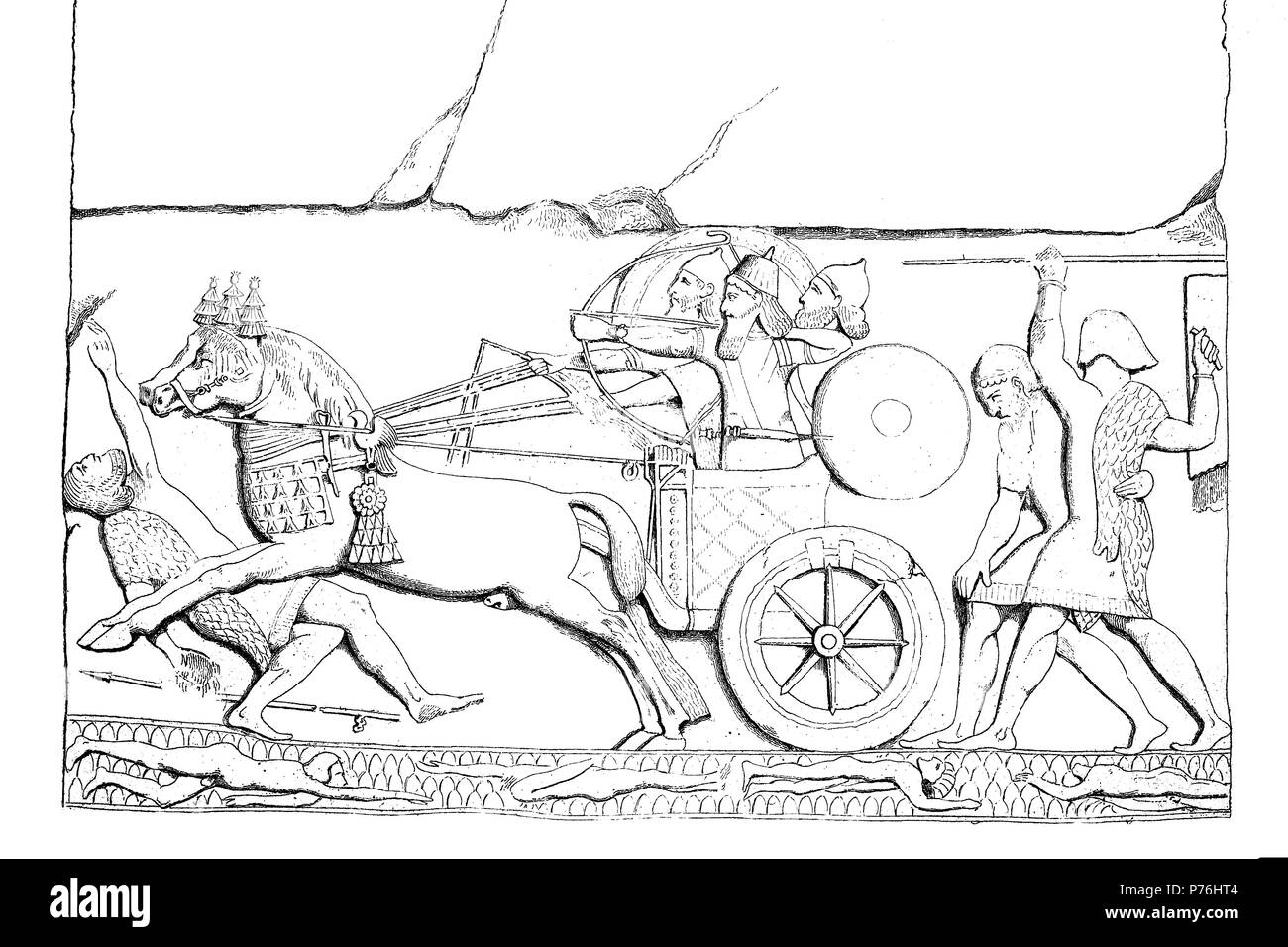 relief on the portal of Khorsabad, the Assyrian capital in the time of Sargon II of Assyria, Mesopotamia, Iraq, digital improved reproduction of an original print from the year 1881 Stock Photohttps://www.alamy.com/image-license-details/?v=1https://www.alamy.com/relief-on-the-portal-of-khorsabad-the-assyrian-capital-in-the-time-of-sargon-ii-of-assyria-mesopotamia-iraq-digital-improved-reproduction-of-an-original-print-from-the-year-1881-image210972724.html
relief on the portal of Khorsabad, the Assyrian capital in the time of Sargon II of Assyria, Mesopotamia, Iraq, digital improved reproduction of an original print from the year 1881 Stock Photohttps://www.alamy.com/image-license-details/?v=1https://www.alamy.com/relief-on-the-portal-of-khorsabad-the-assyrian-capital-in-the-time-of-sargon-ii-of-assyria-mesopotamia-iraq-digital-improved-reproduction-of-an-original-print-from-the-year-1881-image210972724.htmlRFP76HT4–relief on the portal of Khorsabad, the Assyrian capital in the time of Sargon II of Assyria, Mesopotamia, Iraq, digital improved reproduction of an original print from the year 1881
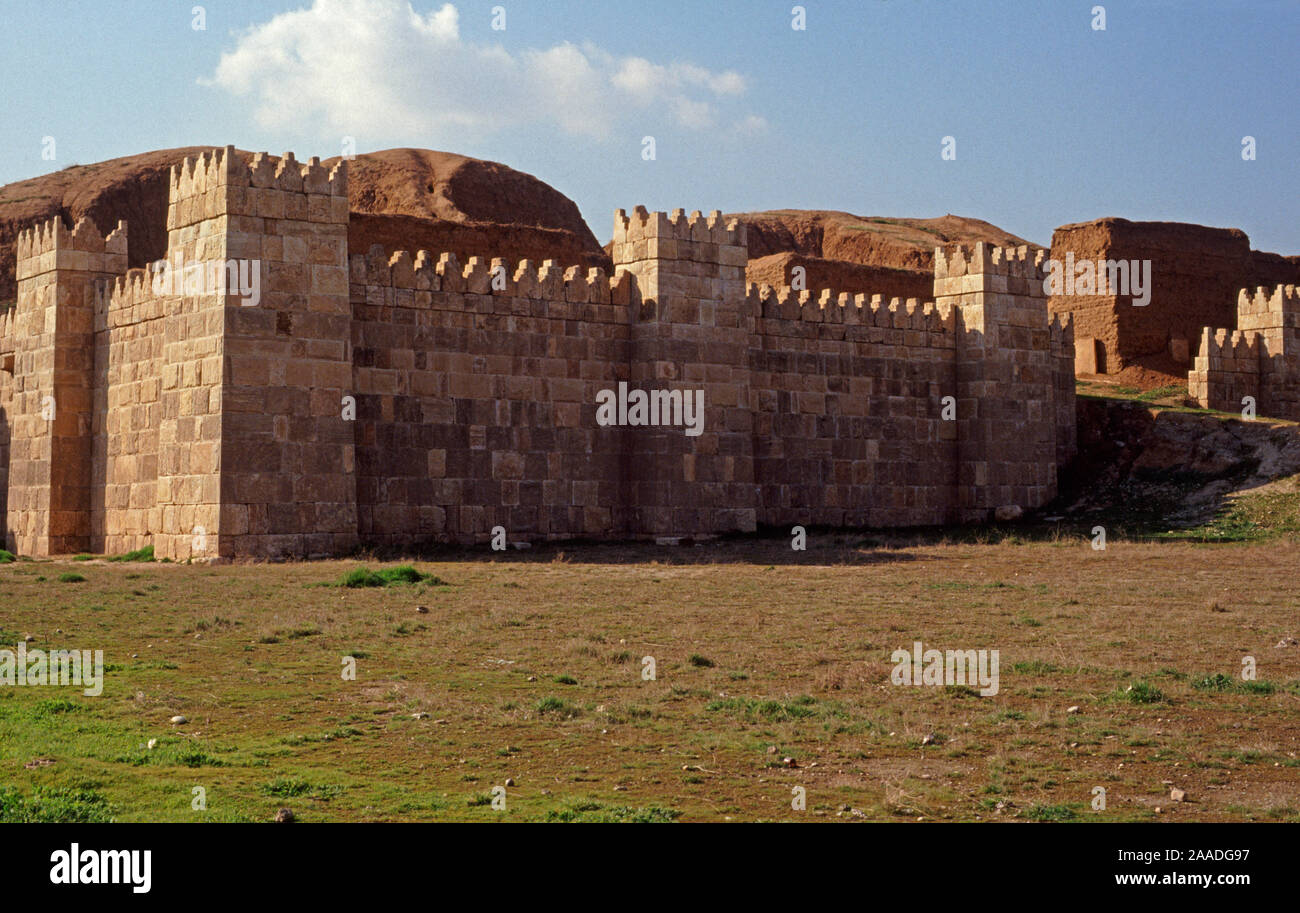 Ancient Assyria reconstructed section of the wall that once surrounded the capital, Nineveh, now engulfed by the modern city of Mosul, Iraq. In 2014 Hatra was taken over by Islamic State militants and much of the site was destroyed in 2015. Stock Photohttps://www.alamy.com/image-license-details/?v=1https://www.alamy.com/ancient-assyria-reconstructed-section-of-the-wall-that-once-surrounded-the-capital-nineveh-now-engulfed-by-the-modern-city-of-mosul-iraq-in-2014-hatra-was-taken-over-by-islamic-state-militants-and-much-of-the-site-was-destroyed-in-2015-image333441731.html
Ancient Assyria reconstructed section of the wall that once surrounded the capital, Nineveh, now engulfed by the modern city of Mosul, Iraq. In 2014 Hatra was taken over by Islamic State militants and much of the site was destroyed in 2015. Stock Photohttps://www.alamy.com/image-license-details/?v=1https://www.alamy.com/ancient-assyria-reconstructed-section-of-the-wall-that-once-surrounded-the-capital-nineveh-now-engulfed-by-the-modern-city-of-mosul-iraq-in-2014-hatra-was-taken-over-by-islamic-state-militants-and-much-of-the-site-was-destroyed-in-2015-image333441731.htmlRM2AADG97–Ancient Assyria reconstructed section of the wall that once surrounded the capital, Nineveh, now engulfed by the modern city of Mosul, Iraq. In 2014 Hatra was taken over by Islamic State militants and much of the site was destroyed in 2015.
 Iraq: Stone stele of Ashurnasirpal II, King of Nimrud, 883–859 BCE. Assyrian King Ashurnasirpal II reigned from 883–859 BCE and built a new capital at Nimrud, south of Nineveh on the river Tigris. In ancient times, the city was called Kalḫu. The Arabs called the city Nimrud after the Biblical Nimrod, a legendary hunting hero. The city covered an area of around 16 square miles. Ruins of the city are found in modern day Iraq, some 30 km southeast of Mosul. Stock Photohttps://www.alamy.com/image-license-details/?v=1https://www.alamy.com/iraq-stone-stele-of-ashurnasirpal-ii-king-of-nimrud-883859-bce-assyrian-king-ashurnasirpal-ii-reigned-from-883859-bce-and-built-a-new-capital-at-nimrud-south-of-nineveh-on-the-river-tigris-in-ancient-times-the-city-was-called-kalu-the-arabs-called-the-city-nimrud-after-the-biblical-nimrod-a-legendary-hunting-hero-the-city-covered-an-area-of-around-16-square-miles-ruins-of-the-city-are-found-in-modern-day-iraq-some-30-km-southeast-of-mosul-image344224261.html
Iraq: Stone stele of Ashurnasirpal II, King of Nimrud, 883–859 BCE. Assyrian King Ashurnasirpal II reigned from 883–859 BCE and built a new capital at Nimrud, south of Nineveh on the river Tigris. In ancient times, the city was called Kalḫu. The Arabs called the city Nimrud after the Biblical Nimrod, a legendary hunting hero. The city covered an area of around 16 square miles. Ruins of the city are found in modern day Iraq, some 30 km southeast of Mosul. Stock Photohttps://www.alamy.com/image-license-details/?v=1https://www.alamy.com/iraq-stone-stele-of-ashurnasirpal-ii-king-of-nimrud-883859-bce-assyrian-king-ashurnasirpal-ii-reigned-from-883859-bce-and-built-a-new-capital-at-nimrud-south-of-nineveh-on-the-river-tigris-in-ancient-times-the-city-was-called-kalu-the-arabs-called-the-city-nimrud-after-the-biblical-nimrod-a-legendary-hunting-hero-the-city-covered-an-area-of-around-16-square-miles-ruins-of-the-city-are-found-in-modern-day-iraq-some-30-km-southeast-of-mosul-image344224261.htmlRM2B00NFH–Iraq: Stone stele of Ashurnasirpal II, King of Nimrud, 883–859 BCE. Assyrian King Ashurnasirpal II reigned from 883–859 BCE and built a new capital at Nimrud, south of Nineveh on the river Tigris. In ancient times, the city was called Kalḫu. The Arabs called the city Nimrud after the Biblical Nimrod, a legendary hunting hero. The city covered an area of around 16 square miles. Ruins of the city are found in modern day Iraq, some 30 km southeast of Mosul.
 Relief at Assyrian capital city of Kahlu, founded by Ashurnasirpal II, ruled Assyria from 883 through 859 B.C. Stock Photohttps://www.alamy.com/image-license-details/?v=1https://www.alamy.com/stock-photo-relief-at-assyrian-capital-city-of-kahlu-founded-by-ashurnasirpal-25132197.html
Relief at Assyrian capital city of Kahlu, founded by Ashurnasirpal II, ruled Assyria from 883 through 859 B.C. Stock Photohttps://www.alamy.com/image-license-details/?v=1https://www.alamy.com/stock-photo-relief-at-assyrian-capital-city-of-kahlu-founded-by-ashurnasirpal-25132197.htmlRFBCTTAD–Relief at Assyrian capital city of Kahlu, founded by Ashurnasirpal II, ruled Assyria from 883 through 859 B.C.
 Nineveh (Akkadian: Ninua) is an ancient Mesopotamian city on the eastern bank of the Tigris River, and capital of the Neo-Assyrian Empire. It was the largest city in the world for some fifty years until, after a bitter period of civil war in Assyria itself, it was sacked by an unusual coalition of former subject peoples, the Babylonians, Medes, Persians, Chaldeans, Scythians and Cimmerians in 612 BCE. Its ruins are across the river from the modern-day major city of Mosul, in the Ninawa Governorate of Iraq. In early 2015 the jihadist group ISIL (Islamic State in Iraq and the Levant) announced Stock Photohttps://www.alamy.com/image-license-details/?v=1https://www.alamy.com/nineveh-akkadian-ninua-is-an-ancient-mesopotamian-city-on-the-eastern-bank-of-the-tigris-river-and-capital-of-the-neo-assyrian-empire-it-was-the-largest-city-in-the-world-for-some-fifty-years-until-after-a-bitter-period-of-civil-war-in-assyria-itself-it-was-sacked-by-an-unusual-coalition-of-former-subject-peoples-the-babylonians-medes-persians-chaldeans-scythians-and-cimmerians-in-612-bce-its-ruins-are-across-the-river-from-the-modern-day-major-city-of-mosul-in-the-ninawa-governorate-of-iraq-in-early-2015-the-jihadist-group-isil-islamic-state-in-iraq-and-the-levant-announced-image344277981.html
Nineveh (Akkadian: Ninua) is an ancient Mesopotamian city on the eastern bank of the Tigris River, and capital of the Neo-Assyrian Empire. It was the largest city in the world for some fifty years until, after a bitter period of civil war in Assyria itself, it was sacked by an unusual coalition of former subject peoples, the Babylonians, Medes, Persians, Chaldeans, Scythians and Cimmerians in 612 BCE. Its ruins are across the river from the modern-day major city of Mosul, in the Ninawa Governorate of Iraq. In early 2015 the jihadist group ISIL (Islamic State in Iraq and the Levant) announced Stock Photohttps://www.alamy.com/image-license-details/?v=1https://www.alamy.com/nineveh-akkadian-ninua-is-an-ancient-mesopotamian-city-on-the-eastern-bank-of-the-tigris-river-and-capital-of-the-neo-assyrian-empire-it-was-the-largest-city-in-the-world-for-some-fifty-years-until-after-a-bitter-period-of-civil-war-in-assyria-itself-it-was-sacked-by-an-unusual-coalition-of-former-subject-peoples-the-babylonians-medes-persians-chaldeans-scythians-and-cimmerians-in-612-bce-its-ruins-are-across-the-river-from-the-modern-day-major-city-of-mosul-in-the-ninawa-governorate-of-iraq-in-early-2015-the-jihadist-group-isil-islamic-state-in-iraq-and-the-levant-announced-image344277981.htmlRM2B03625–Nineveh (Akkadian: Ninua) is an ancient Mesopotamian city on the eastern bank of the Tigris River, and capital of the Neo-Assyrian Empire. It was the largest city in the world for some fifty years until, after a bitter period of civil war in Assyria itself, it was sacked by an unusual coalition of former subject peoples, the Babylonians, Medes, Persians, Chaldeans, Scythians and Cimmerians in 612 BCE. Its ruins are across the river from the modern-day major city of Mosul, in the Ninawa Governorate of Iraq. In early 2015 the jihadist group ISIL (Islamic State in Iraq and the Levant) announced
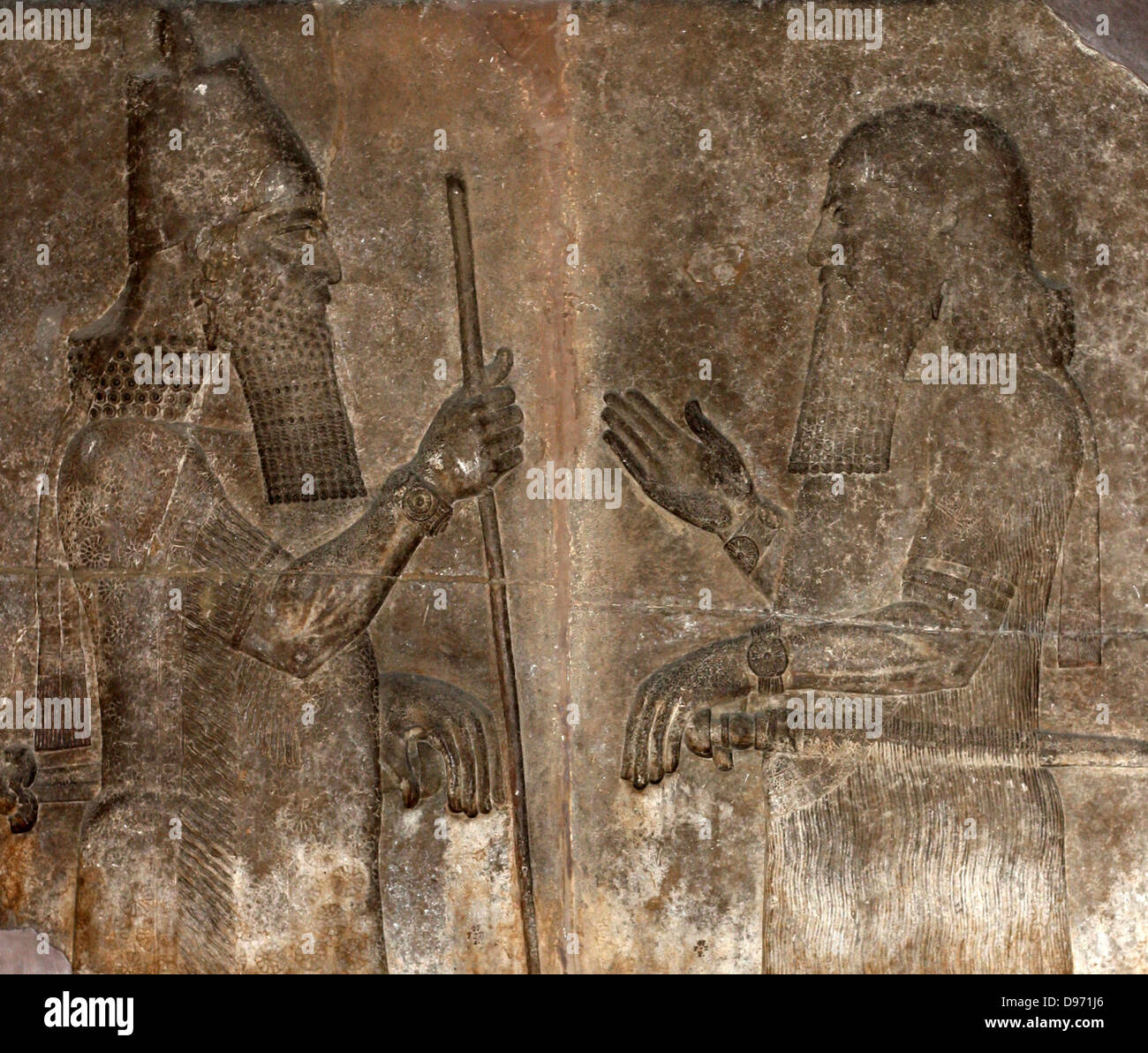 The Reign of Sargon 721-705 The Assyrian empire under Sargon II extended from central Iran to the Mediterranean. The king built himself a new capital city, Khorsabad, with a magnificently sculptured palace, which was discovered by the French archaeologist, Botta. Stock Photohttps://www.alamy.com/image-license-details/?v=1https://www.alamy.com/stock-photo-the-reign-of-sargon-721-705-the-assyrian-empire-under-sargon-ii-extended-57317966.html
The Reign of Sargon 721-705 The Assyrian empire under Sargon II extended from central Iran to the Mediterranean. The king built himself a new capital city, Khorsabad, with a magnificently sculptured palace, which was discovered by the French archaeologist, Botta. Stock Photohttps://www.alamy.com/image-license-details/?v=1https://www.alamy.com/stock-photo-the-reign-of-sargon-721-705-the-assyrian-empire-under-sargon-ii-extended-57317966.htmlRMD971J6–The Reign of Sargon 721-705 The Assyrian empire under Sargon II extended from central Iran to the Mediterranean. The king built himself a new capital city, Khorsabad, with a magnificently sculptured palace, which was discovered by the French archaeologist, Botta.
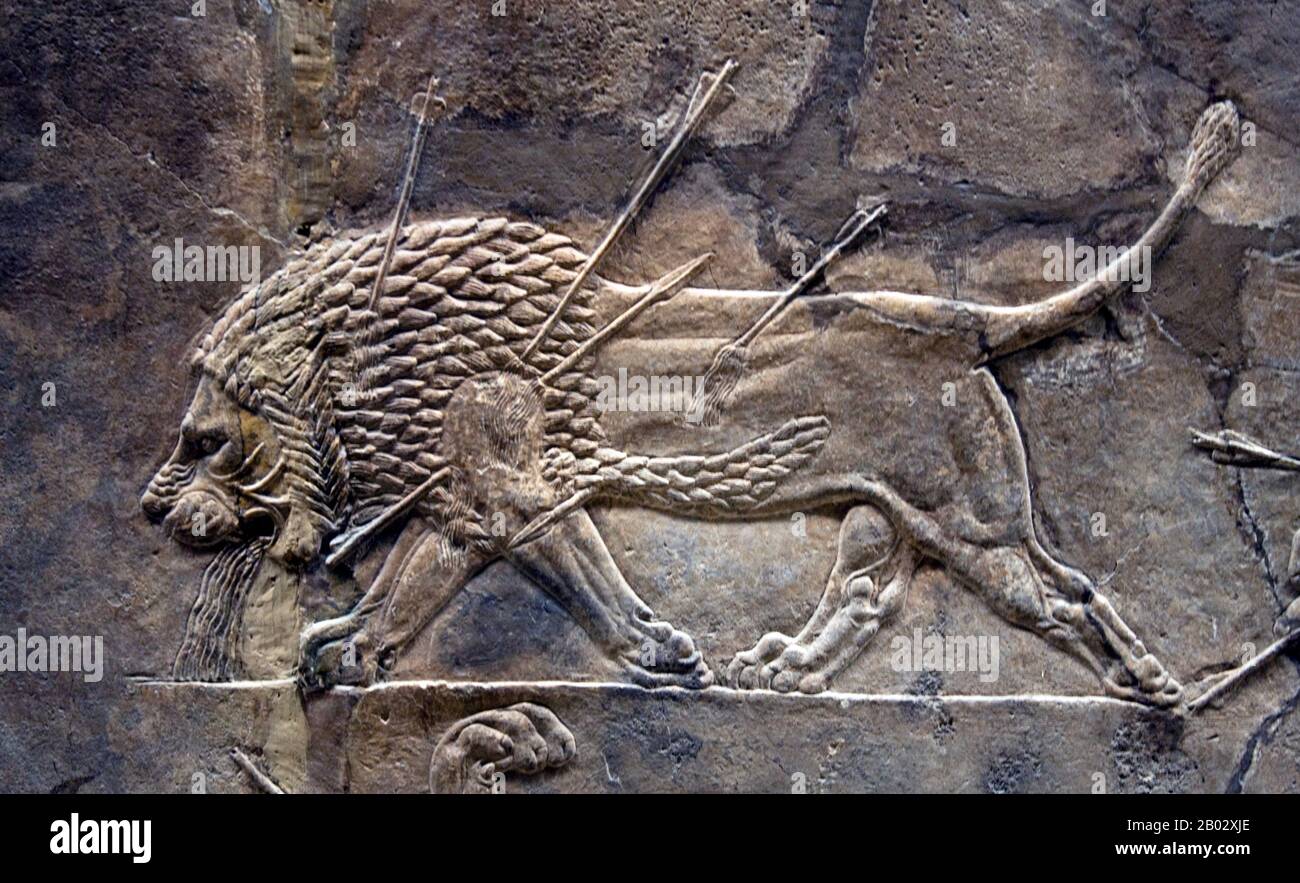 Nineveh (Akkadian: Ninua) is an ancient Mesopotamian city on the eastern bank of the Tigris River, and capital of the Neo-Assyrian Empire. It was the largest city in the world for some fifty years until, after a bitter period of civil war in Assyria itself, it was sacked by an unusual coalition of former subject peoples, the Babylonians, Medes, Persians, Chaldeans, Scythians and Cimmerians in 612 BCE. Its ruins are across the river from the modern-day major city of Mosul, in the Ninawa Governorate of Iraq. In early 2015 the jihadist group ISIL (Islamic State in Iraq and the Levant) announced Stock Photohttps://www.alamy.com/image-license-details/?v=1https://www.alamy.com/nineveh-akkadian-ninua-is-an-ancient-mesopotamian-city-on-the-eastern-bank-of-the-tigris-river-and-capital-of-the-neo-assyrian-empire-it-was-the-largest-city-in-the-world-for-some-fifty-years-until-after-a-bitter-period-of-civil-war-in-assyria-itself-it-was-sacked-by-an-unusual-coalition-of-former-subject-peoples-the-babylonians-medes-persians-chaldeans-scythians-and-cimmerians-in-612-bce-its-ruins-are-across-the-river-from-the-modern-day-major-city-of-mosul-in-the-ninawa-governorate-of-iraq-in-early-2015-the-jihadist-group-isil-islamic-state-in-iraq-and-the-levant-announced-image344272166.html
Nineveh (Akkadian: Ninua) is an ancient Mesopotamian city on the eastern bank of the Tigris River, and capital of the Neo-Assyrian Empire. It was the largest city in the world for some fifty years until, after a bitter period of civil war in Assyria itself, it was sacked by an unusual coalition of former subject peoples, the Babylonians, Medes, Persians, Chaldeans, Scythians and Cimmerians in 612 BCE. Its ruins are across the river from the modern-day major city of Mosul, in the Ninawa Governorate of Iraq. In early 2015 the jihadist group ISIL (Islamic State in Iraq and the Levant) announced Stock Photohttps://www.alamy.com/image-license-details/?v=1https://www.alamy.com/nineveh-akkadian-ninua-is-an-ancient-mesopotamian-city-on-the-eastern-bank-of-the-tigris-river-and-capital-of-the-neo-assyrian-empire-it-was-the-largest-city-in-the-world-for-some-fifty-years-until-after-a-bitter-period-of-civil-war-in-assyria-itself-it-was-sacked-by-an-unusual-coalition-of-former-subject-peoples-the-babylonians-medes-persians-chaldeans-scythians-and-cimmerians-in-612-bce-its-ruins-are-across-the-river-from-the-modern-day-major-city-of-mosul-in-the-ninawa-governorate-of-iraq-in-early-2015-the-jihadist-group-isil-islamic-state-in-iraq-and-the-levant-announced-image344272166.htmlRM2B02XJE–Nineveh (Akkadian: Ninua) is an ancient Mesopotamian city on the eastern bank of the Tigris River, and capital of the Neo-Assyrian Empire. It was the largest city in the world for some fifty years until, after a bitter period of civil war in Assyria itself, it was sacked by an unusual coalition of former subject peoples, the Babylonians, Medes, Persians, Chaldeans, Scythians and Cimmerians in 612 BCE. Its ruins are across the river from the modern-day major city of Mosul, in the Ninawa Governorate of Iraq. In early 2015 the jihadist group ISIL (Islamic State in Iraq and the Levant) announced
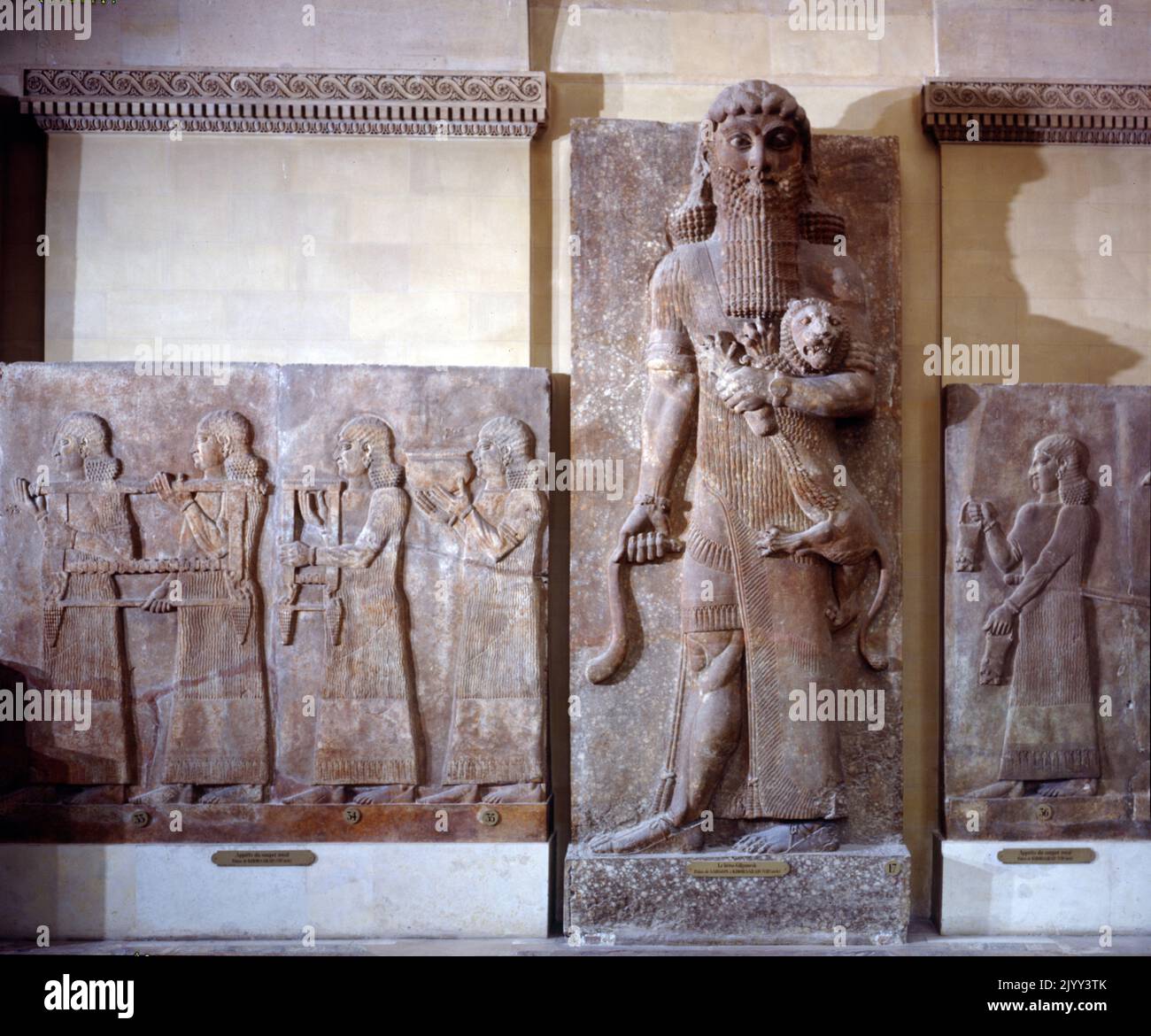 Assyrian relief depicting the hero Gilgamesh, taming a Lion. Measuring over five meters high, the sculpture depicts a figure choking a lion. Hero mastering a lion. Relief from the facade of the throne room, Palace of Sargon II at Khorsabad (Dur Sharrukin), 713-706 BC. Dur-Sharru-ukin (Fortress of Sargon?), in present day Khorsabad, Iraq, was the Assyrian capital in the time of Sargon II of Assyria. Stock Photohttps://www.alamy.com/image-license-details/?v=1https://www.alamy.com/assyrian-relief-depicting-the-hero-gilgamesh-taming-a-lion-measuring-over-five-meters-high-the-sculpture-depicts-a-figure-choking-a-lion-hero-mastering-a-lion-relief-from-the-facade-of-the-throne-room-palace-of-sargon-ii-at-khorsabad-dur-sharrukin-713-706-bc-dur-sharru-ukin-fortress-of-sargon-in-present-day-khorsabad-iraq-was-the-assyrian-capital-in-the-time-of-sargon-ii-of-assyria-image481871395.html
Assyrian relief depicting the hero Gilgamesh, taming a Lion. Measuring over five meters high, the sculpture depicts a figure choking a lion. Hero mastering a lion. Relief from the facade of the throne room, Palace of Sargon II at Khorsabad (Dur Sharrukin), 713-706 BC. Dur-Sharru-ukin (Fortress of Sargon?), in present day Khorsabad, Iraq, was the Assyrian capital in the time of Sargon II of Assyria. Stock Photohttps://www.alamy.com/image-license-details/?v=1https://www.alamy.com/assyrian-relief-depicting-the-hero-gilgamesh-taming-a-lion-measuring-over-five-meters-high-the-sculpture-depicts-a-figure-choking-a-lion-hero-mastering-a-lion-relief-from-the-facade-of-the-throne-room-palace-of-sargon-ii-at-khorsabad-dur-sharrukin-713-706-bc-dur-sharru-ukin-fortress-of-sargon-in-present-day-khorsabad-iraq-was-the-assyrian-capital-in-the-time-of-sargon-ii-of-assyria-image481871395.htmlRM2JYY3TK–Assyrian relief depicting the hero Gilgamesh, taming a Lion. Measuring over five meters high, the sculpture depicts a figure choking a lion. Hero mastering a lion. Relief from the facade of the throne room, Palace of Sargon II at Khorsabad (Dur Sharrukin), 713-706 BC. Dur-Sharru-ukin (Fortress of Sargon?), in present day Khorsabad, Iraq, was the Assyrian capital in the time of Sargon II of Assyria.
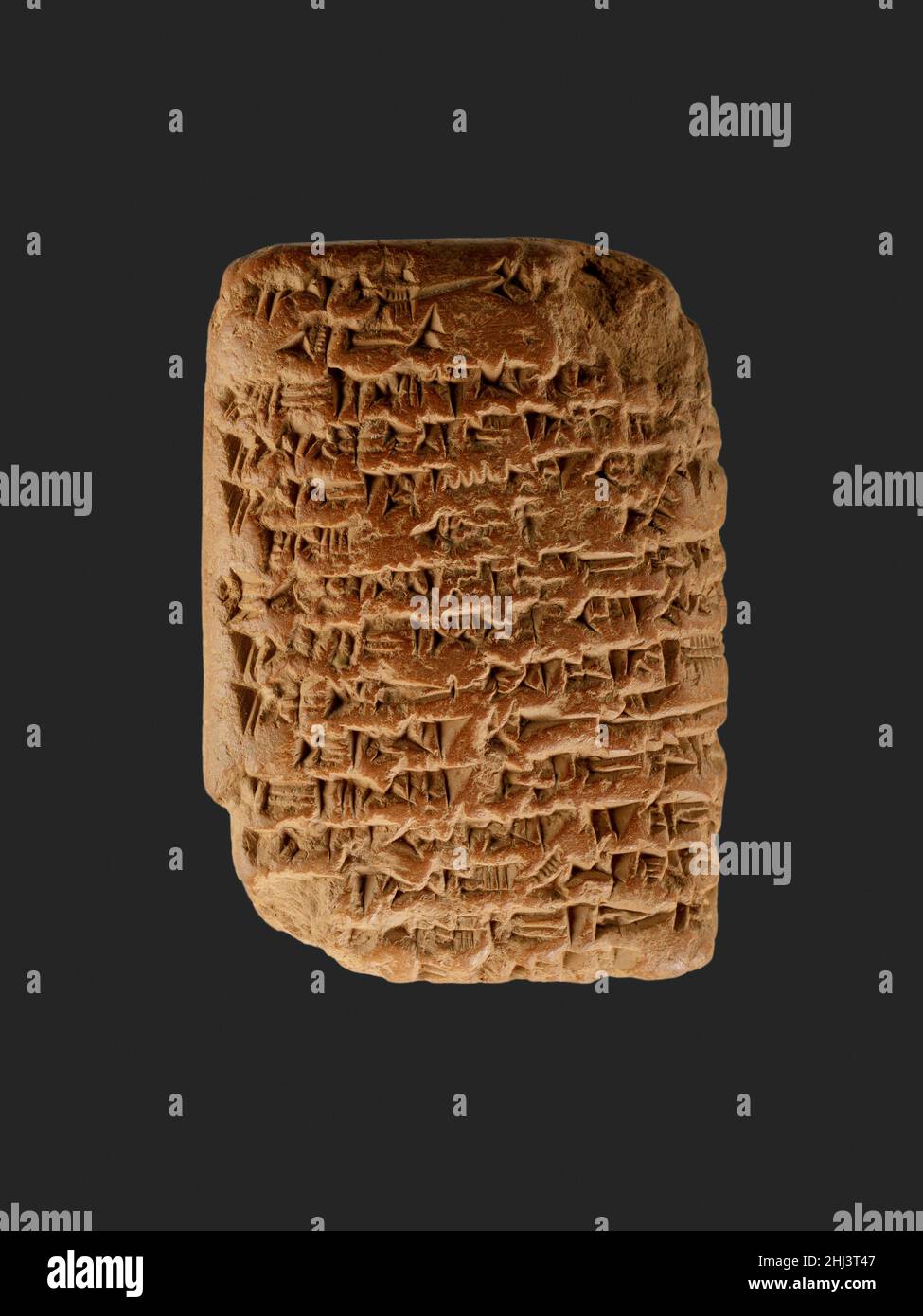 Amarna letter: Royal Letter from Ashur-uballit, the king of Assyria, to the king of Egypt ca. 1353–1336 B.C. New Kingdom, Amarna Period This document was found in the late 1880s at the site of Amarna, the religious capital of Egypt under Akhenaten. It was likely originally stored in administrative offices that formed part of a palace complex in the central part of the city. It is written in cuneiform script on a clay tablet using a reed stylus. The language is an Assyrian dialect of Akkadian, the lingua franca of the time. In this letter the king of Assyria, Ashur-uballit, sends a personal mes Stock Photohttps://www.alamy.com/image-license-details/?v=1https://www.alamy.com/amarna-letter-royal-letter-from-ashur-uballit-the-king-of-assyria-to-the-king-of-egypt-ca-13531336-bc-new-kingdom-amarna-period-this-document-was-found-in-the-late-1880s-at-the-site-of-amarna-the-religious-capital-of-egypt-under-akhenaten-it-was-likely-originally-stored-in-administrative-offices-that-formed-part-of-a-palace-complex-in-the-central-part-of-the-city-it-is-written-in-cuneiform-script-on-a-clay-tablet-using-a-reed-stylus-the-language-is-an-assyrian-dialect-of-akkadian-the-lingua-franca-of-the-time-in-this-letter-the-king-of-assyria-ashur-uballit-sends-a-personal-mes-image458618167.html
Amarna letter: Royal Letter from Ashur-uballit, the king of Assyria, to the king of Egypt ca. 1353–1336 B.C. New Kingdom, Amarna Period This document was found in the late 1880s at the site of Amarna, the religious capital of Egypt under Akhenaten. It was likely originally stored in administrative offices that formed part of a palace complex in the central part of the city. It is written in cuneiform script on a clay tablet using a reed stylus. The language is an Assyrian dialect of Akkadian, the lingua franca of the time. In this letter the king of Assyria, Ashur-uballit, sends a personal mes Stock Photohttps://www.alamy.com/image-license-details/?v=1https://www.alamy.com/amarna-letter-royal-letter-from-ashur-uballit-the-king-of-assyria-to-the-king-of-egypt-ca-13531336-bc-new-kingdom-amarna-period-this-document-was-found-in-the-late-1880s-at-the-site-of-amarna-the-religious-capital-of-egypt-under-akhenaten-it-was-likely-originally-stored-in-administrative-offices-that-formed-part-of-a-palace-complex-in-the-central-part-of-the-city-it-is-written-in-cuneiform-script-on-a-clay-tablet-using-a-reed-stylus-the-language-is-an-assyrian-dialect-of-akkadian-the-lingua-franca-of-the-time-in-this-letter-the-king-of-assyria-ashur-uballit-sends-a-personal-mes-image458618167.htmlRM2HJ3T47–Amarna letter: Royal Letter from Ashur-uballit, the king of Assyria, to the king of Egypt ca. 1353–1336 B.C. New Kingdom, Amarna Period This document was found in the late 1880s at the site of Amarna, the religious capital of Egypt under Akhenaten. It was likely originally stored in administrative offices that formed part of a palace complex in the central part of the city. It is written in cuneiform script on a clay tablet using a reed stylus. The language is an Assyrian dialect of Akkadian, the lingua franca of the time. In this letter the king of Assyria, Ashur-uballit, sends a personal mes
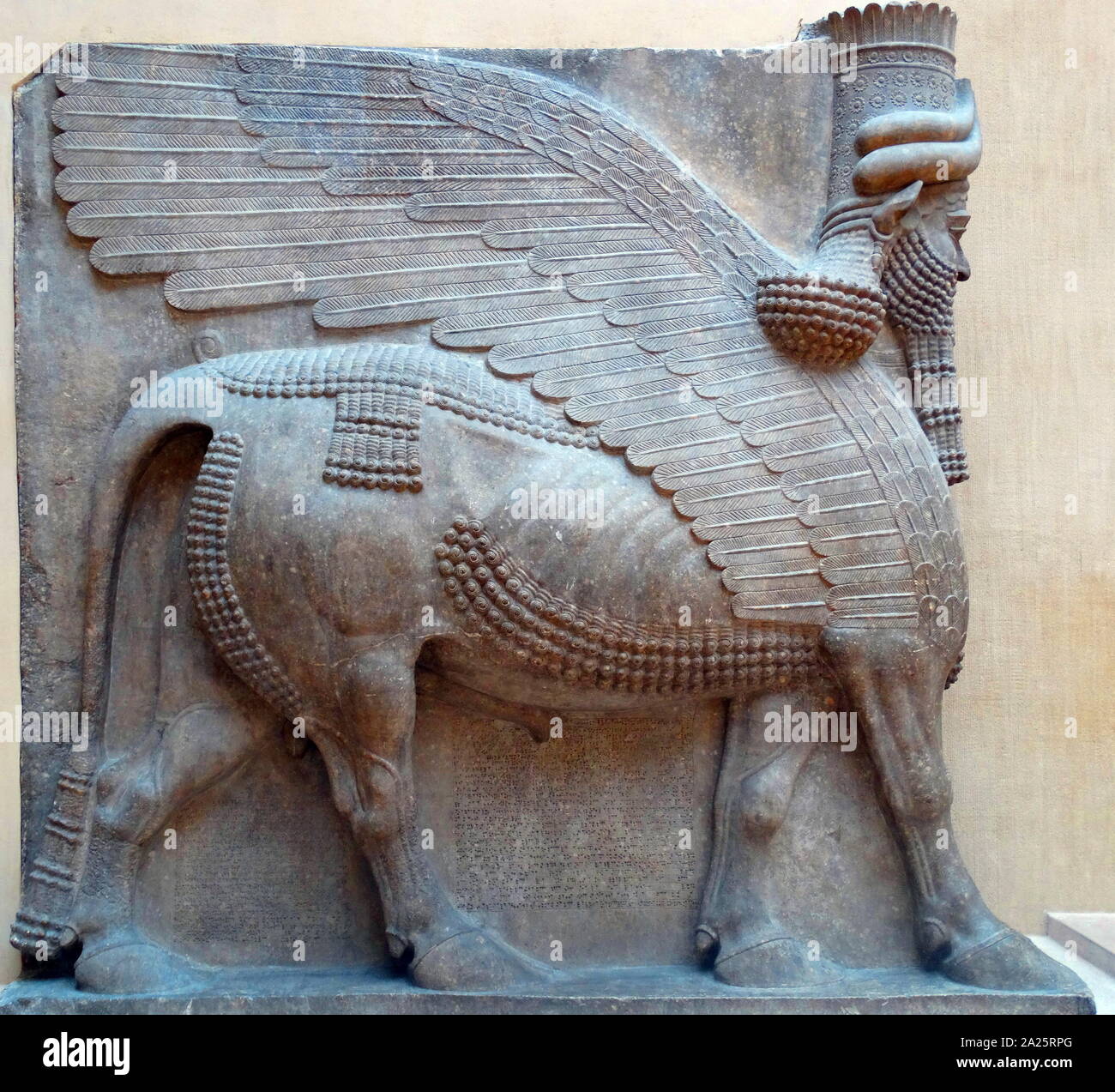 Human-headed winged bull from Sargon II's palace in Dur-Sharrukin, modern Khorsabad. In art, Lamassu were depicted with bodies of either winged bulls or lions and heads of human males. Dur-Sharrukin (Fortress of Sargon?), present day Khorsabad, was the Assyrian capital in the time of Sargon II of Assyria. Khorsabad is a village in northern Iraq, northeast of Mosul. The great city was entirely built in the decade preceding 706 BC Stock Photohttps://www.alamy.com/image-license-details/?v=1https://www.alamy.com/human-headed-winged-bull-from-sargon-iis-palace-in-dur-sharrukin-modern-khorsabad-in-art-lamassu-were-depicted-with-bodies-of-either-winged-bulls-or-lions-and-heads-of-human-males-dur-sharrukin-fortress-of-sargon-present-day-khorsabad-was-the-assyrian-capital-in-the-time-of-sargon-ii-of-assyria-khorsabad-is-a-village-in-northern-iraq-northeast-of-mosul-the-great-city-was-entirely-built-in-the-decade-preceding-706-bc-image328354728.html
Human-headed winged bull from Sargon II's palace in Dur-Sharrukin, modern Khorsabad. In art, Lamassu were depicted with bodies of either winged bulls or lions and heads of human males. Dur-Sharrukin (Fortress of Sargon?), present day Khorsabad, was the Assyrian capital in the time of Sargon II of Assyria. Khorsabad is a village in northern Iraq, northeast of Mosul. The great city was entirely built in the decade preceding 706 BC Stock Photohttps://www.alamy.com/image-license-details/?v=1https://www.alamy.com/human-headed-winged-bull-from-sargon-iis-palace-in-dur-sharrukin-modern-khorsabad-in-art-lamassu-were-depicted-with-bodies-of-either-winged-bulls-or-lions-and-heads-of-human-males-dur-sharrukin-fortress-of-sargon-present-day-khorsabad-was-the-assyrian-capital-in-the-time-of-sargon-ii-of-assyria-khorsabad-is-a-village-in-northern-iraq-northeast-of-mosul-the-great-city-was-entirely-built-in-the-decade-preceding-706-bc-image328354728.htmlRM2A25RPG–Human-headed winged bull from Sargon II's palace in Dur-Sharrukin, modern Khorsabad. In art, Lamassu were depicted with bodies of either winged bulls or lions and heads of human males. Dur-Sharrukin (Fortress of Sargon?), present day Khorsabad, was the Assyrian capital in the time of Sargon II of Assyria. Khorsabad is a village in northern Iraq, northeast of Mosul. The great city was entirely built in the decade preceding 706 BC
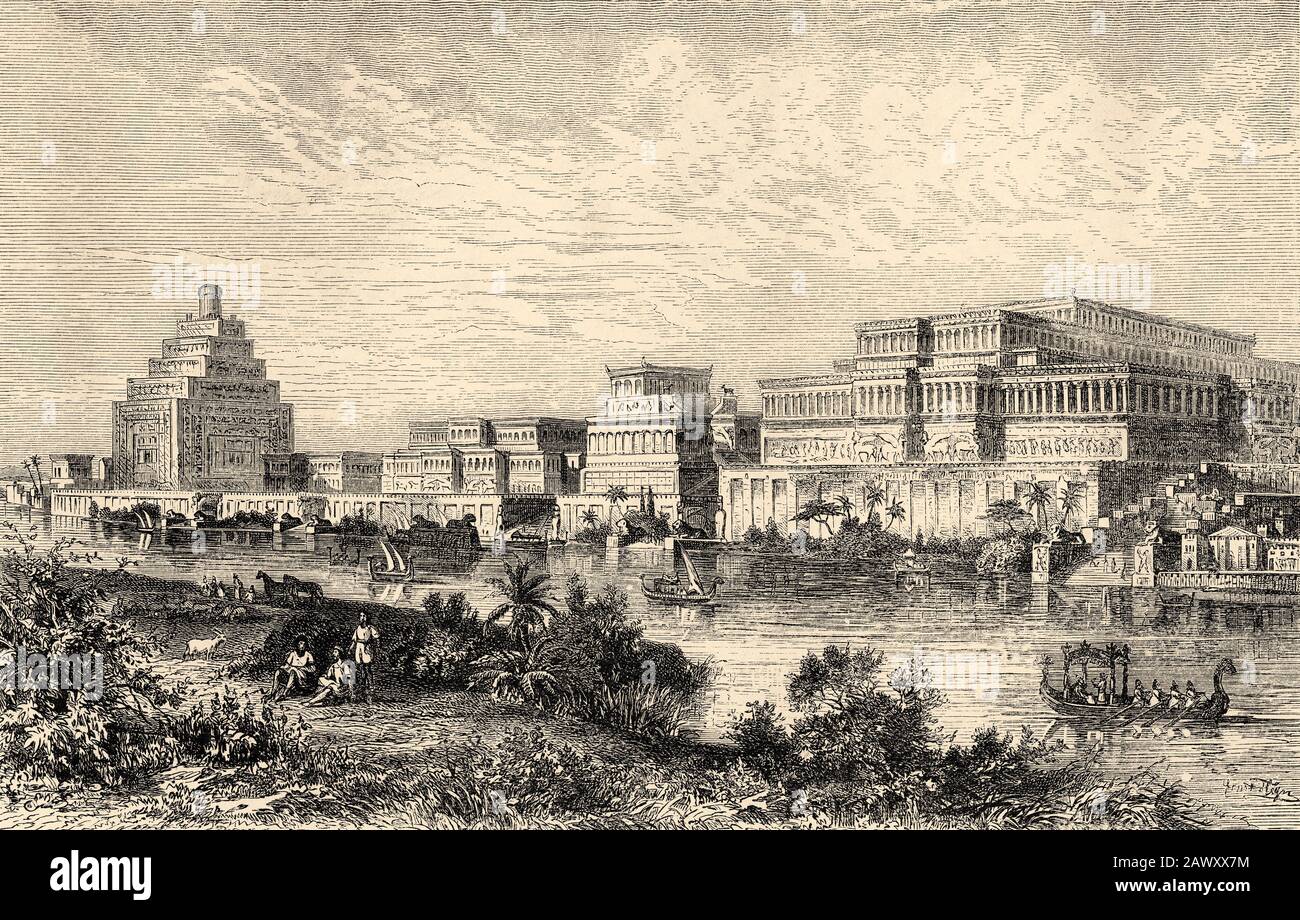 Palace of the kings of Assyria to the city of Nineveh. Assyrian Empire. Old engraving illustration from the book Universal history by Oscar Jager 1890 Stock Photohttps://www.alamy.com/image-license-details/?v=1https://www.alamy.com/palace-of-the-kings-of-assyria-to-the-city-of-nineveh-assyrian-empire-old-engraving-illustration-from-the-book-universal-history-by-oscar-jager-1890-image342954744.html
Palace of the kings of Assyria to the city of Nineveh. Assyrian Empire. Old engraving illustration from the book Universal history by Oscar Jager 1890 Stock Photohttps://www.alamy.com/image-license-details/?v=1https://www.alamy.com/palace-of-the-kings-of-assyria-to-the-city-of-nineveh-assyrian-empire-old-engraving-illustration-from-the-book-universal-history-by-oscar-jager-1890-image342954744.htmlRM2AWXX7M–Palace of the kings of Assyria to the city of Nineveh. Assyrian Empire. Old engraving illustration from the book Universal history by Oscar Jager 1890
 Excavation of Assur Stock Photohttps://www.alamy.com/image-license-details/?v=1https://www.alamy.com/stock-photo-excavation-of-assur-48335742.html
Excavation of Assur Stock Photohttps://www.alamy.com/image-license-details/?v=1https://www.alamy.com/stock-photo-excavation-of-assur-48335742.htmlRMCPHTME–Excavation of Assur
 Stela of the Assyrian King Shamshi-Adad V from Nimrud, Temple of Nabu, at the British Museum, London, UK Stock Photohttps://www.alamy.com/image-license-details/?v=1https://www.alamy.com/stela-of-the-assyrian-king-shamshi-adad-v-from-nimrud-temple-of-nabu-at-the-british-museum-london-uk-image447354765.html
Stela of the Assyrian King Shamshi-Adad V from Nimrud, Temple of Nabu, at the British Museum, London, UK Stock Photohttps://www.alamy.com/image-license-details/?v=1https://www.alamy.com/stela-of-the-assyrian-king-shamshi-adad-v-from-nimrud-temple-of-nabu-at-the-british-museum-london-uk-image447354765.htmlRM2GYPNFW–Stela of the Assyrian King Shamshi-Adad V from Nimrud, Temple of Nabu, at the British Museum, London, UK
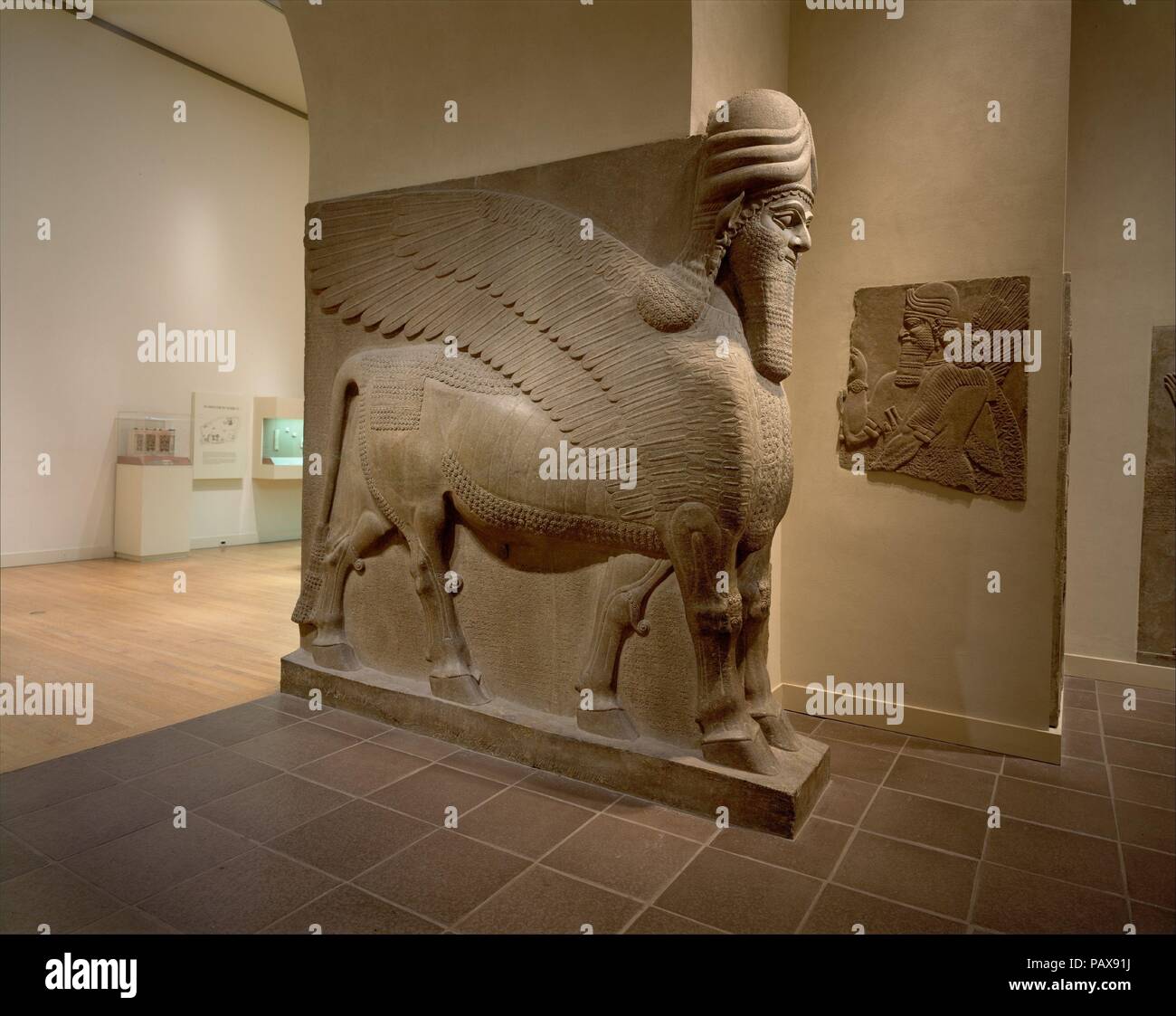 Human-headed winged bull (lamassu). Culture: Assyrian. Dimensions: H. 123 1/2 x W. 26 1/2 x D. 122 in., 15999.8 lb. (313.7 x 67.3 x 309.9 cm, 7257.4 kg). Date: ca. 883-859 B.C.. From the ninth to the seventh century B.C., the kings of Assyria ruled over a vast empire centered in northern Iraq. The great Assyrian king Ashurnasirpal II (r. 883-859 B.C.), undertook a vast building program at Nimrud, ancient Kalhu. Until it became the capital city under Ashurnasirpal, Nimrud had been no more than a provincial town. The new capital occupied an area of about nine hundred acres, around which Ashurn Stock Photohttps://www.alamy.com/image-license-details/?v=1https://www.alamy.com/human-headed-winged-bull-lamassu-culture-assyrian-dimensions-h-123-12-x-w-26-12-x-d-122-in-159998-lb-3137-x-673-x-3099-cm-72574-kg-date-ca-883-859-bc-from-the-ninth-to-the-seventh-century-bc-the-kings-of-assyria-ruled-over-a-vast-empire-centered-in-northern-iraq-the-great-assyrian-king-ashurnasirpal-ii-r-883-859-bc-undertook-a-vast-building-program-at-nimrud-ancient-kalhu-until-it-became-the-capital-city-under-ashurnasirpal-nimrud-had-been-no-more-than-a-provincial-town-the-new-capital-occupied-an-area-of-about-nine-hundred-acres-around-which-ashurn-image213248830.html
Human-headed winged bull (lamassu). Culture: Assyrian. Dimensions: H. 123 1/2 x W. 26 1/2 x D. 122 in., 15999.8 lb. (313.7 x 67.3 x 309.9 cm, 7257.4 kg). Date: ca. 883-859 B.C.. From the ninth to the seventh century B.C., the kings of Assyria ruled over a vast empire centered in northern Iraq. The great Assyrian king Ashurnasirpal II (r. 883-859 B.C.), undertook a vast building program at Nimrud, ancient Kalhu. Until it became the capital city under Ashurnasirpal, Nimrud had been no more than a provincial town. The new capital occupied an area of about nine hundred acres, around which Ashurn Stock Photohttps://www.alamy.com/image-license-details/?v=1https://www.alamy.com/human-headed-winged-bull-lamassu-culture-assyrian-dimensions-h-123-12-x-w-26-12-x-d-122-in-159998-lb-3137-x-673-x-3099-cm-72574-kg-date-ca-883-859-bc-from-the-ninth-to-the-seventh-century-bc-the-kings-of-assyria-ruled-over-a-vast-empire-centered-in-northern-iraq-the-great-assyrian-king-ashurnasirpal-ii-r-883-859-bc-undertook-a-vast-building-program-at-nimrud-ancient-kalhu-until-it-became-the-capital-city-under-ashurnasirpal-nimrud-had-been-no-more-than-a-provincial-town-the-new-capital-occupied-an-area-of-about-nine-hundred-acres-around-which-ashurn-image213248830.htmlRMPAX91J–Human-headed winged bull (lamassu). Culture: Assyrian. Dimensions: H. 123 1/2 x W. 26 1/2 x D. 122 in., 15999.8 lb. (313.7 x 67.3 x 309.9 cm, 7257.4 kg). Date: ca. 883-859 B.C.. From the ninth to the seventh century B.C., the kings of Assyria ruled over a vast empire centered in northern Iraq. The great Assyrian king Ashurnasirpal II (r. 883-859 B.C.), undertook a vast building program at Nimrud, ancient Kalhu. Until it became the capital city under Ashurnasirpal, Nimrud had been no more than a provincial town. The new capital occupied an area of about nine hundred acres, around which Ashurn
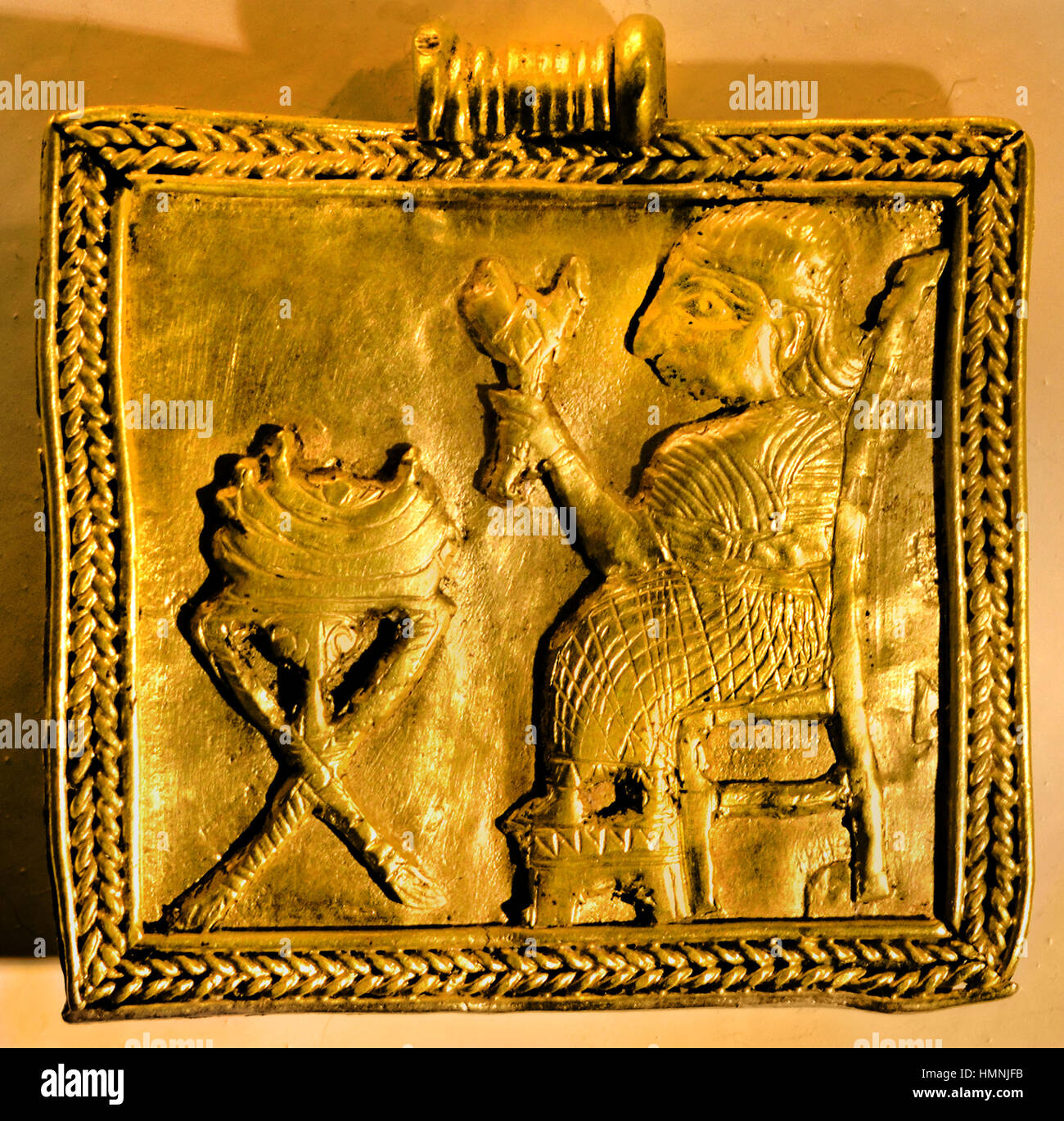 Nineveh ancient Assyrian city, of Upper Mesopotamia, (Mosul Iraq) capital Neo Assyrian Empire, (Assyria 2500 BC–612 BC) Stock Photohttps://www.alamy.com/image-license-details/?v=1https://www.alamy.com/stock-photo-nineveh-ancient-assyrian-city-of-upper-mesopotamia-mosul-iraq-capital-133241231.html
Nineveh ancient Assyrian city, of Upper Mesopotamia, (Mosul Iraq) capital Neo Assyrian Empire, (Assyria 2500 BC–612 BC) Stock Photohttps://www.alamy.com/image-license-details/?v=1https://www.alamy.com/stock-photo-nineveh-ancient-assyrian-city-of-upper-mesopotamia-mosul-iraq-capital-133241231.htmlRMHMNJFB–Nineveh ancient Assyrian city, of Upper Mesopotamia, (Mosul Iraq) capital Neo Assyrian Empire, (Assyria 2500 BC–612 BC)
 Calah. (Nimrud) 20 miles S. of Mosul, capital of Assyria in 9th and 8th cents. B.C. 1932, Iraq, Calah (Extinct city reimagined Stock Photohttps://www.alamy.com/image-license-details/?v=1https://www.alamy.com/calah-nimrud-20-miles-s-of-mosul-capital-of-assyria-in-9th-and-8th-cents-bc-1932-iraq-calah-extinct-city-reimagined-image230358561.html
Calah. (Nimrud) 20 miles S. of Mosul, capital of Assyria in 9th and 8th cents. B.C. 1932, Iraq, Calah (Extinct city reimagined Stock Photohttps://www.alamy.com/image-license-details/?v=1https://www.alamy.com/calah-nimrud-20-miles-s-of-mosul-capital-of-assyria-in-9th-and-8th-cents-bc-1932-iraq-calah-extinct-city-reimagined-image230358561.htmlRFRANMKD–Calah. (Nimrud) 20 miles S. of Mosul, capital of Assyria in 9th and 8th cents. B.C. 1932, Iraq, Calah (Extinct city reimagined
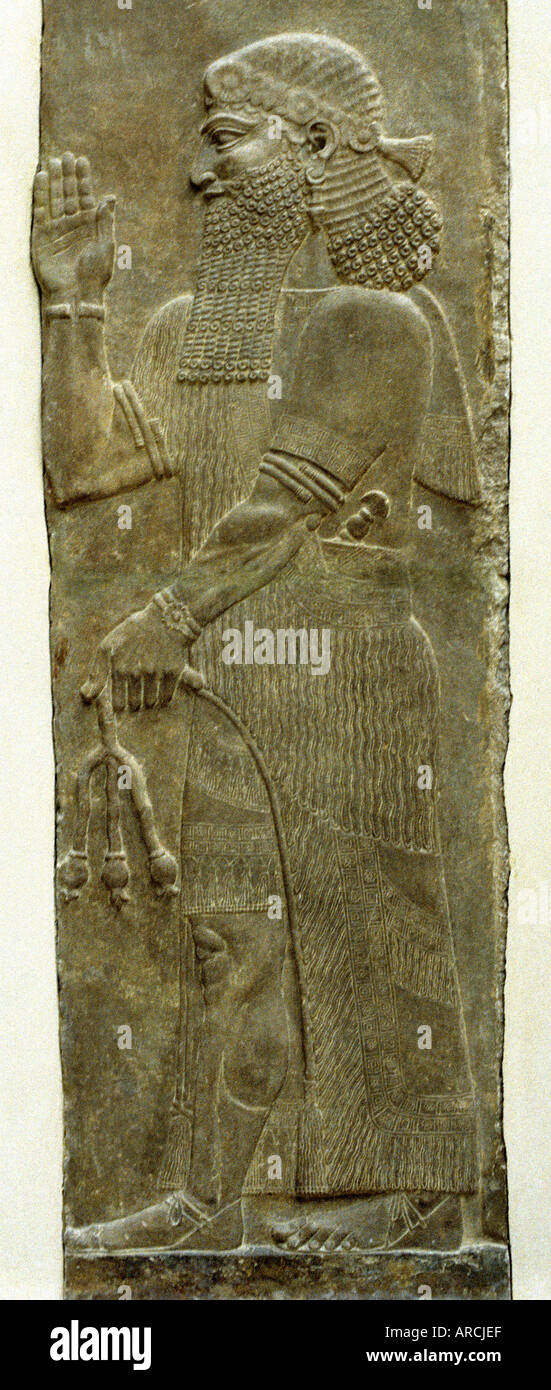 Dur Sharrukin Khorsabad was the Assyrian capital in the time of Sargon II of Assyria Iraq Stock Photohttps://www.alamy.com/image-license-details/?v=1https://www.alamy.com/dur-sharrukin-khorsabad-was-the-assyrian-capital-in-the-time-of-sargon-image5227246.html
Dur Sharrukin Khorsabad was the Assyrian capital in the time of Sargon II of Assyria Iraq Stock Photohttps://www.alamy.com/image-license-details/?v=1https://www.alamy.com/dur-sharrukin-khorsabad-was-the-assyrian-capital-in-the-time-of-sargon-image5227246.htmlRMARCJEF–Dur Sharrukin Khorsabad was the Assyrian capital in the time of Sargon II of Assyria Iraq
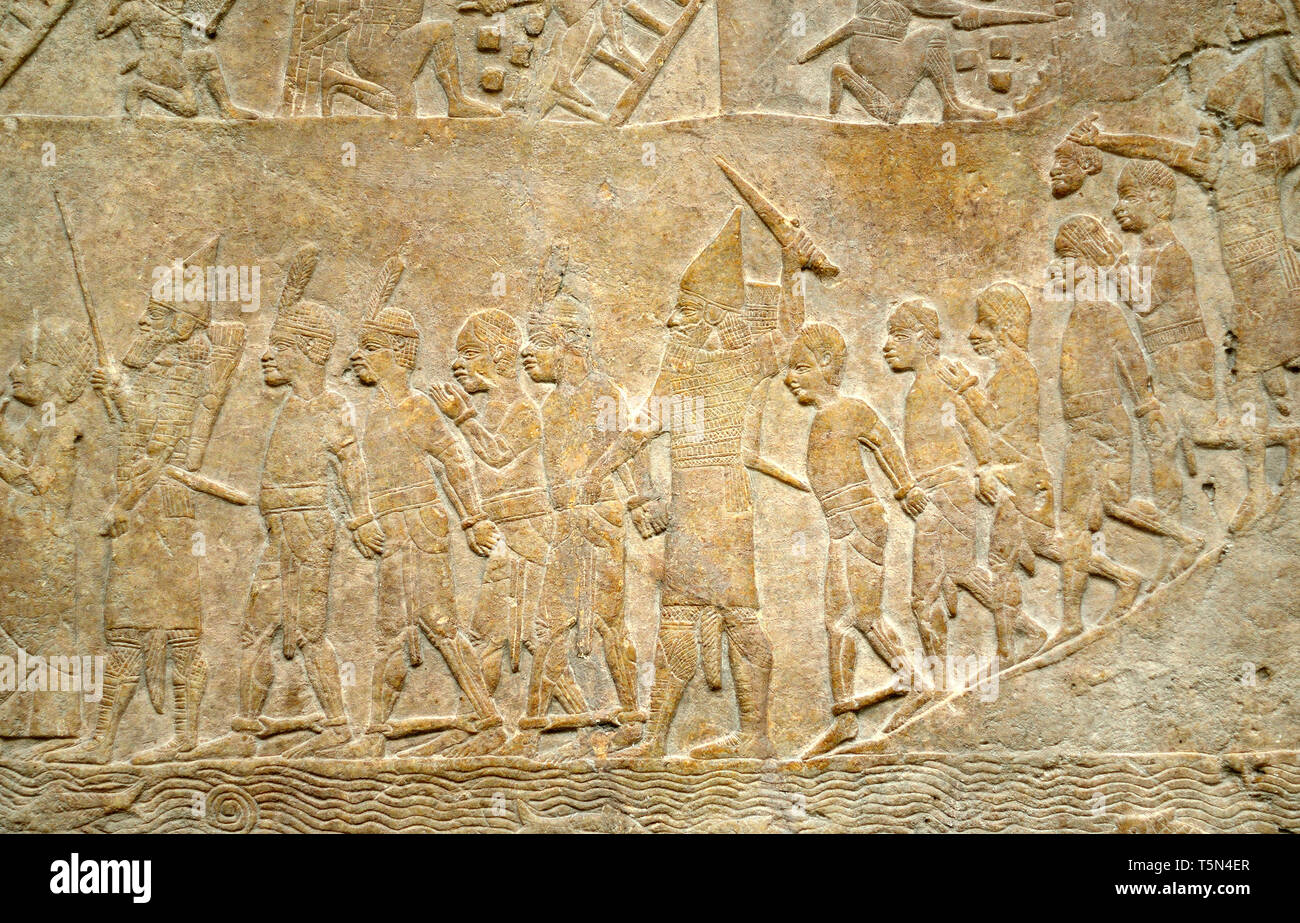 British Museum, Bloomsbury, London, England, UK. Gypsum panel showing the Assyrian army attacking the Egyptian city of Memphis, the final victory of K Stock Photohttps://www.alamy.com/image-license-details/?v=1https://www.alamy.com/british-museum-bloomsbury-london-england-uk-gypsum-panel-showing-the-assyrian-army-attacking-the-egyptian-city-of-memphis-the-final-victory-of-k-image244482975.html
British Museum, Bloomsbury, London, England, UK. Gypsum panel showing the Assyrian army attacking the Egyptian city of Memphis, the final victory of K Stock Photohttps://www.alamy.com/image-license-details/?v=1https://www.alamy.com/british-museum-bloomsbury-london-england-uk-gypsum-panel-showing-the-assyrian-army-attacking-the-egyptian-city-of-memphis-the-final-victory-of-k-image244482975.htmlRMT5N4ER–British Museum, Bloomsbury, London, England, UK. Gypsum panel showing the Assyrian army attacking the Egyptian city of Memphis, the final victory of K
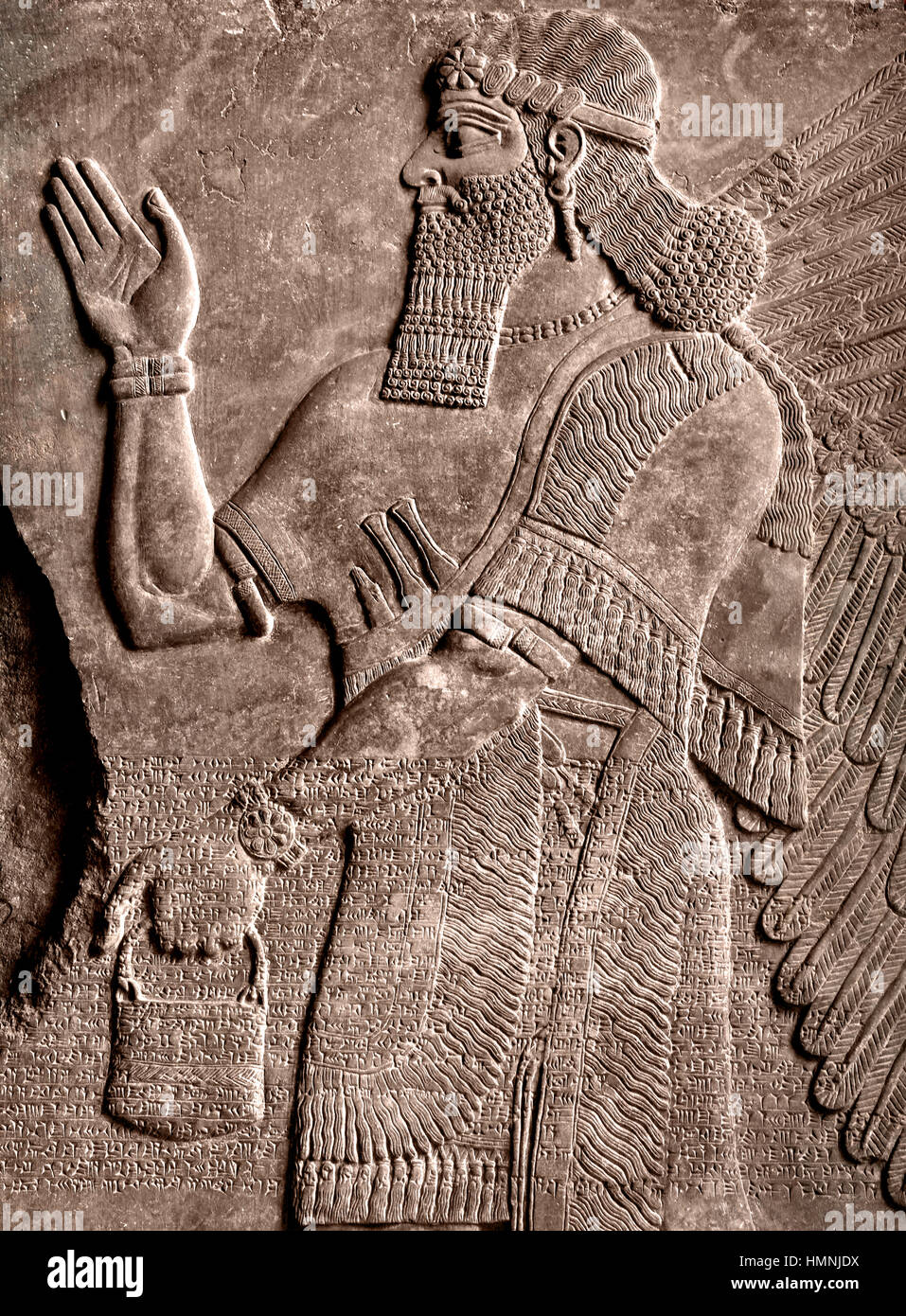 Nineveh ancient Assyrian city, of Upper Mesopotamia, (Mosul Iraq) capital Neo Assyrian Empire, (Assyria 2500 BC–612 BC) Stock Photohttps://www.alamy.com/image-license-details/?v=1https://www.alamy.com/stock-photo-nineveh-ancient-assyrian-city-of-upper-mesopotamia-mosul-iraq-capital-133241190.html
Nineveh ancient Assyrian city, of Upper Mesopotamia, (Mosul Iraq) capital Neo Assyrian Empire, (Assyria 2500 BC–612 BC) Stock Photohttps://www.alamy.com/image-license-details/?v=1https://www.alamy.com/stock-photo-nineveh-ancient-assyrian-city-of-upper-mesopotamia-mosul-iraq-capital-133241190.htmlRMHMNJDX–Nineveh ancient Assyrian city, of Upper Mesopotamia, (Mosul Iraq) capital Neo Assyrian Empire, (Assyria 2500 BC–612 BC)
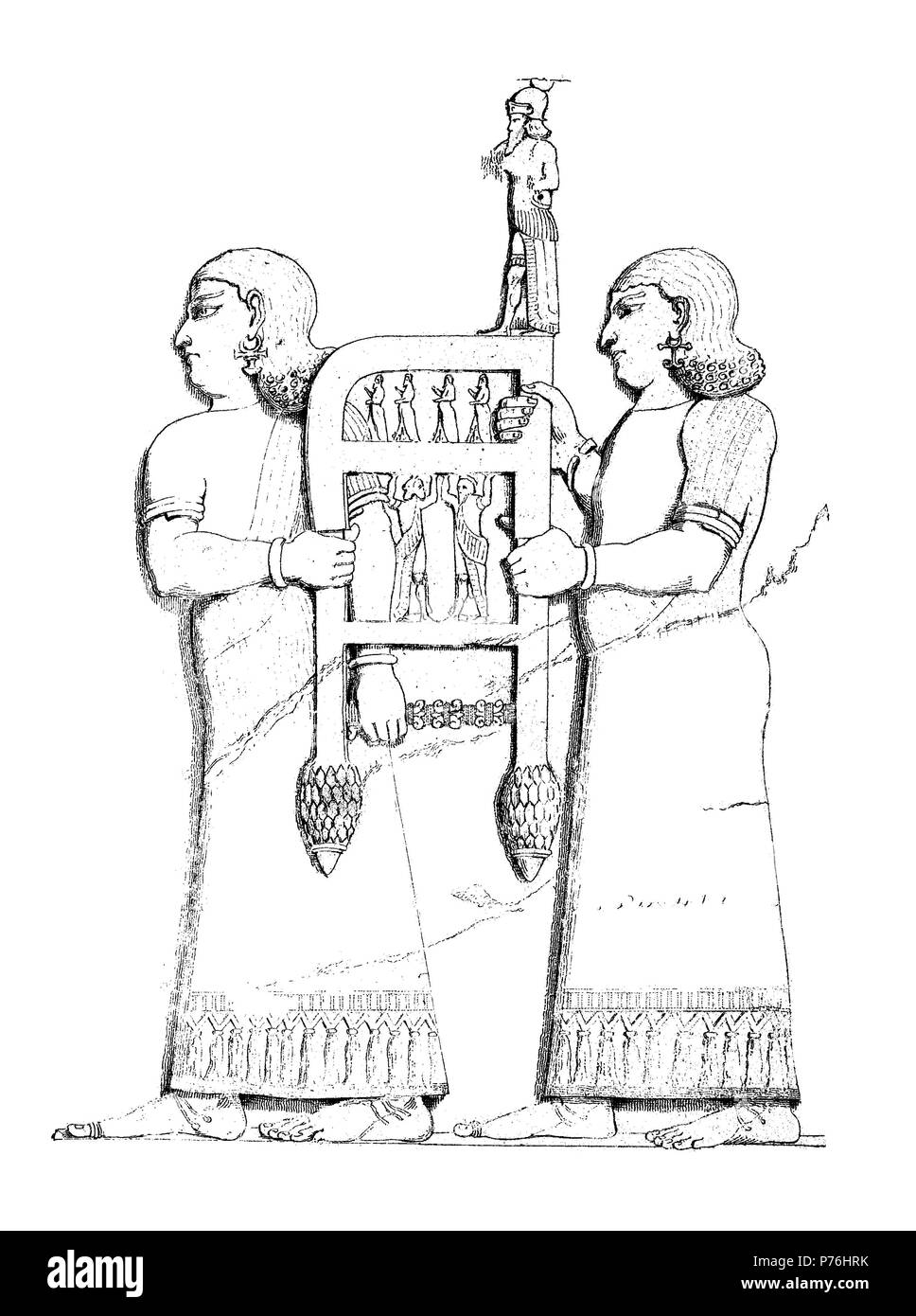 Eunuch relief on the portal of Khorsabad, the Assyrian capital in the time of Sargon II of Assyria, Mesopotamia, Iraq, digital improved reproduction of an original print from the year 1881 Stock Photohttps://www.alamy.com/image-license-details/?v=1https://www.alamy.com/eunuch-relief-on-the-portal-of-khorsabad-the-assyrian-capital-in-the-time-of-sargon-ii-of-assyria-mesopotamia-iraq-digital-improved-reproduction-of-an-original-print-from-the-year-1881-image210972711.html
Eunuch relief on the portal of Khorsabad, the Assyrian capital in the time of Sargon II of Assyria, Mesopotamia, Iraq, digital improved reproduction of an original print from the year 1881 Stock Photohttps://www.alamy.com/image-license-details/?v=1https://www.alamy.com/eunuch-relief-on-the-portal-of-khorsabad-the-assyrian-capital-in-the-time-of-sargon-ii-of-assyria-mesopotamia-iraq-digital-improved-reproduction-of-an-original-print-from-the-year-1881-image210972711.htmlRFP76HRK–Eunuch relief on the portal of Khorsabad, the Assyrian capital in the time of Sargon II of Assyria, Mesopotamia, Iraq, digital improved reproduction of an original print from the year 1881
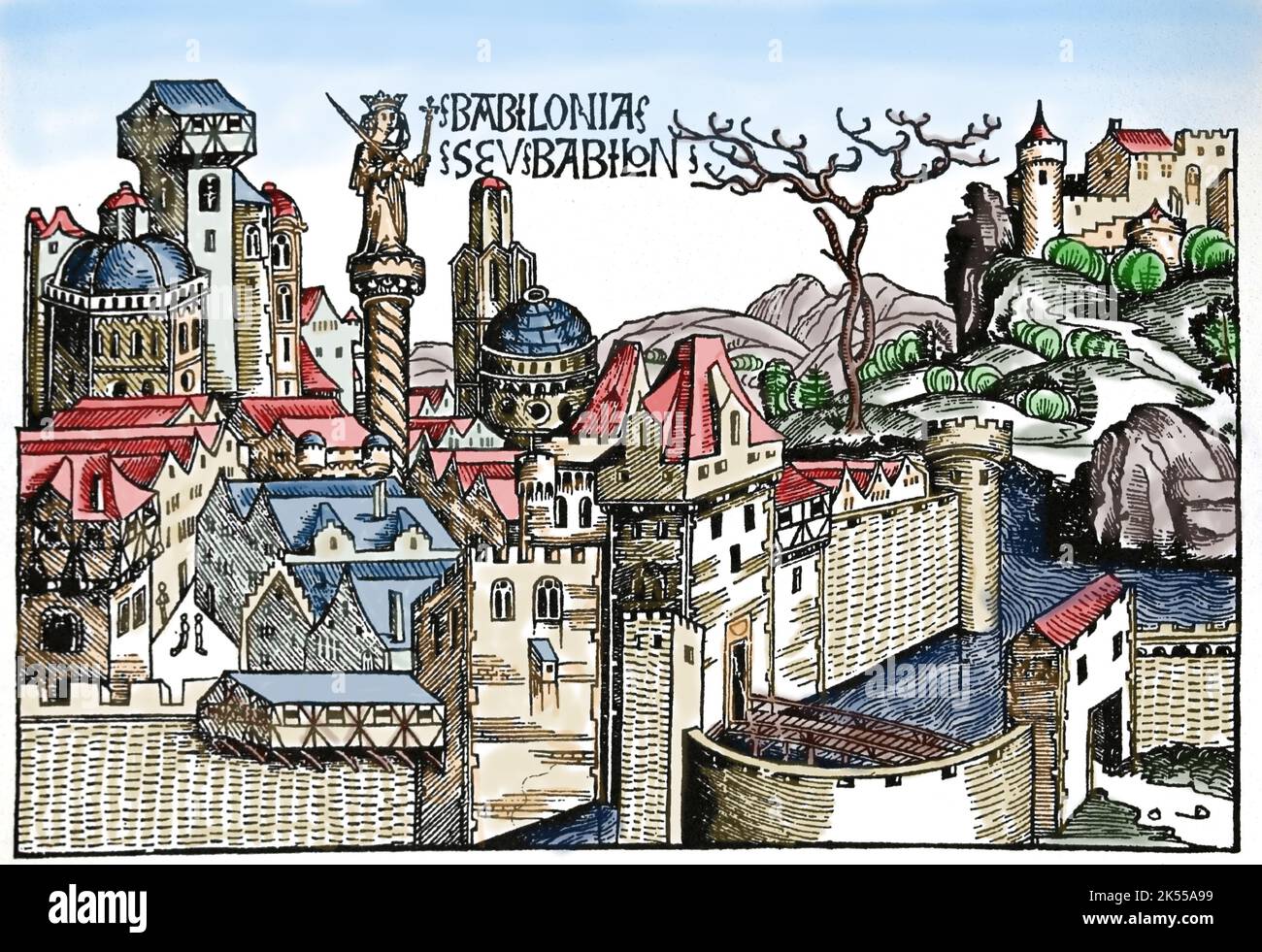 Mesopotamia. Babylon city. The Nuremberg Chronicles. 15th century. Stock Photohttps://www.alamy.com/image-license-details/?v=1https://www.alamy.com/mesopotamia-babylon-city-the-nuremberg-chronicles-15th-century-image485081445.html
Mesopotamia. Babylon city. The Nuremberg Chronicles. 15th century. Stock Photohttps://www.alamy.com/image-license-details/?v=1https://www.alamy.com/mesopotamia-babylon-city-the-nuremberg-chronicles-15th-century-image485081445.htmlRM2K55A99–Mesopotamia. Babylon city. The Nuremberg Chronicles. 15th century.
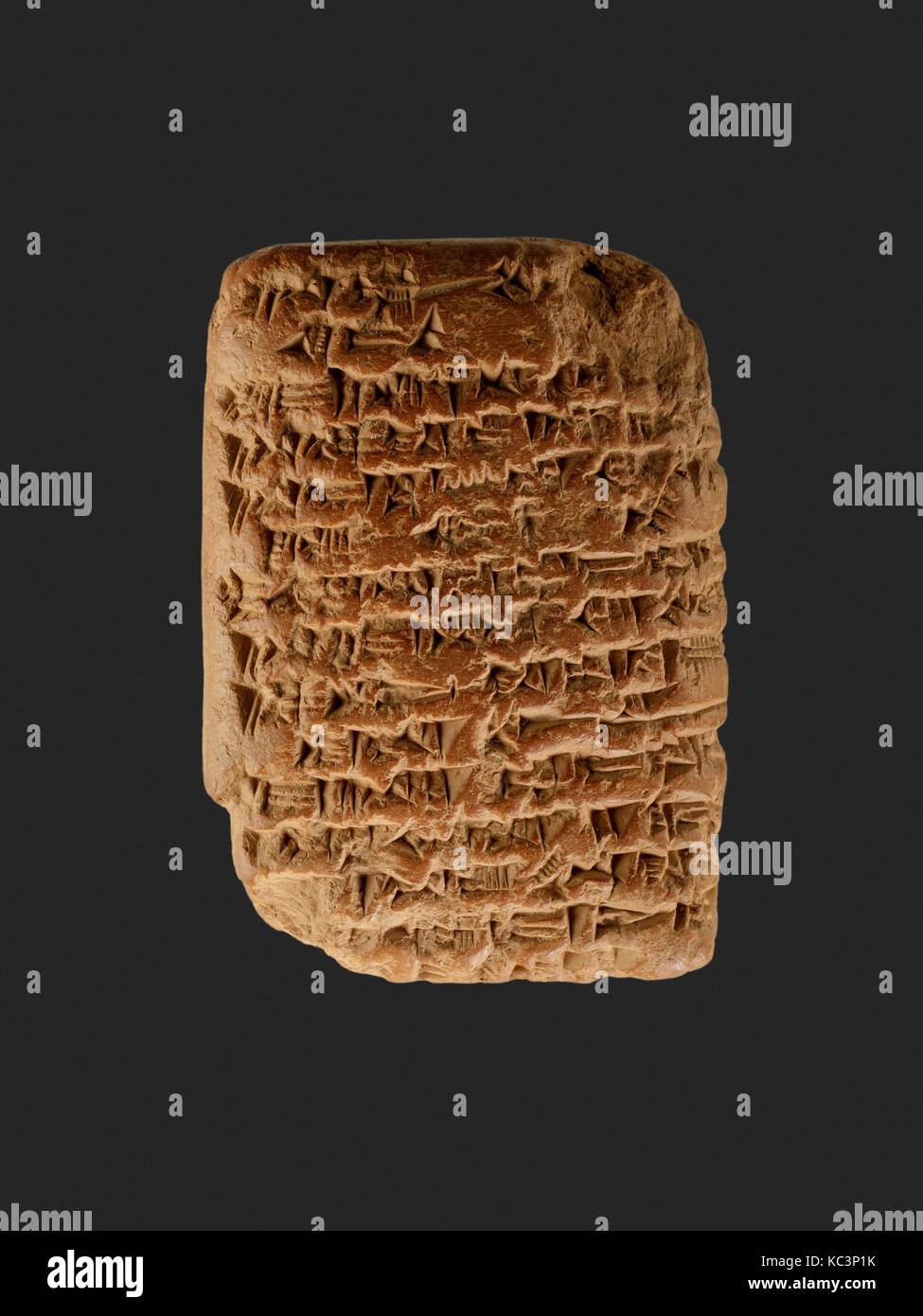 Amarna letter: Royal Letter from Ashur-uballit, the king of Assyria, to the king of Egypt, ca. 1353–1336 B.C Stock Photohttps://www.alamy.com/image-license-details/?v=1https://www.alamy.com/stock-image-amarna-letter-royal-letter-from-ashur-uballit-the-king-of-assyria-162352335.html
Amarna letter: Royal Letter from Ashur-uballit, the king of Assyria, to the king of Egypt, ca. 1353–1336 B.C Stock Photohttps://www.alamy.com/image-license-details/?v=1https://www.alamy.com/stock-image-amarna-letter-royal-letter-from-ashur-uballit-the-king-of-assyria-162352335.htmlRMKC3P1K–Amarna letter: Royal Letter from Ashur-uballit, the king of Assyria, to the king of Egypt, ca. 1353–1336 B.C
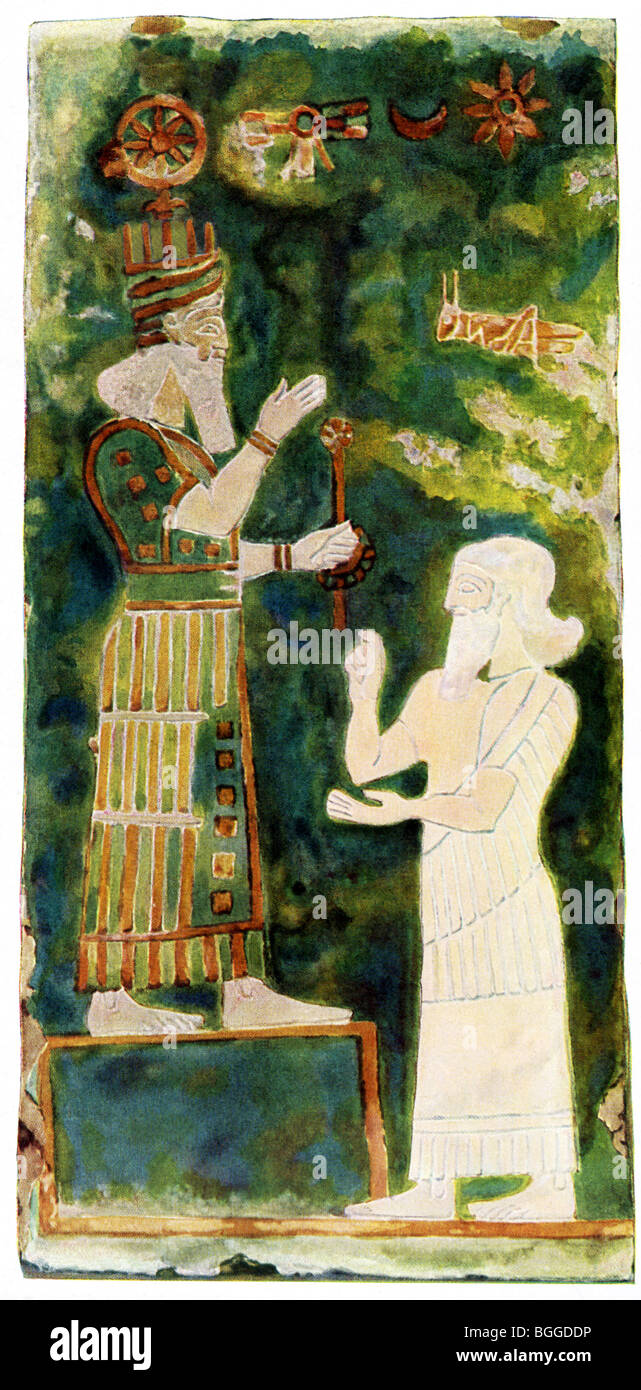 Sargon (left) pays homage to the Assyrian god Asur. This wall painting decorated brick tile in a house in Assur. Stock Photohttps://www.alamy.com/image-license-details/?v=1https://www.alamy.com/stock-photo-sargon-left-pays-homage-to-the-assyrian-god-asur-this-wall-painting-27406674.html
Sargon (left) pays homage to the Assyrian god Asur. This wall painting decorated brick tile in a house in Assur. Stock Photohttps://www.alamy.com/image-license-details/?v=1https://www.alamy.com/stock-photo-sargon-left-pays-homage-to-the-assyrian-god-asur-this-wall-painting-27406674.htmlRFBGGDDP–Sargon (left) pays homage to the Assyrian god Asur. This wall painting decorated brick tile in a house in Assur.
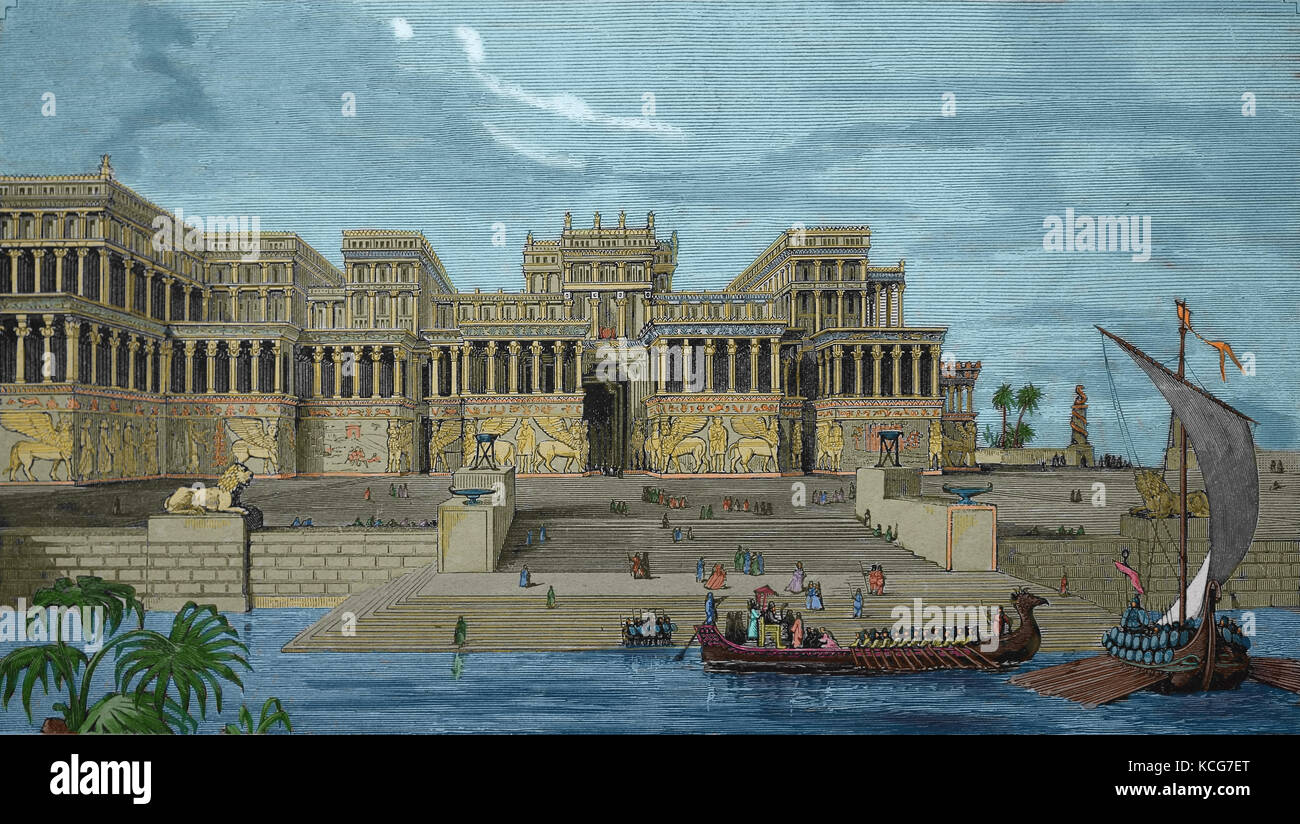 Niniveh. Ancient Assyrian city. Upper Mesopotamia. Engraving, 1890. Stock Photohttps://www.alamy.com/image-license-details/?v=1https://www.alamy.com/stock-image-niniveh-ancient-assyrian-city-upper-mesopotamia-engraving-1890-162626320.html
Niniveh. Ancient Assyrian city. Upper Mesopotamia. Engraving, 1890. Stock Photohttps://www.alamy.com/image-license-details/?v=1https://www.alamy.com/stock-image-niniveh-ancient-assyrian-city-upper-mesopotamia-engraving-1890-162626320.htmlRMKCG7ET–Niniveh. Ancient Assyrian city. Upper Mesopotamia. Engraving, 1890.
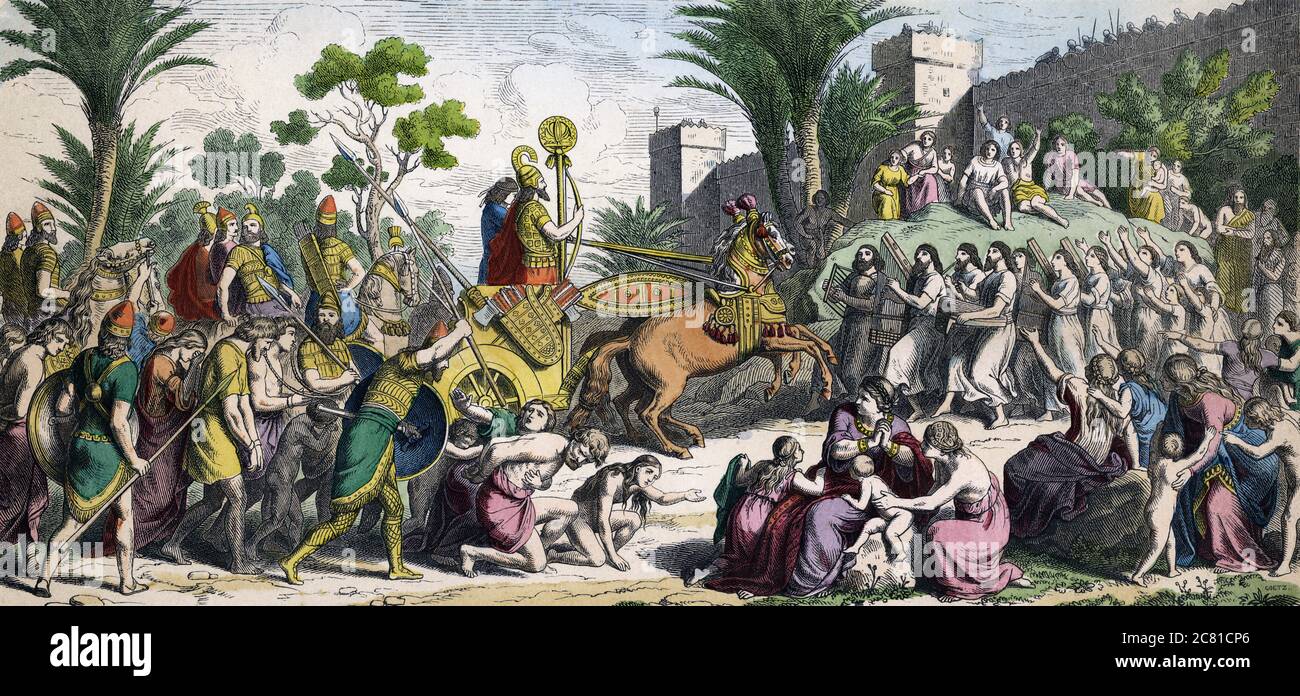 A victorious general is received by ecstatic Assyrians as he approaches the gates of the capital Nineveh. After a 19th century engraving by Bernhard Goetz from a work by Heinrich Leutemann. Stock Photohttps://www.alamy.com/image-license-details/?v=1https://www.alamy.com/a-victorious-general-is-received-by-ecstatic-assyrians-as-he-approaches-the-gates-of-the-capital-nineveh-after-a-19th-century-engraving-by-bernhard-goetz-from-a-work-by-heinrich-leutemann-image366366958.html
A victorious general is received by ecstatic Assyrians as he approaches the gates of the capital Nineveh. After a 19th century engraving by Bernhard Goetz from a work by Heinrich Leutemann. Stock Photohttps://www.alamy.com/image-license-details/?v=1https://www.alamy.com/a-victorious-general-is-received-by-ecstatic-assyrians-as-he-approaches-the-gates-of-the-capital-nineveh-after-a-19th-century-engraving-by-bernhard-goetz-from-a-work-by-heinrich-leutemann-image366366958.htmlRM2C81CP6–A victorious general is received by ecstatic Assyrians as he approaches the gates of the capital Nineveh. After a 19th century engraving by Bernhard Goetz from a work by Heinrich Leutemann.
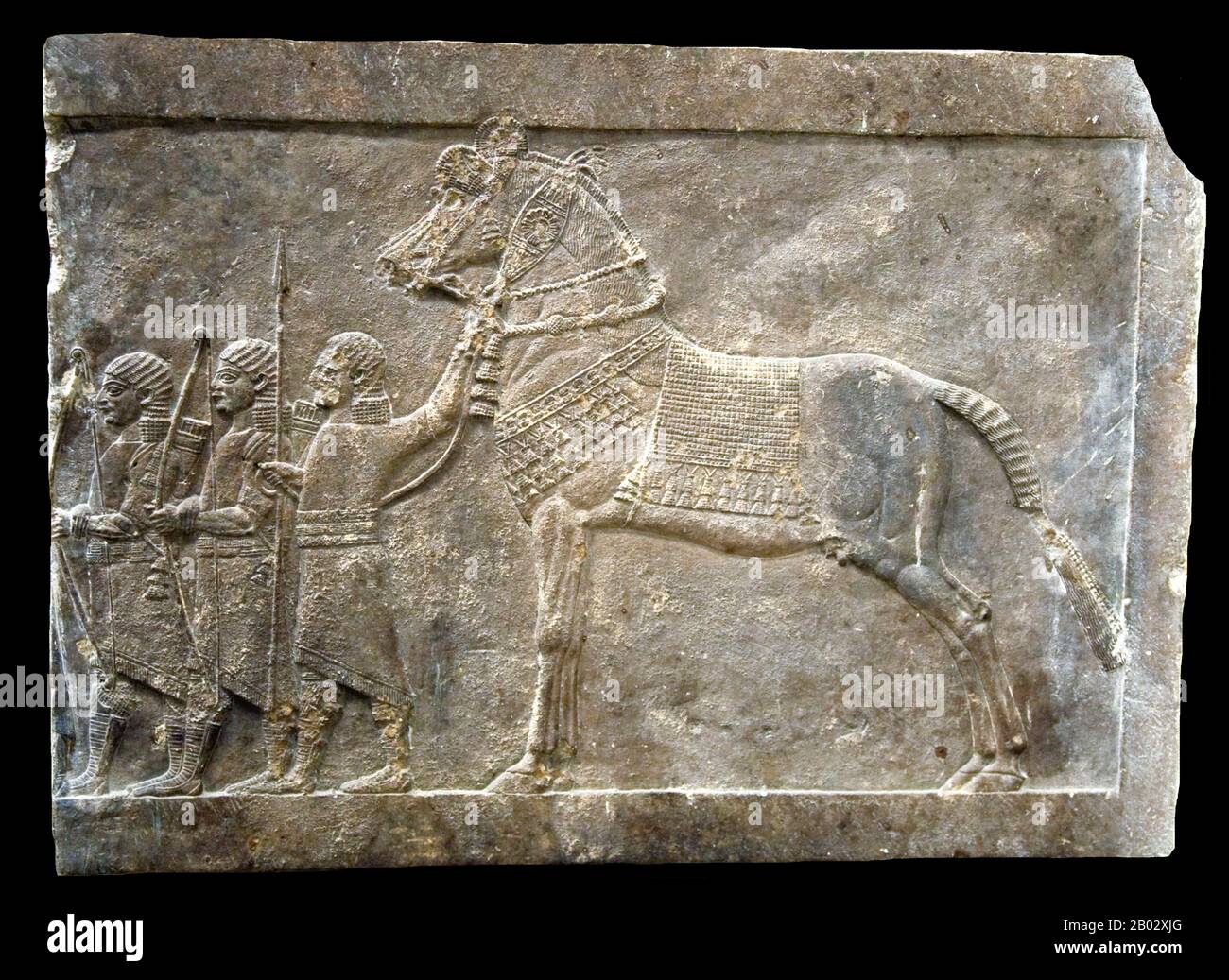 Nineveh (Akkadian: Ninua) is an ancient Mesopotamian city on the eastern bank of the Tigris River, and capital of the Neo-Assyrian Empire. It was the largest city in the world for some fifty years until, after a bitter period of civil war in Assyria itself, it was sacked by an unusual coalition of former subject peoples, the Babylonians, Medes, Persians, Chaldeans, Scythians and Cimmerians in 612 BCE. Its ruins are across the river from the modern-day major city of Mosul, in the Ninawa Governorate of Iraq. In early 2015 the jihadist group ISIL (Islamic State in Iraq and the Levant) announced Stock Photohttps://www.alamy.com/image-license-details/?v=1https://www.alamy.com/nineveh-akkadian-ninua-is-an-ancient-mesopotamian-city-on-the-eastern-bank-of-the-tigris-river-and-capital-of-the-neo-assyrian-empire-it-was-the-largest-city-in-the-world-for-some-fifty-years-until-after-a-bitter-period-of-civil-war-in-assyria-itself-it-was-sacked-by-an-unusual-coalition-of-former-subject-peoples-the-babylonians-medes-persians-chaldeans-scythians-and-cimmerians-in-612-bce-its-ruins-are-across-the-river-from-the-modern-day-major-city-of-mosul-in-the-ninawa-governorate-of-iraq-in-early-2015-the-jihadist-group-isil-islamic-state-in-iraq-and-the-levant-announced-image344272168.html
Nineveh (Akkadian: Ninua) is an ancient Mesopotamian city on the eastern bank of the Tigris River, and capital of the Neo-Assyrian Empire. It was the largest city in the world for some fifty years until, after a bitter period of civil war in Assyria itself, it was sacked by an unusual coalition of former subject peoples, the Babylonians, Medes, Persians, Chaldeans, Scythians and Cimmerians in 612 BCE. Its ruins are across the river from the modern-day major city of Mosul, in the Ninawa Governorate of Iraq. In early 2015 the jihadist group ISIL (Islamic State in Iraq and the Levant) announced Stock Photohttps://www.alamy.com/image-license-details/?v=1https://www.alamy.com/nineveh-akkadian-ninua-is-an-ancient-mesopotamian-city-on-the-eastern-bank-of-the-tigris-river-and-capital-of-the-neo-assyrian-empire-it-was-the-largest-city-in-the-world-for-some-fifty-years-until-after-a-bitter-period-of-civil-war-in-assyria-itself-it-was-sacked-by-an-unusual-coalition-of-former-subject-peoples-the-babylonians-medes-persians-chaldeans-scythians-and-cimmerians-in-612-bce-its-ruins-are-across-the-river-from-the-modern-day-major-city-of-mosul-in-the-ninawa-governorate-of-iraq-in-early-2015-the-jihadist-group-isil-islamic-state-in-iraq-and-the-levant-announced-image344272168.htmlRM2B02XJG–Nineveh (Akkadian: Ninua) is an ancient Mesopotamian city on the eastern bank of the Tigris River, and capital of the Neo-Assyrian Empire. It was the largest city in the world for some fifty years until, after a bitter period of civil war in Assyria itself, it was sacked by an unusual coalition of former subject peoples, the Babylonians, Medes, Persians, Chaldeans, Scythians and Cimmerians in 612 BCE. Its ruins are across the river from the modern-day major city of Mosul, in the Ninawa Governorate of Iraq. In early 2015 the jihadist group ISIL (Islamic State in Iraq and the Levant) announced
 ruins of the ancient fortress of Erebuni, the kingdom of Urartu in modern Yerevan, Armenia. Traveling to popular places, heritage of human history, id Stock Photohttps://www.alamy.com/image-license-details/?v=1https://www.alamy.com/ruins-of-the-ancient-fortress-of-erebuni-the-kingdom-of-urartu-in-modern-yerevan-armenia-traveling-to-popular-places-heritage-of-human-history-id-image556588974.html
ruins of the ancient fortress of Erebuni, the kingdom of Urartu in modern Yerevan, Armenia. Traveling to popular places, heritage of human history, id Stock Photohttps://www.alamy.com/image-license-details/?v=1https://www.alamy.com/ruins-of-the-ancient-fortress-of-erebuni-the-kingdom-of-urartu-in-modern-yerevan-armenia-traveling-to-popular-places-heritage-of-human-history-id-image556588974.htmlRF2R9EPWJ–ruins of the ancient fortress of Erebuni, the kingdom of Urartu in modern Yerevan, Armenia. Traveling to popular places, heritage of human history, id
 Nineveh (Akkadian: Ninua) is an ancient Mesopotamian city on the eastern bank of the Tigris River, and capital of the Neo-Assyrian Empire. It was the largest city in the world for some fifty years until, after a bitter period of civil war in Assyria itself, it was sacked by an unusual coalition of former subject peoples, the Babylonians, Medes, Persians, Chaldeans, Scythians and Cimmerians in 612 BCE. Its ruins are across the river from the modern-day major city of Mosul, in the Ninawa Governorate of Iraq. In early 2015 the jihadist group ISIL (Islamic State in Iraq and the Levant) announced Stock Photohttps://www.alamy.com/image-license-details/?v=1https://www.alamy.com/nineveh-akkadian-ninua-is-an-ancient-mesopotamian-city-on-the-eastern-bank-of-the-tigris-river-and-capital-of-the-neo-assyrian-empire-it-was-the-largest-city-in-the-world-for-some-fifty-years-until-after-a-bitter-period-of-civil-war-in-assyria-itself-it-was-sacked-by-an-unusual-coalition-of-former-subject-peoples-the-babylonians-medes-persians-chaldeans-scythians-and-cimmerians-in-612-bce-its-ruins-are-across-the-river-from-the-modern-day-major-city-of-mosul-in-the-ninawa-governorate-of-iraq-in-early-2015-the-jihadist-group-isil-islamic-state-in-iraq-and-the-levant-announced-image344272165.html
Nineveh (Akkadian: Ninua) is an ancient Mesopotamian city on the eastern bank of the Tigris River, and capital of the Neo-Assyrian Empire. It was the largest city in the world for some fifty years until, after a bitter period of civil war in Assyria itself, it was sacked by an unusual coalition of former subject peoples, the Babylonians, Medes, Persians, Chaldeans, Scythians and Cimmerians in 612 BCE. Its ruins are across the river from the modern-day major city of Mosul, in the Ninawa Governorate of Iraq. In early 2015 the jihadist group ISIL (Islamic State in Iraq and the Levant) announced Stock Photohttps://www.alamy.com/image-license-details/?v=1https://www.alamy.com/nineveh-akkadian-ninua-is-an-ancient-mesopotamian-city-on-the-eastern-bank-of-the-tigris-river-and-capital-of-the-neo-assyrian-empire-it-was-the-largest-city-in-the-world-for-some-fifty-years-until-after-a-bitter-period-of-civil-war-in-assyria-itself-it-was-sacked-by-an-unusual-coalition-of-former-subject-peoples-the-babylonians-medes-persians-chaldeans-scythians-and-cimmerians-in-612-bce-its-ruins-are-across-the-river-from-the-modern-day-major-city-of-mosul-in-the-ninawa-governorate-of-iraq-in-early-2015-the-jihadist-group-isil-islamic-state-in-iraq-and-the-levant-announced-image344272165.htmlRM2B02XJD–Nineveh (Akkadian: Ninua) is an ancient Mesopotamian city on the eastern bank of the Tigris River, and capital of the Neo-Assyrian Empire. It was the largest city in the world for some fifty years until, after a bitter period of civil war in Assyria itself, it was sacked by an unusual coalition of former subject peoples, the Babylonians, Medes, Persians, Chaldeans, Scythians and Cimmerians in 612 BCE. Its ruins are across the river from the modern-day major city of Mosul, in the Ninawa Governorate of Iraq. In early 2015 the jihadist group ISIL (Islamic State in Iraq and the Levant) announced
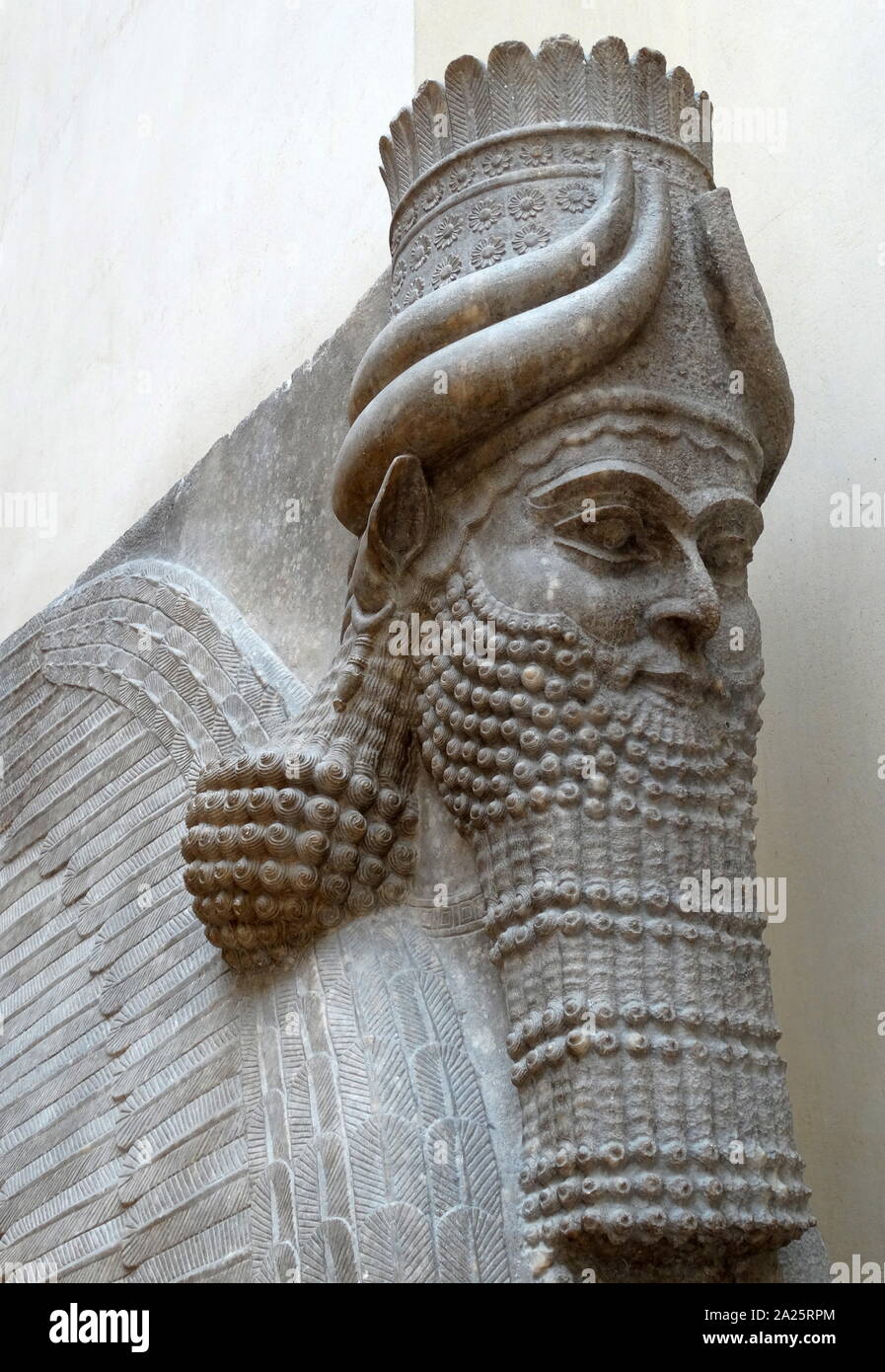 Human-headed winged bull from Sargon II's palace in Dur-Sharrukin, modern Khorsabad. In art, Lamassu were depicted with bodies of either winged bulls or lions and heads of human males. Dur-Sharrukin (Fortress of Sargon?), present day Khorsabad, was the Assyrian capital in the time of Sargon II of Assyria. Khorsabad is a village in northern Iraq, northeast of Mosul. The great city was entirely built in the decade preceding 706 BC Stock Photohttps://www.alamy.com/image-license-details/?v=1https://www.alamy.com/human-headed-winged-bull-from-sargon-iis-palace-in-dur-sharrukin-modern-khorsabad-in-art-lamassu-were-depicted-with-bodies-of-either-winged-bulls-or-lions-and-heads-of-human-males-dur-sharrukin-fortress-of-sargon-present-day-khorsabad-was-the-assyrian-capital-in-the-time-of-sargon-ii-of-assyria-khorsabad-is-a-village-in-northern-iraq-northeast-of-mosul-the-great-city-was-entirely-built-in-the-decade-preceding-706-bc-image328354732.html
Human-headed winged bull from Sargon II's palace in Dur-Sharrukin, modern Khorsabad. In art, Lamassu were depicted with bodies of either winged bulls or lions and heads of human males. Dur-Sharrukin (Fortress of Sargon?), present day Khorsabad, was the Assyrian capital in the time of Sargon II of Assyria. Khorsabad is a village in northern Iraq, northeast of Mosul. The great city was entirely built in the decade preceding 706 BC Stock Photohttps://www.alamy.com/image-license-details/?v=1https://www.alamy.com/human-headed-winged-bull-from-sargon-iis-palace-in-dur-sharrukin-modern-khorsabad-in-art-lamassu-were-depicted-with-bodies-of-either-winged-bulls-or-lions-and-heads-of-human-males-dur-sharrukin-fortress-of-sargon-present-day-khorsabad-was-the-assyrian-capital-in-the-time-of-sargon-ii-of-assyria-khorsabad-is-a-village-in-northern-iraq-northeast-of-mosul-the-great-city-was-entirely-built-in-the-decade-preceding-706-bc-image328354732.htmlRM2A25RPM–Human-headed winged bull from Sargon II's palace in Dur-Sharrukin, modern Khorsabad. In art, Lamassu were depicted with bodies of either winged bulls or lions and heads of human males. Dur-Sharrukin (Fortress of Sargon?), present day Khorsabad, was the Assyrian capital in the time of Sargon II of Assyria. Khorsabad is a village in northern Iraq, northeast of Mosul. The great city was entirely built in the decade preceding 706 BC
 Nineveh (Akkadian: Ninua) is an ancient Mesopotamian city on the eastern bank of the Tigris River, and capital of the Neo-Assyrian Empire. It was the largest city in the world for some fifty years until, after a bitter period of civil war in Assyria itself, it was sacked by an unusual coalition of former subject peoples, the Babylonians, Medes, Persians, Chaldeans, Scythians and Cimmerians in 612 BCE. Its ruins are across the river from the modern-day major city of Mosul, in the Ninawa Governorate of Iraq. In early 2015 the jihadist group ISIL (Islamic State in Iraq and the Levant) announced Stock Photohttps://www.alamy.com/image-license-details/?v=1https://www.alamy.com/nineveh-akkadian-ninua-is-an-ancient-mesopotamian-city-on-the-eastern-bank-of-the-tigris-river-and-capital-of-the-neo-assyrian-empire-it-was-the-largest-city-in-the-world-for-some-fifty-years-until-after-a-bitter-period-of-civil-war-in-assyria-itself-it-was-sacked-by-an-unusual-coalition-of-former-subject-peoples-the-babylonians-medes-persians-chaldeans-scythians-and-cimmerians-in-612-bce-its-ruins-are-across-the-river-from-the-modern-day-major-city-of-mosul-in-the-ninawa-governorate-of-iraq-in-early-2015-the-jihadist-group-isil-islamic-state-in-iraq-and-the-levant-announced-image344272164.html
Nineveh (Akkadian: Ninua) is an ancient Mesopotamian city on the eastern bank of the Tigris River, and capital of the Neo-Assyrian Empire. It was the largest city in the world for some fifty years until, after a bitter period of civil war in Assyria itself, it was sacked by an unusual coalition of former subject peoples, the Babylonians, Medes, Persians, Chaldeans, Scythians and Cimmerians in 612 BCE. Its ruins are across the river from the modern-day major city of Mosul, in the Ninawa Governorate of Iraq. In early 2015 the jihadist group ISIL (Islamic State in Iraq and the Levant) announced Stock Photohttps://www.alamy.com/image-license-details/?v=1https://www.alamy.com/nineveh-akkadian-ninua-is-an-ancient-mesopotamian-city-on-the-eastern-bank-of-the-tigris-river-and-capital-of-the-neo-assyrian-empire-it-was-the-largest-city-in-the-world-for-some-fifty-years-until-after-a-bitter-period-of-civil-war-in-assyria-itself-it-was-sacked-by-an-unusual-coalition-of-former-subject-peoples-the-babylonians-medes-persians-chaldeans-scythians-and-cimmerians-in-612-bce-its-ruins-are-across-the-river-from-the-modern-day-major-city-of-mosul-in-the-ninawa-governorate-of-iraq-in-early-2015-the-jihadist-group-isil-islamic-state-in-iraq-and-the-levant-announced-image344272164.htmlRM2B02XJC–Nineveh (Akkadian: Ninua) is an ancient Mesopotamian city on the eastern bank of the Tigris River, and capital of the Neo-Assyrian Empire. It was the largest city in the world for some fifty years until, after a bitter period of civil war in Assyria itself, it was sacked by an unusual coalition of former subject peoples, the Babylonians, Medes, Persians, Chaldeans, Scythians and Cimmerians in 612 BCE. Its ruins are across the river from the modern-day major city of Mosul, in the Ninawa Governorate of Iraq. In early 2015 the jihadist group ISIL (Islamic State in Iraq and the Levant) announced
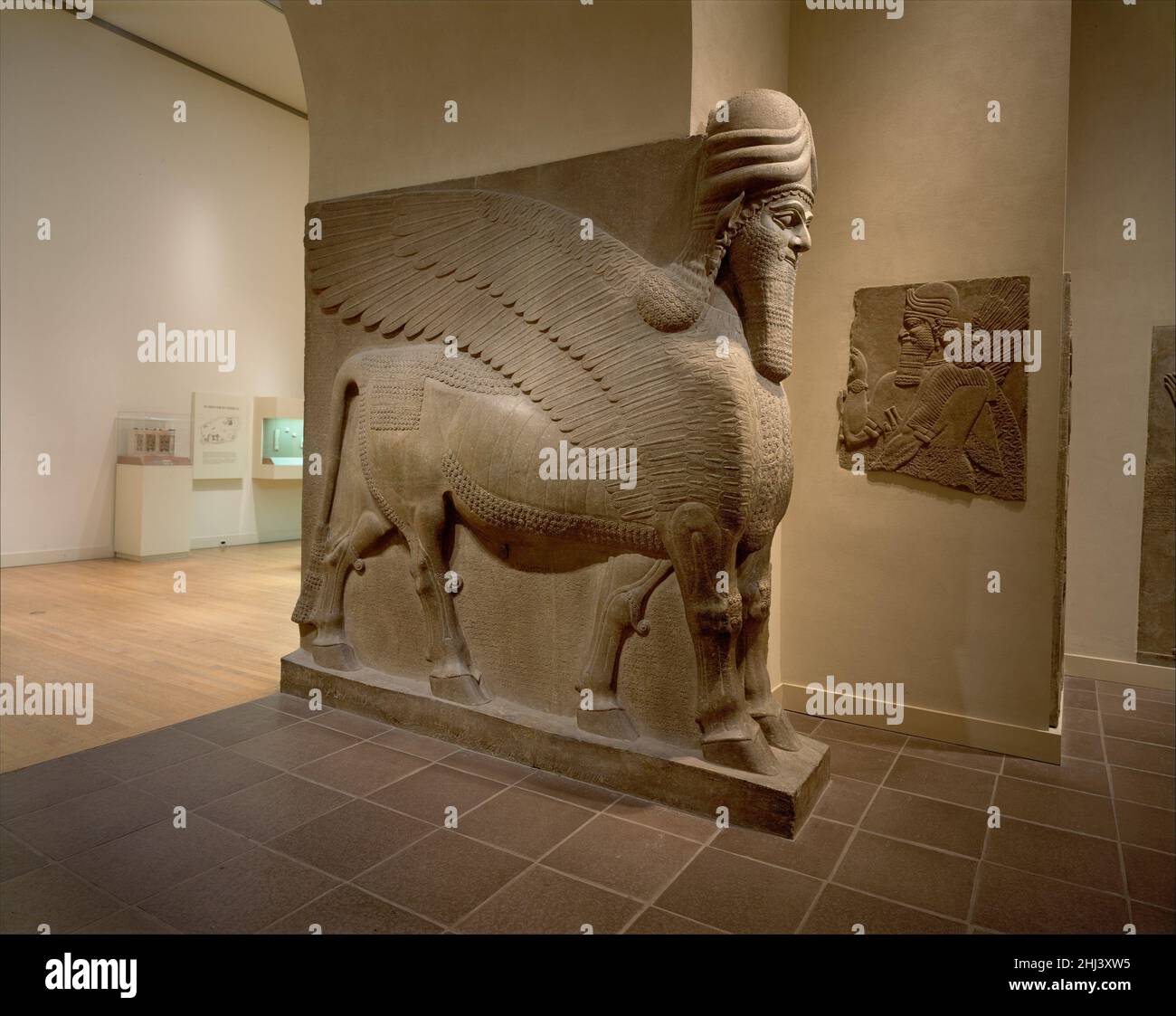 Human-headed winged bull (lamassu) ca. 883–859 B.C. Assyrian From the ninth to the seventh century B.C., the kings of Assyria ruled over a vast empire centered in northern Iraq. The great Assyrian king Ashurnasirpal II (r. 883–859 B.C.), undertook a vast building program at Nimrud, ancient Kalhu. Until it became the capital city under Ashurnasirpal, Nimrud had been no more than a provincial town.The new capital occupied an area of about nine hundred acres, around which Ashurnasirpal constructed a mudbrick wall that was 120 feet thick, 42 feet high, and five miles long. In the southwest corner Stock Photohttps://www.alamy.com/image-license-details/?v=1https://www.alamy.com/human-headed-winged-bull-lamassu-ca-883859-bc-assyrian-from-the-ninth-to-the-seventh-century-bc-the-kings-of-assyria-ruled-over-a-vast-empire-centered-in-northern-iraq-the-great-assyrian-king-ashurnasirpal-ii-r-883859-bc-undertook-a-vast-building-program-at-nimrud-ancient-kalhu-until-it-became-the-capital-city-under-ashurnasirpal-nimrud-had-been-no-more-than-a-provincial-townthe-new-capital-occupied-an-area-of-about-nine-hundred-acres-around-which-ashurnasirpal-constructed-a-mudbrick-wall-that-was-120-feet-thick-42-feet-high-and-five-miles-long-in-the-southwest-corner-image458620321.html
Human-headed winged bull (lamassu) ca. 883–859 B.C. Assyrian From the ninth to the seventh century B.C., the kings of Assyria ruled over a vast empire centered in northern Iraq. The great Assyrian king Ashurnasirpal II (r. 883–859 B.C.), undertook a vast building program at Nimrud, ancient Kalhu. Until it became the capital city under Ashurnasirpal, Nimrud had been no more than a provincial town.The new capital occupied an area of about nine hundred acres, around which Ashurnasirpal constructed a mudbrick wall that was 120 feet thick, 42 feet high, and five miles long. In the southwest corner Stock Photohttps://www.alamy.com/image-license-details/?v=1https://www.alamy.com/human-headed-winged-bull-lamassu-ca-883859-bc-assyrian-from-the-ninth-to-the-seventh-century-bc-the-kings-of-assyria-ruled-over-a-vast-empire-centered-in-northern-iraq-the-great-assyrian-king-ashurnasirpal-ii-r-883859-bc-undertook-a-vast-building-program-at-nimrud-ancient-kalhu-until-it-became-the-capital-city-under-ashurnasirpal-nimrud-had-been-no-more-than-a-provincial-townthe-new-capital-occupied-an-area-of-about-nine-hundred-acres-around-which-ashurnasirpal-constructed-a-mudbrick-wall-that-was-120-feet-thick-42-feet-high-and-five-miles-long-in-the-southwest-corner-image458620321.htmlRM2HJ3XW5–Human-headed winged bull (lamassu) ca. 883–859 B.C. Assyrian From the ninth to the seventh century B.C., the kings of Assyria ruled over a vast empire centered in northern Iraq. The great Assyrian king Ashurnasirpal II (r. 883–859 B.C.), undertook a vast building program at Nimrud, ancient Kalhu. Until it became the capital city under Ashurnasirpal, Nimrud had been no more than a provincial town.The new capital occupied an area of about nine hundred acres, around which Ashurnasirpal constructed a mudbrick wall that was 120 feet thick, 42 feet high, and five miles long. In the southwest corner
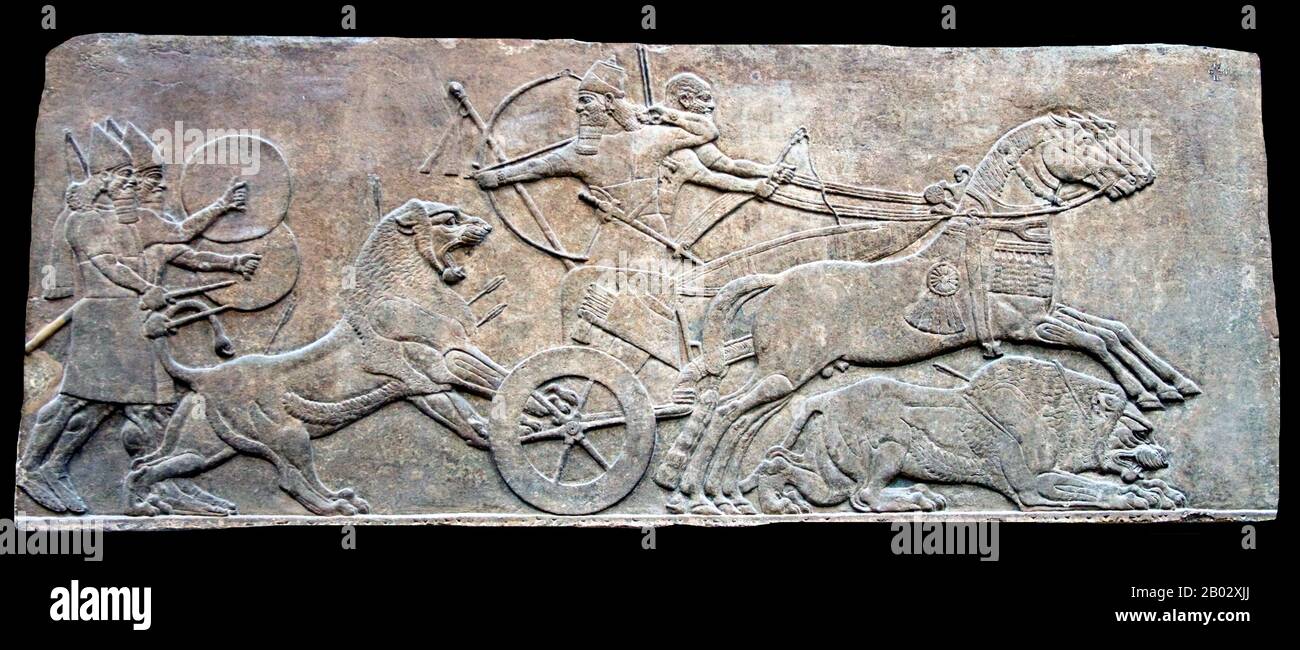 Nineveh (Akkadian: Ninua) is an ancient Mesopotamian city on the eastern bank of the Tigris River, and capital of the Neo-Assyrian Empire. It was the largest city in the world for some fifty years until, after a bitter period of civil war in Assyria itself, it was sacked by an unusual coalition of former subject peoples, the Babylonians, Medes, Persians, Chaldeans, Scythians and Cimmerians in 612 BCE. Its ruins are across the river from the modern-day major city of Mosul, in the Ninawa Governorate of Iraq. In early 2015 the jihadist group ISIL (Islamic State in Iraq and the Levant) announced Stock Photohttps://www.alamy.com/image-license-details/?v=1https://www.alamy.com/nineveh-akkadian-ninua-is-an-ancient-mesopotamian-city-on-the-eastern-bank-of-the-tigris-river-and-capital-of-the-neo-assyrian-empire-it-was-the-largest-city-in-the-world-for-some-fifty-years-until-after-a-bitter-period-of-civil-war-in-assyria-itself-it-was-sacked-by-an-unusual-coalition-of-former-subject-peoples-the-babylonians-medes-persians-chaldeans-scythians-and-cimmerians-in-612-bce-its-ruins-are-across-the-river-from-the-modern-day-major-city-of-mosul-in-the-ninawa-governorate-of-iraq-in-early-2015-the-jihadist-group-isil-islamic-state-in-iraq-and-the-levant-announced-image344272170.html
Nineveh (Akkadian: Ninua) is an ancient Mesopotamian city on the eastern bank of the Tigris River, and capital of the Neo-Assyrian Empire. It was the largest city in the world for some fifty years until, after a bitter period of civil war in Assyria itself, it was sacked by an unusual coalition of former subject peoples, the Babylonians, Medes, Persians, Chaldeans, Scythians and Cimmerians in 612 BCE. Its ruins are across the river from the modern-day major city of Mosul, in the Ninawa Governorate of Iraq. In early 2015 the jihadist group ISIL (Islamic State in Iraq and the Levant) announced Stock Photohttps://www.alamy.com/image-license-details/?v=1https://www.alamy.com/nineveh-akkadian-ninua-is-an-ancient-mesopotamian-city-on-the-eastern-bank-of-the-tigris-river-and-capital-of-the-neo-assyrian-empire-it-was-the-largest-city-in-the-world-for-some-fifty-years-until-after-a-bitter-period-of-civil-war-in-assyria-itself-it-was-sacked-by-an-unusual-coalition-of-former-subject-peoples-the-babylonians-medes-persians-chaldeans-scythians-and-cimmerians-in-612-bce-its-ruins-are-across-the-river-from-the-modern-day-major-city-of-mosul-in-the-ninawa-governorate-of-iraq-in-early-2015-the-jihadist-group-isil-islamic-state-in-iraq-and-the-levant-announced-image344272170.htmlRM2B02XJJ–Nineveh (Akkadian: Ninua) is an ancient Mesopotamian city on the eastern bank of the Tigris River, and capital of the Neo-Assyrian Empire. It was the largest city in the world for some fifty years until, after a bitter period of civil war in Assyria itself, it was sacked by an unusual coalition of former subject peoples, the Babylonians, Medes, Persians, Chaldeans, Scythians and Cimmerians in 612 BCE. Its ruins are across the river from the modern-day major city of Mosul, in the Ninawa Governorate of Iraq. In early 2015 the jihadist group ISIL (Islamic State in Iraq and the Levant) announced
 Panel with striding lion. Culture: Babylonian. Dimensions: H. 38 1/4 in. (97.2 cm). Date: ca. 604-562 B.C.. The Assyrian Empire fell before the combined onslaughts of Babylonians and Medes in 614 and 612 B.C. In the empire's final days, Nabopolassar (r. 625-605 B.C.), who had been in Assyrian service, established a new dynasty with its capital in Babylon. During the reign of his son, Nebuchadnezzar II (r. 604-562 B.C.), the Neo-Babylonian empire reached its peak. This was largely attributable to Nebuchadnezzar's ability as a statesman and general. He maintained friendly relations with the Med Stock Photohttps://www.alamy.com/image-license-details/?v=1https://www.alamy.com/panel-with-striding-lion-culture-babylonian-dimensions-h-38-14-in-972-cm-date-ca-604-562-bc-the-assyrian-empire-fell-before-the-combined-onslaughts-of-babylonians-and-medes-in-614-and-612-bc-in-the-empires-final-days-nabopolassar-r-625-605-bc-who-had-been-in-assyrian-service-established-a-new-dynasty-with-its-capital-in-babylon-during-the-reign-of-his-son-nebuchadnezzar-ii-r-604-562-bc-the-neo-babylonian-empire-reached-its-peak-this-was-largely-attributable-to-nebuchadnezzars-ability-as-a-statesman-and-general-he-maintained-friendly-relations-with-the-med-image213205793.html
Panel with striding lion. Culture: Babylonian. Dimensions: H. 38 1/4 in. (97.2 cm). Date: ca. 604-562 B.C.. The Assyrian Empire fell before the combined onslaughts of Babylonians and Medes in 614 and 612 B.C. In the empire's final days, Nabopolassar (r. 625-605 B.C.), who had been in Assyrian service, established a new dynasty with its capital in Babylon. During the reign of his son, Nebuchadnezzar II (r. 604-562 B.C.), the Neo-Babylonian empire reached its peak. This was largely attributable to Nebuchadnezzar's ability as a statesman and general. He maintained friendly relations with the Med Stock Photohttps://www.alamy.com/image-license-details/?v=1https://www.alamy.com/panel-with-striding-lion-culture-babylonian-dimensions-h-38-14-in-972-cm-date-ca-604-562-bc-the-assyrian-empire-fell-before-the-combined-onslaughts-of-babylonians-and-medes-in-614-and-612-bc-in-the-empires-final-days-nabopolassar-r-625-605-bc-who-had-been-in-assyrian-service-established-a-new-dynasty-with-its-capital-in-babylon-during-the-reign-of-his-son-nebuchadnezzar-ii-r-604-562-bc-the-neo-babylonian-empire-reached-its-peak-this-was-largely-attributable-to-nebuchadnezzars-ability-as-a-statesman-and-general-he-maintained-friendly-relations-with-the-med-image213205793.htmlRMPATA4H–Panel with striding lion. Culture: Babylonian. Dimensions: H. 38 1/4 in. (97.2 cm). Date: ca. 604-562 B.C.. The Assyrian Empire fell before the combined onslaughts of Babylonians and Medes in 614 and 612 B.C. In the empire's final days, Nabopolassar (r. 625-605 B.C.), who had been in Assyrian service, established a new dynasty with its capital in Babylon. During the reign of his son, Nebuchadnezzar II (r. 604-562 B.C.), the Neo-Babylonian empire reached its peak. This was largely attributable to Nebuchadnezzar's ability as a statesman and general. He maintained friendly relations with the Med
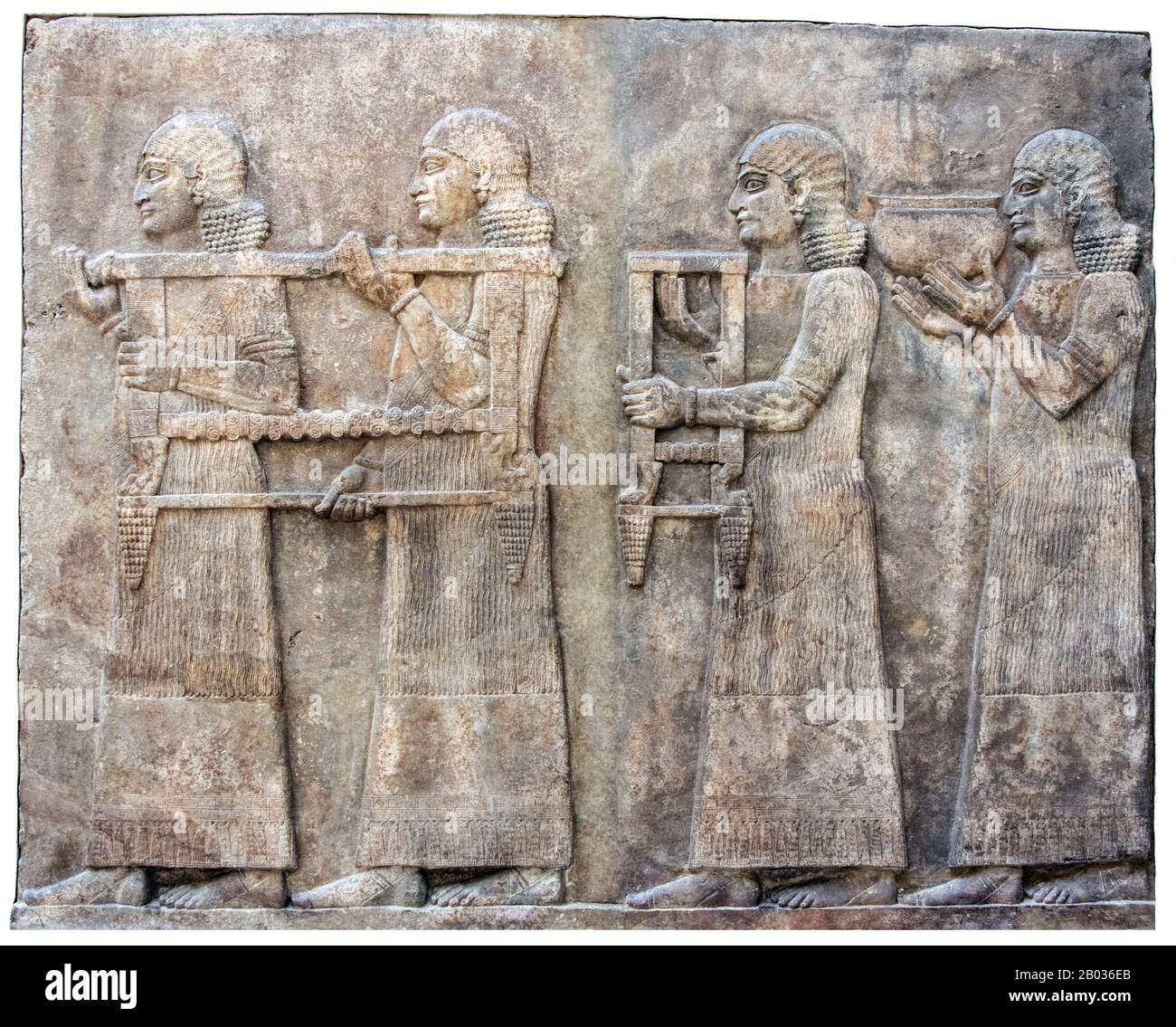 Dur-Sharrukin, present day Khorsabad, was the Assyrian capital in the time of Sargon II of Assyria. Khorsabad is a village in northern Iraq, 15 km northeast of Mosul. The great city was entirely built in the decade preceding 706 BCE. After the unexpected death of Sargon in battle, the capital was moved 20 km south to Nineveh. On 8 March 2015 the Islamic State of Iraq and the Levant (ISIL) reportedly started the plunder and demolition of Dur-Sharrukin, according to a Kurdish official from Mosul. The Iraqi Tourism and Antiquities Ministry launched the related investigation on the same day. Stock Photohttps://www.alamy.com/image-license-details/?v=1https://www.alamy.com/dur-sharrukin-present-day-khorsabad-was-the-assyrian-capital-in-the-time-of-sargon-ii-of-assyria-khorsabad-is-a-village-in-northern-iraq-15-km-northeast-of-mosul-the-great-city-was-entirely-built-in-the-decade-preceding-706-bce-after-the-unexpected-death-of-sargon-in-battle-the-capital-was-moved-20-km-south-to-nineveh-on-8-march-2015-the-islamic-state-of-iraq-and-the-levant-isil-reportedly-started-the-plunder-and-demolition-of-dur-sharrukin-according-to-a-kurdish-official-from-mosul-the-iraqi-tourism-and-antiquities-ministry-launched-the-related-investigation-on-the-same-day-image344278323.html
Dur-Sharrukin, present day Khorsabad, was the Assyrian capital in the time of Sargon II of Assyria. Khorsabad is a village in northern Iraq, 15 km northeast of Mosul. The great city was entirely built in the decade preceding 706 BCE. After the unexpected death of Sargon in battle, the capital was moved 20 km south to Nineveh. On 8 March 2015 the Islamic State of Iraq and the Levant (ISIL) reportedly started the plunder and demolition of Dur-Sharrukin, according to a Kurdish official from Mosul. The Iraqi Tourism and Antiquities Ministry launched the related investigation on the same day. Stock Photohttps://www.alamy.com/image-license-details/?v=1https://www.alamy.com/dur-sharrukin-present-day-khorsabad-was-the-assyrian-capital-in-the-time-of-sargon-ii-of-assyria-khorsabad-is-a-village-in-northern-iraq-15-km-northeast-of-mosul-the-great-city-was-entirely-built-in-the-decade-preceding-706-bce-after-the-unexpected-death-of-sargon-in-battle-the-capital-was-moved-20-km-south-to-nineveh-on-8-march-2015-the-islamic-state-of-iraq-and-the-levant-isil-reportedly-started-the-plunder-and-demolition-of-dur-sharrukin-according-to-a-kurdish-official-from-mosul-the-iraqi-tourism-and-antiquities-ministry-launched-the-related-investigation-on-the-same-day-image344278323.htmlRM2B036EB–Dur-Sharrukin, present day Khorsabad, was the Assyrian capital in the time of Sargon II of Assyria. Khorsabad is a village in northern Iraq, 15 km northeast of Mosul. The great city was entirely built in the decade preceding 706 BCE. After the unexpected death of Sargon in battle, the capital was moved 20 km south to Nineveh. On 8 March 2015 the Islamic State of Iraq and the Levant (ISIL) reportedly started the plunder and demolition of Dur-Sharrukin, according to a Kurdish official from Mosul. The Iraqi Tourism and Antiquities Ministry launched the related investigation on the same day.
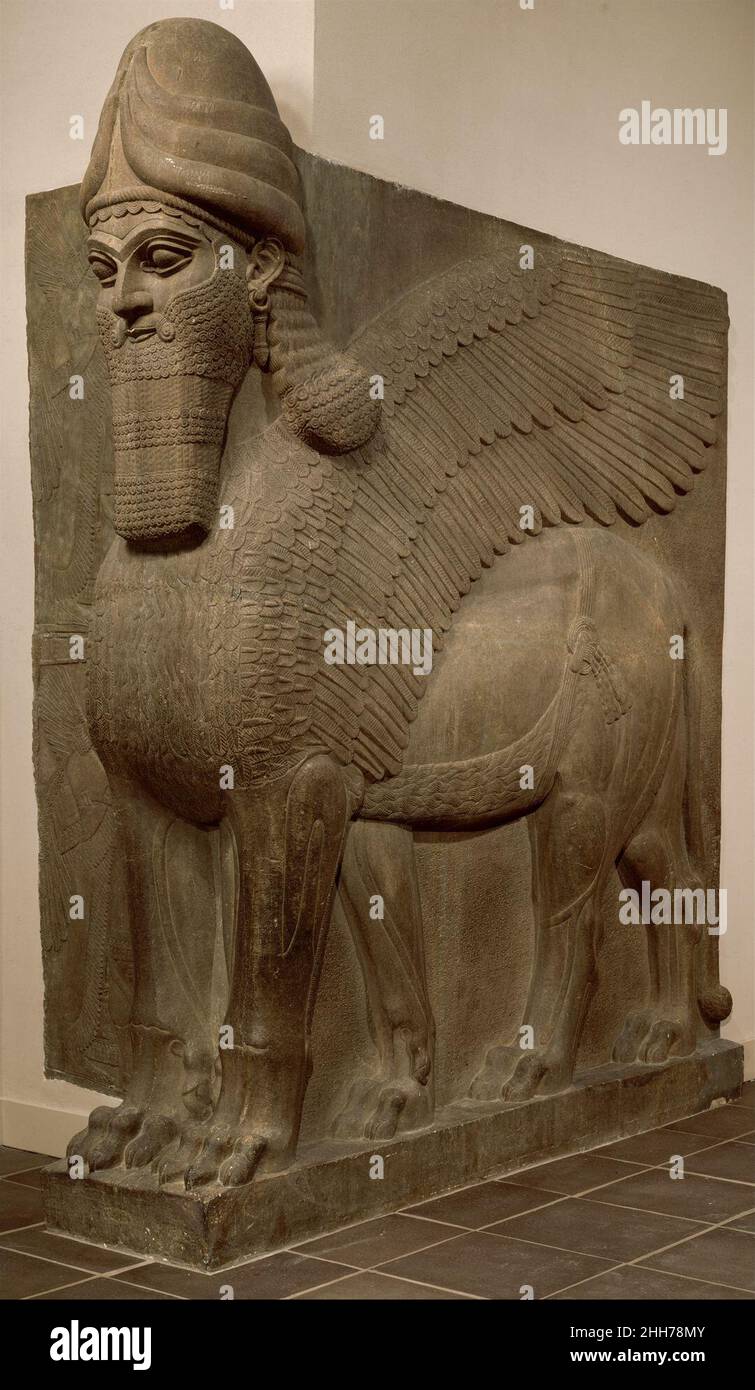 Human-headed winged lion (lamassu) ca. 883–859 B.C. Assyrian From the ninth to the seventh century B.C., the kings of Assyria ruled over a vast empire centered in northern Iraq. The great Assyrian king Ashurnasirpal II (r. 883–859 B.C.), undertook a vast building program at Nimrud, ancient Kalhu. Until it became the capital city under Ashurnasirpal, Nimrud had been no more than a provincial town.The new capital occupied an area of about nine hundred acres, around which Ashurnasirpal constructed a mudbrick wall that was 120 feet thick, 42 feet high, and five miles long. In the southwest corner Stock Photohttps://www.alamy.com/image-license-details/?v=1https://www.alamy.com/human-headed-winged-lion-lamassu-ca-883859-bc-assyrian-from-the-ninth-to-the-seventh-century-bc-the-kings-of-assyria-ruled-over-a-vast-empire-centered-in-northern-iraq-the-great-assyrian-king-ashurnasirpal-ii-r-883859-bc-undertook-a-vast-building-program-at-nimrud-ancient-kalhu-until-it-became-the-capital-city-under-ashurnasirpal-nimrud-had-been-no-more-than-a-provincial-townthe-new-capital-occupied-an-area-of-about-nine-hundred-acres-around-which-ashurnasirpal-constructed-a-mudbrick-wall-that-was-120-feet-thick-42-feet-high-and-five-miles-long-in-the-southwest-corner-image458079243.html
Human-headed winged lion (lamassu) ca. 883–859 B.C. Assyrian From the ninth to the seventh century B.C., the kings of Assyria ruled over a vast empire centered in northern Iraq. The great Assyrian king Ashurnasirpal II (r. 883–859 B.C.), undertook a vast building program at Nimrud, ancient Kalhu. Until it became the capital city under Ashurnasirpal, Nimrud had been no more than a provincial town.The new capital occupied an area of about nine hundred acres, around which Ashurnasirpal constructed a mudbrick wall that was 120 feet thick, 42 feet high, and five miles long. In the southwest corner Stock Photohttps://www.alamy.com/image-license-details/?v=1https://www.alamy.com/human-headed-winged-lion-lamassu-ca-883859-bc-assyrian-from-the-ninth-to-the-seventh-century-bc-the-kings-of-assyria-ruled-over-a-vast-empire-centered-in-northern-iraq-the-great-assyrian-king-ashurnasirpal-ii-r-883859-bc-undertook-a-vast-building-program-at-nimrud-ancient-kalhu-until-it-became-the-capital-city-under-ashurnasirpal-nimrud-had-been-no-more-than-a-provincial-townthe-new-capital-occupied-an-area-of-about-nine-hundred-acres-around-which-ashurnasirpal-constructed-a-mudbrick-wall-that-was-120-feet-thick-42-feet-high-and-five-miles-long-in-the-southwest-corner-image458079243.htmlRM2HH78MY–Human-headed winged lion (lamassu) ca. 883–859 B.C. Assyrian From the ninth to the seventh century B.C., the kings of Assyria ruled over a vast empire centered in northern Iraq. The great Assyrian king Ashurnasirpal II (r. 883–859 B.C.), undertook a vast building program at Nimrud, ancient Kalhu. Until it became the capital city under Ashurnasirpal, Nimrud had been no more than a provincial town.The new capital occupied an area of about nine hundred acres, around which Ashurnasirpal constructed a mudbrick wall that was 120 feet thick, 42 feet high, and five miles long. In the southwest corner
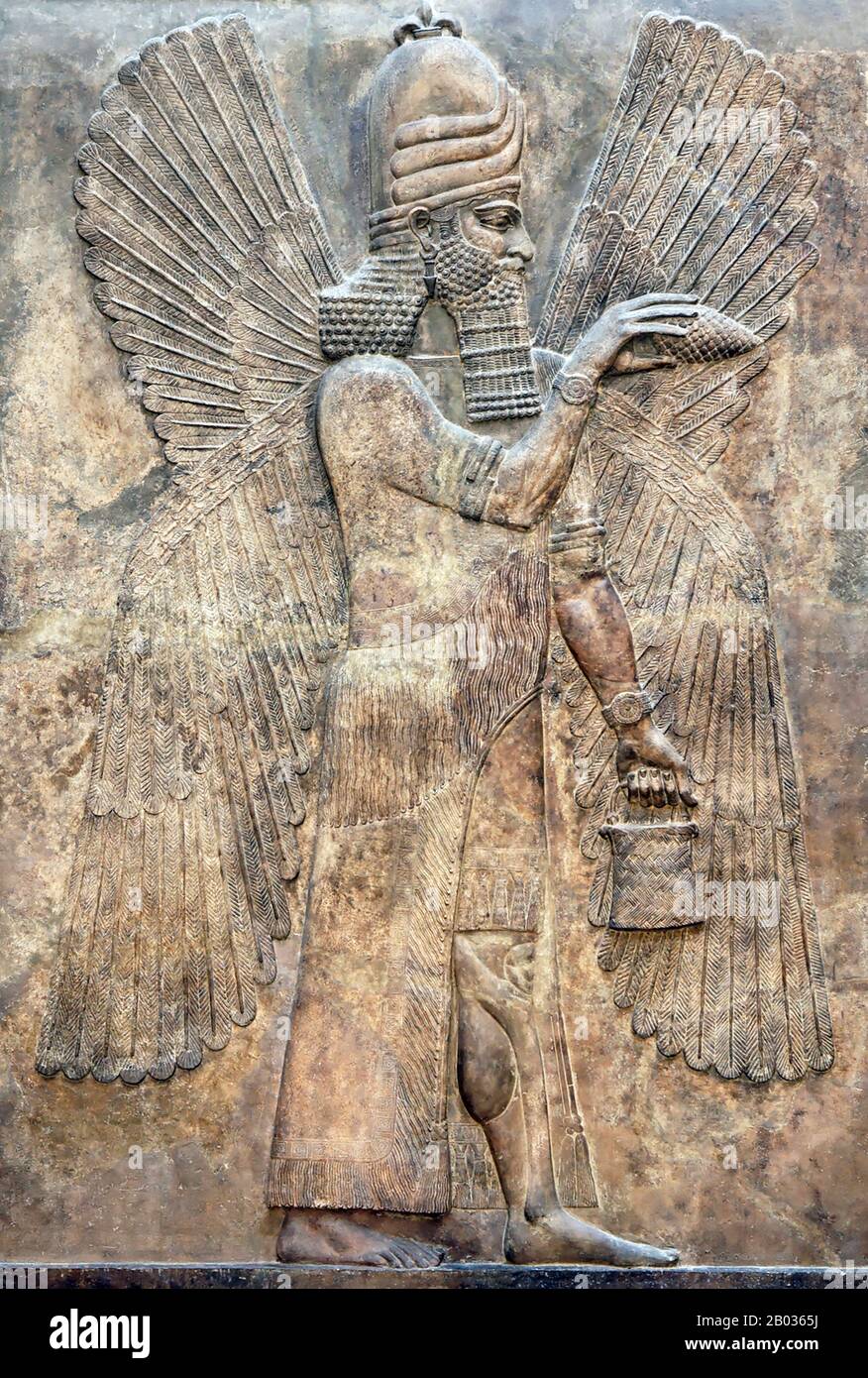 Dur-Sharrukin, present day Khorsabad, was the Assyrian capital in the time of Sargon II of Assyria. Khorsabad is a village in northern Iraq, 15 km northeast of Mosul. The great city was entirely built in the decade preceding 706 BCE. After the unexpected death of Sargon in battle, the capital was moved 20 km south to Nineveh. On 8 March 2015 the Islamic State of Iraq and the Levant (ISIL) reportedly started the plunder and demolition of Dur-Sharrukin, according to a Kurdish official from Mosul. The Iraqi Tourism and Antiquities Ministry launched the related investigation on the same day. Stock Photohttps://www.alamy.com/image-license-details/?v=1https://www.alamy.com/dur-sharrukin-present-day-khorsabad-was-the-assyrian-capital-in-the-time-of-sargon-ii-of-assyria-khorsabad-is-a-village-in-northern-iraq-15-km-northeast-of-mosul-the-great-city-was-entirely-built-in-the-decade-preceding-706-bce-after-the-unexpected-death-of-sargon-in-battle-the-capital-was-moved-20-km-south-to-nineveh-on-8-march-2015-the-islamic-state-of-iraq-and-the-levant-isil-reportedly-started-the-plunder-and-demolition-of-dur-sharrukin-according-to-a-kurdish-official-from-mosul-the-iraqi-tourism-and-antiquities-ministry-launched-the-related-investigation-on-the-same-day-image344278078.html
Dur-Sharrukin, present day Khorsabad, was the Assyrian capital in the time of Sargon II of Assyria. Khorsabad is a village in northern Iraq, 15 km northeast of Mosul. The great city was entirely built in the decade preceding 706 BCE. After the unexpected death of Sargon in battle, the capital was moved 20 km south to Nineveh. On 8 March 2015 the Islamic State of Iraq and the Levant (ISIL) reportedly started the plunder and demolition of Dur-Sharrukin, according to a Kurdish official from Mosul. The Iraqi Tourism and Antiquities Ministry launched the related investigation on the same day. Stock Photohttps://www.alamy.com/image-license-details/?v=1https://www.alamy.com/dur-sharrukin-present-day-khorsabad-was-the-assyrian-capital-in-the-time-of-sargon-ii-of-assyria-khorsabad-is-a-village-in-northern-iraq-15-km-northeast-of-mosul-the-great-city-was-entirely-built-in-the-decade-preceding-706-bce-after-the-unexpected-death-of-sargon-in-battle-the-capital-was-moved-20-km-south-to-nineveh-on-8-march-2015-the-islamic-state-of-iraq-and-the-levant-isil-reportedly-started-the-plunder-and-demolition-of-dur-sharrukin-according-to-a-kurdish-official-from-mosul-the-iraqi-tourism-and-antiquities-ministry-launched-the-related-investigation-on-the-same-day-image344278078.htmlRM2B0365J–Dur-Sharrukin, present day Khorsabad, was the Assyrian capital in the time of Sargon II of Assyria. Khorsabad is a village in northern Iraq, 15 km northeast of Mosul. The great city was entirely built in the decade preceding 706 BCE. After the unexpected death of Sargon in battle, the capital was moved 20 km south to Nineveh. On 8 March 2015 the Islamic State of Iraq and the Levant (ISIL) reportedly started the plunder and demolition of Dur-Sharrukin, according to a Kurdish official from Mosul. The Iraqi Tourism and Antiquities Ministry launched the related investigation on the same day.
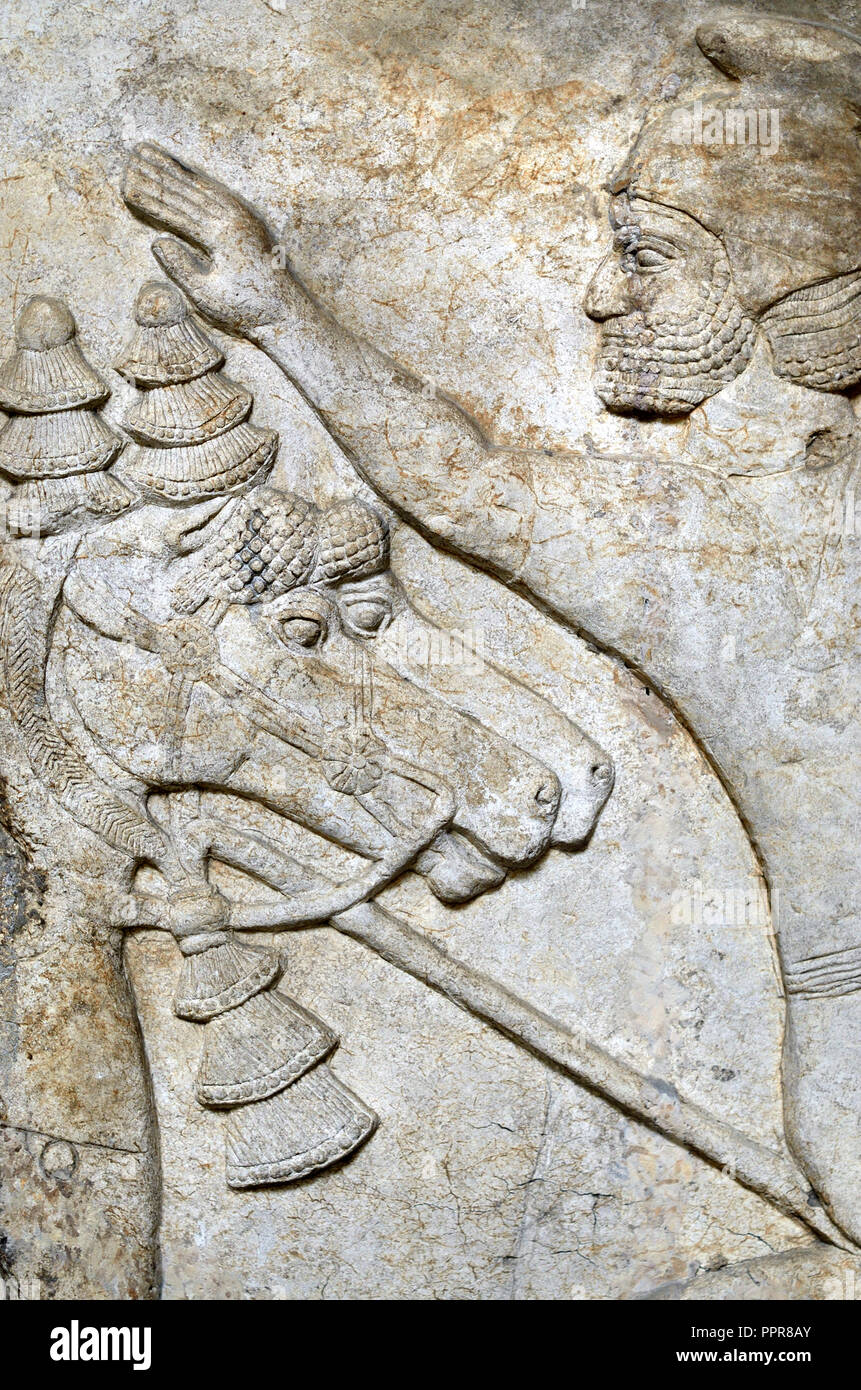 Assyrian stone panel (Nimrud: c728BC) showing Surrender of Enemy Horseman. British Museum, Bloomsbury, London, England, UK. Stock Photohttps://www.alamy.com/image-license-details/?v=1https://www.alamy.com/assyrian-stone-panel-nimrud-c728bc-showing-surrender-of-enemy-horseman-british-museum-bloomsbury-london-england-uk-image220558323.html
Assyrian stone panel (Nimrud: c728BC) showing Surrender of Enemy Horseman. British Museum, Bloomsbury, London, England, UK. Stock Photohttps://www.alamy.com/image-license-details/?v=1https://www.alamy.com/assyrian-stone-panel-nimrud-c728bc-showing-surrender-of-enemy-horseman-british-museum-bloomsbury-london-england-uk-image220558323.htmlRMPPR8AY–Assyrian stone panel (Nimrud: c728BC) showing Surrender of Enemy Horseman. British Museum, Bloomsbury, London, England, UK.
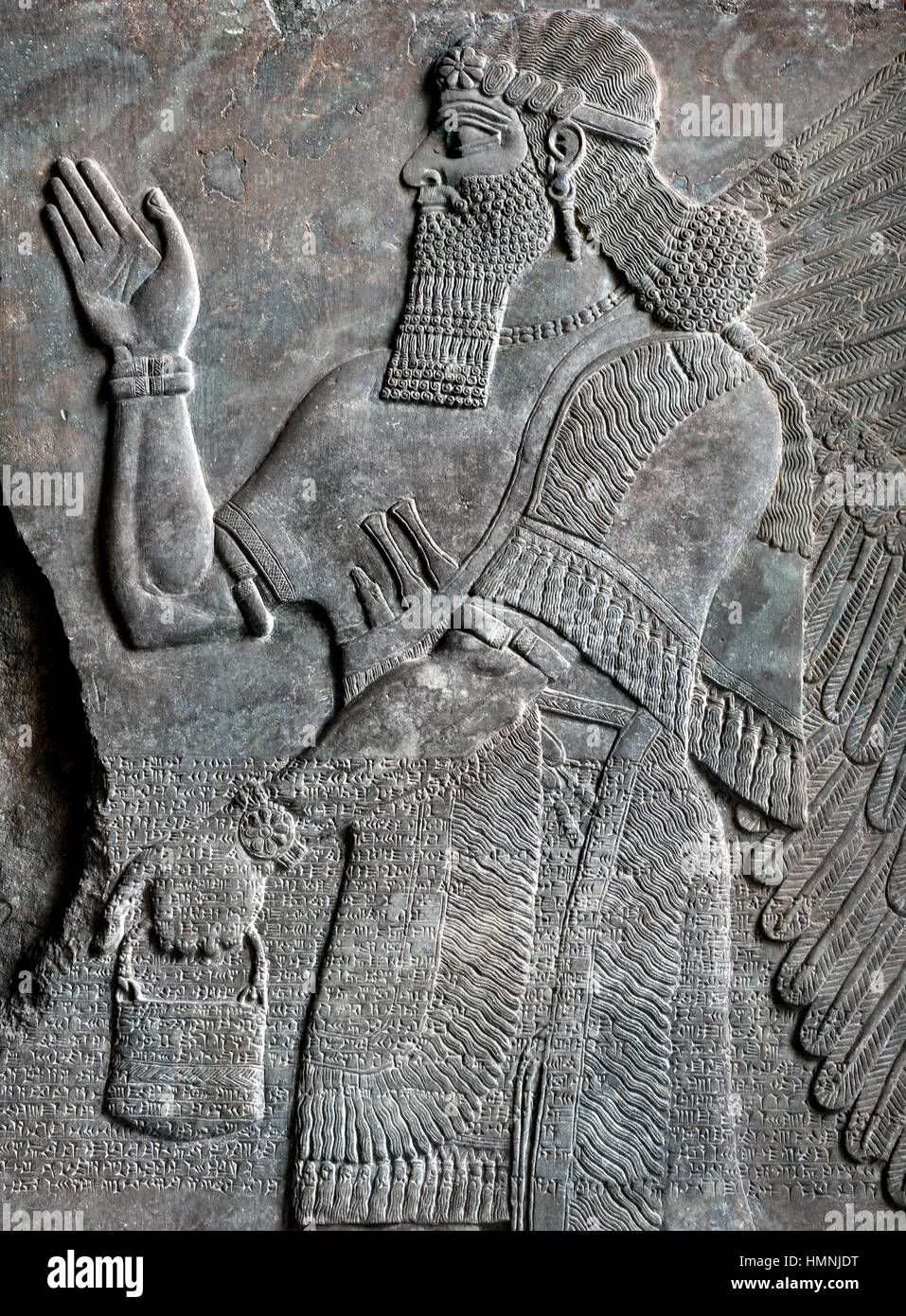 Nineveh ancient Assyrian city, of Upper Mesopotamia, (Mosul Iraq) capital Neo Assyrian Empire, (Assyria 2500 BC–612 BC) Stock Photohttps://www.alamy.com/image-license-details/?v=1https://www.alamy.com/stock-photo-nineveh-ancient-assyrian-city-of-upper-mesopotamia-mosul-iraq-capital-133241188.html
Nineveh ancient Assyrian city, of Upper Mesopotamia, (Mosul Iraq) capital Neo Assyrian Empire, (Assyria 2500 BC–612 BC) Stock Photohttps://www.alamy.com/image-license-details/?v=1https://www.alamy.com/stock-photo-nineveh-ancient-assyrian-city-of-upper-mesopotamia-mosul-iraq-capital-133241188.htmlRMHMNJDT–Nineveh ancient Assyrian city, of Upper Mesopotamia, (Mosul Iraq) capital Neo Assyrian Empire, (Assyria 2500 BC–612 BC)
 man with a lion relief on the portal of Khorsabad, the Assyrian capital in the time of Sargon II of Assyria, Mesopotamia, Iraq, digital improved reproduction of an original print from the year 1881 Stock Photohttps://www.alamy.com/image-license-details/?v=1https://www.alamy.com/man-with-a-lion-relief-on-the-portal-of-khorsabad-the-assyrian-capital-in-the-time-of-sargon-ii-of-assyria-mesopotamia-iraq-digital-improved-reproduction-of-an-original-print-from-the-year-1881-image210972714.html
man with a lion relief on the portal of Khorsabad, the Assyrian capital in the time of Sargon II of Assyria, Mesopotamia, Iraq, digital improved reproduction of an original print from the year 1881 Stock Photohttps://www.alamy.com/image-license-details/?v=1https://www.alamy.com/man-with-a-lion-relief-on-the-portal-of-khorsabad-the-assyrian-capital-in-the-time-of-sargon-ii-of-assyria-mesopotamia-iraq-digital-improved-reproduction-of-an-original-print-from-the-year-1881-image210972714.htmlRFP76HRP–man with a lion relief on the portal of Khorsabad, the Assyrian capital in the time of Sargon II of Assyria, Mesopotamia, Iraq, digital improved reproduction of an original print from the year 1881
 Excavation of Assur, 1925 Stock Photohttps://www.alamy.com/image-license-details/?v=1https://www.alamy.com/stock-photo-excavation-of-assur-1925-48335752.html
Excavation of Assur, 1925 Stock Photohttps://www.alamy.com/image-license-details/?v=1https://www.alamy.com/stock-photo-excavation-of-assur-1925-48335752.htmlRMCPHTMT–Excavation of Assur, 1925
 Assyrian eagle-headed protective spirit from Nimrud, Temple of Ninurta, at the British Museum, London, UK Stock Photohttps://www.alamy.com/image-license-details/?v=1https://www.alamy.com/assyrian-eagle-headed-protective-spirit-from-nimrud-temple-of-ninurta-at-the-british-museum-london-uk-image447354744.html
Assyrian eagle-headed protective spirit from Nimrud, Temple of Ninurta, at the British Museum, London, UK Stock Photohttps://www.alamy.com/image-license-details/?v=1https://www.alamy.com/assyrian-eagle-headed-protective-spirit-from-nimrud-temple-of-ninurta-at-the-british-museum-london-uk-image447354744.htmlRM2GYPNF4–Assyrian eagle-headed protective spirit from Nimrud, Temple of Ninurta, at the British Museum, London, UK
 Assyrian Shalamaneser pours the dust taken from conquered Arinnu and pours it out before an Assyrian temple in Assur. Stock Photohttps://www.alamy.com/image-license-details/?v=1https://www.alamy.com/stock-photo-assyrian-shalamaneser-pours-the-dust-taken-from-conquered-arinnu-and-41859704.html
Assyrian Shalamaneser pours the dust taken from conquered Arinnu and pours it out before an Assyrian temple in Assur. Stock Photohttps://www.alamy.com/image-license-details/?v=1https://www.alamy.com/stock-photo-assyrian-shalamaneser-pours-the-dust-taken-from-conquered-arinnu-and-41859704.htmlRFCC2TDC–Assyrian Shalamaneser pours the dust taken from conquered Arinnu and pours it out before an Assyrian temple in Assur.
 Persepolis restoration site detail Stock Photohttps://www.alamy.com/image-license-details/?v=1https://www.alamy.com/stock-photo-persepolis-restoration-site-detail-126367900.html
Persepolis restoration site detail Stock Photohttps://www.alamy.com/image-license-details/?v=1https://www.alamy.com/stock-photo-persepolis-restoration-site-detail-126367900.htmlRFH9GFF8–Persepolis restoration site detail
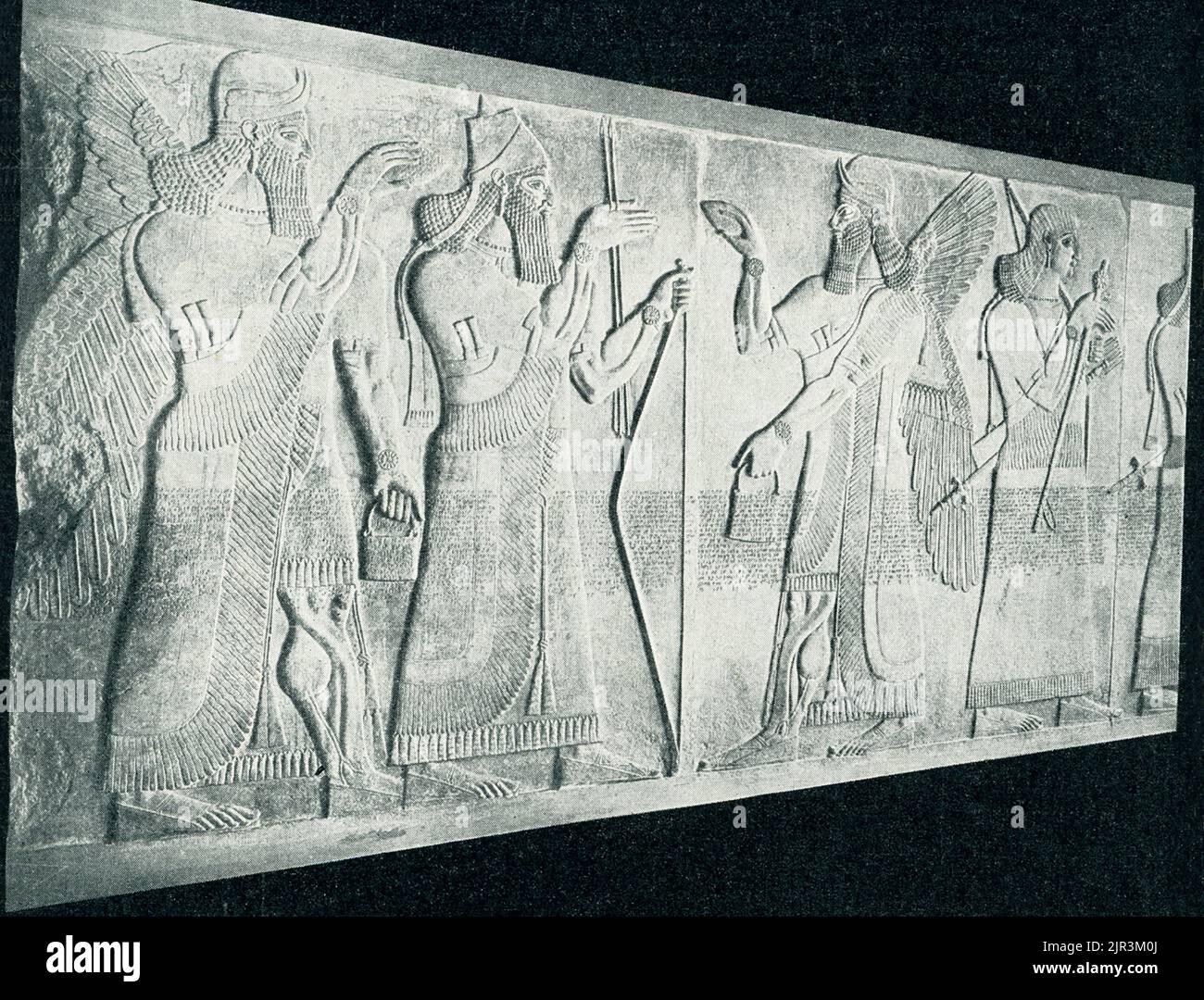 The 1910 caption reads: 'Assyrian king between genie - in the Royal Museum in Berlin. The Assyrian mythical guardian figure, called a Genius, wears a two-horned helmet and fringed garment and carries a double-handled dagger, all attributes of his divine nature. His hands gesture protectively toward a flowering tree, just visible at the right edge of the sculpture. This relief, once brightly painted, is a fragment from the Northwest palace built by the Assyrian king Ashirnasirpal II (883—859 BCE) in his capital city at Kalhu, now the Iraqi city of Nimrud. Dozens of huge stone slabs carved with Stock Photohttps://www.alamy.com/image-license-details/?v=1https://www.alamy.com/the-1910-caption-reads-assyrian-king-between-genie-in-the-royal-museum-in-berlin-the-assyrian-mythical-guardian-figure-called-a-genius-wears-a-two-horned-helmet-and-fringed-garment-and-carries-a-double-handled-dagger-all-attributes-of-his-divine-nature-his-hands-gesture-protectively-toward-a-flowering-tree-just-visible-at-the-right-edge-of-the-sculpture-this-relief-once-brightly-painted-is-a-fragment-from-the-northwest-palace-built-by-the-assyrian-king-ashirnasirpal-ii-883859-bce-in-his-capital-city-at-kalhu-now-the-iraqi-city-of-nimrud-dozens-of-huge-stone-slabs-carved-with-image478898578.html
The 1910 caption reads: 'Assyrian king between genie - in the Royal Museum in Berlin. The Assyrian mythical guardian figure, called a Genius, wears a two-horned helmet and fringed garment and carries a double-handled dagger, all attributes of his divine nature. His hands gesture protectively toward a flowering tree, just visible at the right edge of the sculpture. This relief, once brightly painted, is a fragment from the Northwest palace built by the Assyrian king Ashirnasirpal II (883—859 BCE) in his capital city at Kalhu, now the Iraqi city of Nimrud. Dozens of huge stone slabs carved with Stock Photohttps://www.alamy.com/image-license-details/?v=1https://www.alamy.com/the-1910-caption-reads-assyrian-king-between-genie-in-the-royal-museum-in-berlin-the-assyrian-mythical-guardian-figure-called-a-genius-wears-a-two-horned-helmet-and-fringed-garment-and-carries-a-double-handled-dagger-all-attributes-of-his-divine-nature-his-hands-gesture-protectively-toward-a-flowering-tree-just-visible-at-the-right-edge-of-the-sculpture-this-relief-once-brightly-painted-is-a-fragment-from-the-northwest-palace-built-by-the-assyrian-king-ashirnasirpal-ii-883859-bce-in-his-capital-city-at-kalhu-now-the-iraqi-city-of-nimrud-dozens-of-huge-stone-slabs-carved-with-image478898578.htmlRF2JR3M0J–The 1910 caption reads: 'Assyrian king between genie - in the Royal Museum in Berlin. The Assyrian mythical guardian figure, called a Genius, wears a two-horned helmet and fringed garment and carries a double-handled dagger, all attributes of his divine nature. His hands gesture protectively toward a flowering tree, just visible at the right edge of the sculpture. This relief, once brightly painted, is a fragment from the Northwest palace built by the Assyrian king Ashirnasirpal II (883—859 BCE) in his capital city at Kalhu, now the Iraqi city of Nimrud. Dozens of huge stone slabs carved with
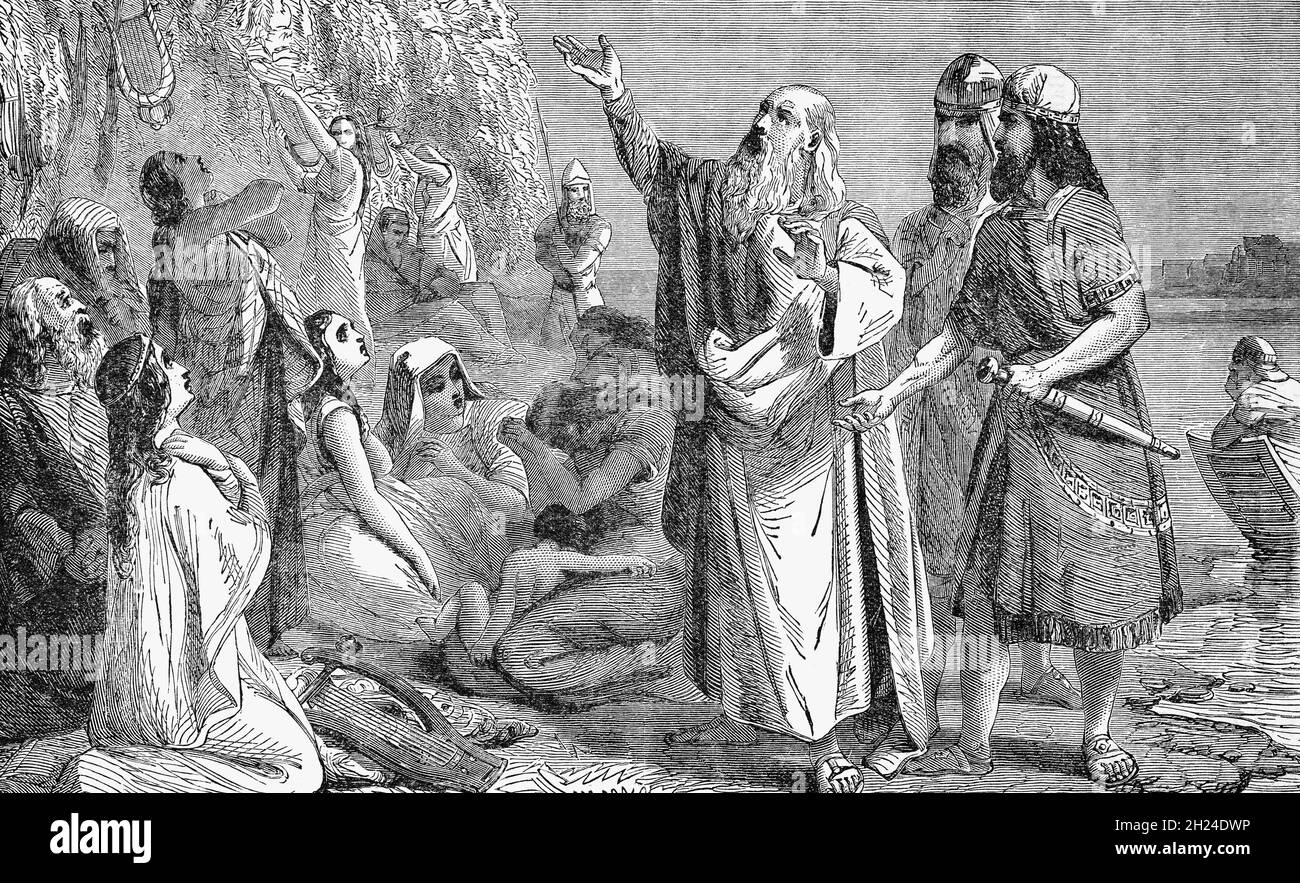 A late 19th Century illustration of Judean captives in Babylonian captivity or exile, a period in Jewish history during which a number of people from the ancient Kingdom of Judah were captives in Babylon, capital of the Neo-Babylonian Empire. After the Battle of Carchemish in 605 BCE, King Nebuchadnezzar of Babylon besieged Jerusalem. King Jehoiakim refused to pay tribute in Nebuchadnezzar's fourth year, which led to another siege in Nebuchadnezzar's seventh year, culminating with the death of Jehoiakim and the exile to Babylonia of King Jeconiah, his court and many others; Jeconiah's successo Stock Photohttps://www.alamy.com/image-license-details/?v=1https://www.alamy.com/a-late-19th-century-illustration-of-judean-captives-in-babylonian-captivity-or-exile-a-period-in-jewish-history-during-which-a-number-of-people-from-the-ancient-kingdom-of-judah-were-captives-in-babylon-capital-of-the-neo-babylonian-empire-after-the-battle-of-carchemish-in-605-bce-king-nebuchadnezzar-of-babylon-besieged-jerusalem-king-jehoiakim-refused-to-pay-tribute-in-nebuchadnezzars-fourth-year-which-led-to-another-siege-in-nebuchadnezzars-seventh-year-culminating-with-the-death-of-jehoiakim-and-the-exile-to-babylonia-of-king-jeconiah-his-court-and-many-others-jeconiahs-successo-image448797602.html
A late 19th Century illustration of Judean captives in Babylonian captivity or exile, a period in Jewish history during which a number of people from the ancient Kingdom of Judah were captives in Babylon, capital of the Neo-Babylonian Empire. After the Battle of Carchemish in 605 BCE, King Nebuchadnezzar of Babylon besieged Jerusalem. King Jehoiakim refused to pay tribute in Nebuchadnezzar's fourth year, which led to another siege in Nebuchadnezzar's seventh year, culminating with the death of Jehoiakim and the exile to Babylonia of King Jeconiah, his court and many others; Jeconiah's successo Stock Photohttps://www.alamy.com/image-license-details/?v=1https://www.alamy.com/a-late-19th-century-illustration-of-judean-captives-in-babylonian-captivity-or-exile-a-period-in-jewish-history-during-which-a-number-of-people-from-the-ancient-kingdom-of-judah-were-captives-in-babylon-capital-of-the-neo-babylonian-empire-after-the-battle-of-carchemish-in-605-bce-king-nebuchadnezzar-of-babylon-besieged-jerusalem-king-jehoiakim-refused-to-pay-tribute-in-nebuchadnezzars-fourth-year-which-led-to-another-siege-in-nebuchadnezzars-seventh-year-culminating-with-the-death-of-jehoiakim-and-the-exile-to-babylonia-of-king-jeconiah-his-court-and-many-others-jeconiahs-successo-image448797602.htmlRM2H24DWP–A late 19th Century illustration of Judean captives in Babylonian captivity or exile, a period in Jewish history during which a number of people from the ancient Kingdom of Judah were captives in Babylon, capital of the Neo-Babylonian Empire. After the Battle of Carchemish in 605 BCE, King Nebuchadnezzar of Babylon besieged Jerusalem. King Jehoiakim refused to pay tribute in Nebuchadnezzar's fourth year, which led to another siege in Nebuchadnezzar's seventh year, culminating with the death of Jehoiakim and the exile to Babylonia of King Jeconiah, his court and many others; Jeconiah's successo
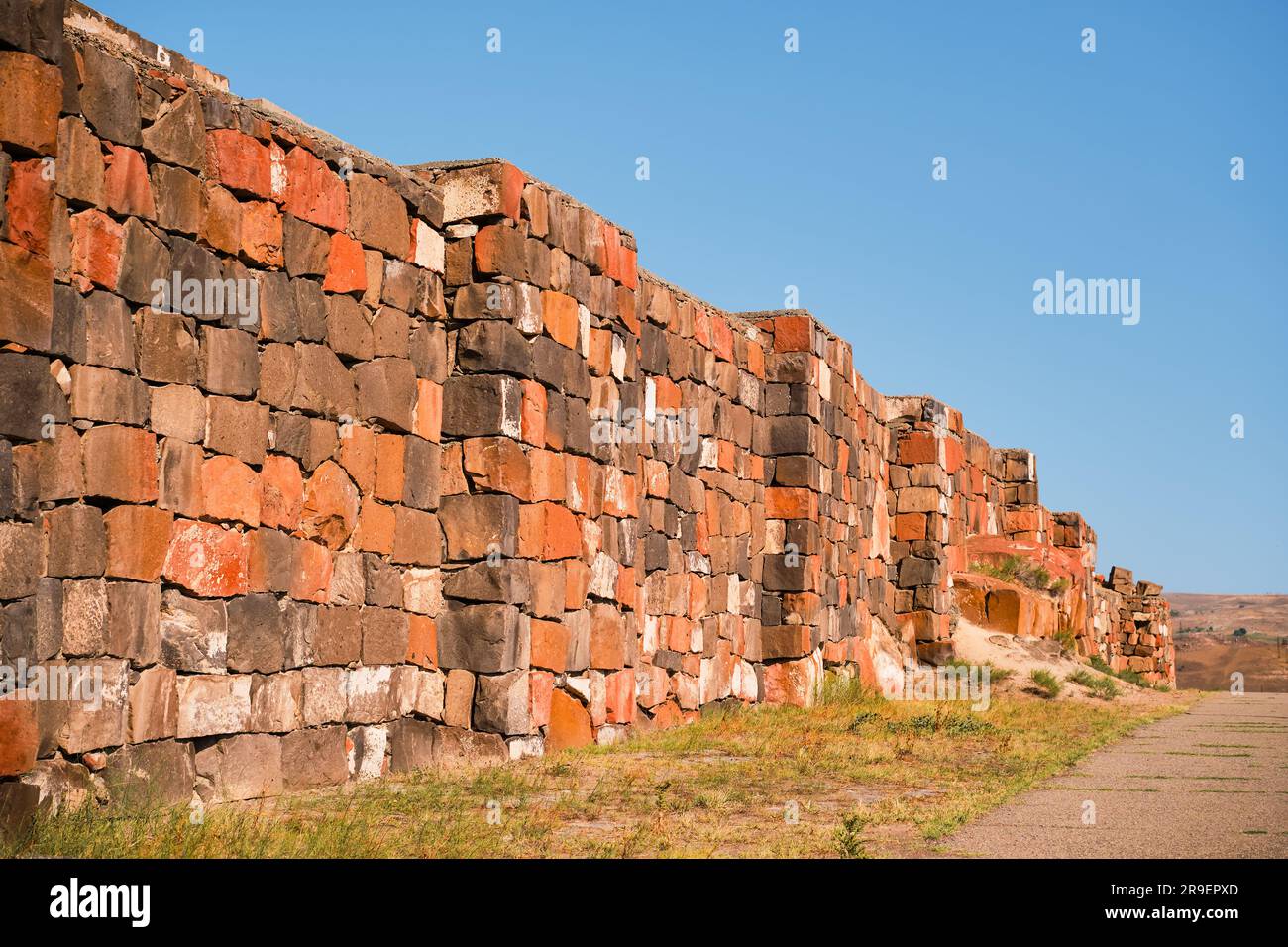 Restored walls of the ancient fortress of Erebuni, the kingdom of Urartu in present-day Yerevan, Armenia. Traveling to popular places, heritage of hum Stock Photohttps://www.alamy.com/image-license-details/?v=1https://www.alamy.com/restored-walls-of-the-ancient-fortress-of-erebuni-the-kingdom-of-urartu-in-present-day-yerevan-armenia-traveling-to-popular-places-heritage-of-hum-image556588997.html
Restored walls of the ancient fortress of Erebuni, the kingdom of Urartu in present-day Yerevan, Armenia. Traveling to popular places, heritage of hum Stock Photohttps://www.alamy.com/image-license-details/?v=1https://www.alamy.com/restored-walls-of-the-ancient-fortress-of-erebuni-the-kingdom-of-urartu-in-present-day-yerevan-armenia-traveling-to-popular-places-heritage-of-hum-image556588997.htmlRF2R9EPXD–Restored walls of the ancient fortress of Erebuni, the kingdom of Urartu in present-day Yerevan, Armenia. Traveling to popular places, heritage of hum
 assyrian palace royalty royal court servant slave gold wealth statue Assyria was a political state centered on the Upper Tigris Stock Photohttps://www.alamy.com/image-license-details/?v=1https://www.alamy.com/stock-photo-assyrian-palace-royalty-royal-court-servant-slave-gold-wealth-statue-21506577.html
assyrian palace royalty royal court servant slave gold wealth statue Assyria was a political state centered on the Upper Tigris Stock Photohttps://www.alamy.com/image-license-details/?v=1https://www.alamy.com/stock-photo-assyrian-palace-royalty-royal-court-servant-slave-gold-wealth-statue-21506577.htmlRMB6YKT1–assyrian palace royalty royal court servant slave gold wealth statue Assyria was a political state centered on the Upper Tigris
 Human-headed winged bulls from Sargon II's palace in Dur-Sharrukin, modern Khorsabad. In art, Lamassu were depicted with bodies of either winged bulls or lions and heads of human males. Dur-Sharrukin (Fortress of Sargon?), present day Khorsabad, was the Assyrian capital in the time of Sargon II of Assyria. Khorsabad is a village in northern Iraq, northeast of Mosul. The great city was entirely built in the decade preceding 706 BC Stock Photohttps://www.alamy.com/image-license-details/?v=1https://www.alamy.com/human-headed-winged-bulls-from-sargon-iis-palace-in-dur-sharrukin-modern-khorsabad-in-art-lamassu-were-depicted-with-bodies-of-either-winged-bulls-or-lions-and-heads-of-human-males-dur-sharrukin-fortress-of-sargon-present-day-khorsabad-was-the-assyrian-capital-in-the-time-of-sargon-ii-of-assyria-khorsabad-is-a-village-in-northern-iraq-northeast-of-mosul-the-great-city-was-entirely-built-in-the-decade-preceding-706-bc-image328354727.html
Human-headed winged bulls from Sargon II's palace in Dur-Sharrukin, modern Khorsabad. In art, Lamassu were depicted with bodies of either winged bulls or lions and heads of human males. Dur-Sharrukin (Fortress of Sargon?), present day Khorsabad, was the Assyrian capital in the time of Sargon II of Assyria. Khorsabad is a village in northern Iraq, northeast of Mosul. The great city was entirely built in the decade preceding 706 BC Stock Photohttps://www.alamy.com/image-license-details/?v=1https://www.alamy.com/human-headed-winged-bulls-from-sargon-iis-palace-in-dur-sharrukin-modern-khorsabad-in-art-lamassu-were-depicted-with-bodies-of-either-winged-bulls-or-lions-and-heads-of-human-males-dur-sharrukin-fortress-of-sargon-present-day-khorsabad-was-the-assyrian-capital-in-the-time-of-sargon-ii-of-assyria-khorsabad-is-a-village-in-northern-iraq-northeast-of-mosul-the-great-city-was-entirely-built-in-the-decade-preceding-706-bc-image328354727.htmlRM2A25RPF–Human-headed winged bulls from Sargon II's palace in Dur-Sharrukin, modern Khorsabad. In art, Lamassu were depicted with bodies of either winged bulls or lions and heads of human males. Dur-Sharrukin (Fortress of Sargon?), present day Khorsabad, was the Assyrian capital in the time of Sargon II of Assyria. Khorsabad is a village in northern Iraq, northeast of Mosul. The great city was entirely built in the decade preceding 706 BC
 Old view of Khorsabad (formerly Dur-Sharrukin: Fortess of Sargon), Antique Assyrian capital, North Iraq. Created by Flandin, published on Le Tour du M Stock Photohttps://www.alamy.com/image-license-details/?v=1https://www.alamy.com/old-view-of-khorsabad-formerly-dur-sharrukin-fortess-of-sargon-antique-image150198137.html
Old view of Khorsabad (formerly Dur-Sharrukin: Fortess of Sargon), Antique Assyrian capital, North Iraq. Created by Flandin, published on Le Tour du M Stock Photohttps://www.alamy.com/image-license-details/?v=1https://www.alamy.com/old-view-of-khorsabad-formerly-dur-sharrukin-fortess-of-sargon-antique-image150198137.htmlRFJMA375–Old view of Khorsabad (formerly Dur-Sharrukin: Fortess of Sargon), Antique Assyrian capital, North Iraq. Created by Flandin, published on Le Tour du M
 Construction of the palace at Dur-Sharrukin, Assyria, 713 BC by Sargon II of Assyria. Khorsabad, northern Iraq. Old 19th century engraved illustration, Le Tour du Monde 1863 1863 Stock Photohttps://www.alamy.com/image-license-details/?v=1https://www.alamy.com/construction-of-the-palace-at-dur-sharrukin-assyria-713-bc-by-sargon-ii-of-assyria-khorsabad-northern-iraq-old-19th-century-engraved-illustration-le-tour-du-monde-1863-1863-image357328308.html
Construction of the palace at Dur-Sharrukin, Assyria, 713 BC by Sargon II of Assyria. Khorsabad, northern Iraq. Old 19th century engraved illustration, Le Tour du Monde 1863 1863 Stock Photohttps://www.alamy.com/image-license-details/?v=1https://www.alamy.com/construction-of-the-palace-at-dur-sharrukin-assyria-713-bc-by-sargon-ii-of-assyria-khorsabad-northern-iraq-old-19th-century-engraved-illustration-le-tour-du-monde-1863-1863-image357328308.htmlRM2BN9KW8–Construction of the palace at Dur-Sharrukin, Assyria, 713 BC by Sargon II of Assyria. Khorsabad, northern Iraq. Old 19th century engraved illustration, Le Tour du Monde 1863 1863